#ios 26 developer beta 2 be like
Explore tagged Tumblr posts
Text
the tumblr app just crashed trying to type yeagh into the tags
fun 👍
1 note
·
View note
Text
Sideloadly iOS 26 – Install IPA Apps Without Jailbreaking
Apple’s App Store is full of great apps, but many iOS users want more freedom. Some want to try beta apps, emulators, or modded versions of popular apps. That’s where Sideloadly iOS 26 comes in.
Sideloadly iOS 26 is a tool that lets you install third-party apps on your iPhone or iPad. You don’t need to jailbreak your device. It’s easy to use and works with the latest iOS version. If you��re using iOS 26 and want more control over your apps, Sideloadly iOS 26 is the best option available.

Let’s learn more about how it works and why CydiaFree is the best way to get it.
What Is Sideloadly iOS 26?
Sideloadly iOS 26 is a sideloading tool for iPhones and iPads. It allows users to install IPA files (iOS app packages) that are not found in the App Store. This includes apps like emulators, screen recorders, and modified social media apps.
You can use Sideloadly iOS 26 on a Mac or Windows computer. It connects to your iOS device using a USB cable and signs the app using your Apple ID. The tool then installs the app safely on your device.
Why Use Sideloadly iOS 26?
There are many reasons why users choose Sideloadly iOS 26:
📱 You can install any IPA app you want
🛡️ No jailbreak needed
🎮 Access to apps like Delta, Instagram++, YouTube++, and more
🔒 Safe and does not harm your device
👨💻 Great for developers testing their own apps
💡 Simple and clean interface
If you want to customize your iPhone or run apps that Apple doesn’t allow, Sideloadly iOS 26 is the answer.
How to Use Sideloadly iOS 26
Here’s a quick guide to using Sideloadly iOS 26:
Download and install Sideloadly on your computer
Connect your iPhone or iPad via USB
Open Sideloadly and drag your IPA file into it
Enter your Apple ID and password (used to sign the app)
Click “Start” to sideload the app
Go to Settings > General > Device Management on your iPhone
Trust the app’s profile
Launch the app from your Home Screen
It only takes a few minutes. You don’t need to change any system settings or perform risky operations.
Is Sideloadly iOS 26 Safe?
Yes. Sideloadly iOS 26 is completely safe. It uses Apple’s official signing process to install apps. It doesn’t jailbreak or damage your device. You just need to trust the profile for the app to run.
Make sure you only use IPA files from trusted sources. Never download apps from unknown or unsafe websites.
Download Sideloadly iOS 26 From CydiaFree
The best and safest place to download Sideloadly iOS 26 is from:
👉 https://www.cydiafree.com/cydia-download-ios-26-1-2-3-4-5-6-7-8-9.html
This link gives you the latest version, full instructions, and trusted support. Whether you’re new or experienced, CydiaFree makes the process easy.
Why CydiaFree is the Best Way to Get Sideloadly iOS 26
There are many download sites out there, but CydiaFree stands out. It’s trusted by thousands of iOS users around the world. Here’s why it’s perfect for Sideloadly iOS 26:
✅ Fast and clean downloads
✅ 100% safe and virus-free
✅ Works with all iOS 26 devices
✅ Includes guides for first-time users
✅ No jailbreak needed
✅ Offers extra Cydia-like features
CydiaFree is the best way to download Sideloadly iOS 26 and start installing third-party apps in just minutes.
CydiaFree – A Great Cydia Alternative for iOS 26
Jailbreaking is harder now, and many users want a safer solution. CydiaFree brings the best parts of Cydia—tweaks, themes, and third-party apps—without needing to jailbreak.
With CydiaFree, you get:
🌟 Access to tweaks and themes
📦 Direct IPA downloads
🔧 Tools to manage sideloaded apps
🔒 A secure way to install apps
🧰 Full support for Sideloadly iOS 26
If you want to explore what your iPhone can really do, CydiaFree is your best starting point.
FAQs About Sideloadly iOS 26
Q: Does Sideloadly iOS 26 work on all iPhones? Yes, it works on all devices running iOS 26, including iPads.
Q: Do I need a developer account? No. You can use your free Apple ID, but apps will need to be reinstalled every 7 days.
Q: Can I get banned by Apple for using Sideloadly? No. Using Sideloadly iOS 26 is safe and does not break Apple’s rules as long as you use legal apps.
Q: Can I install hacked apps with Sideloadly? You can install modded apps and tweaked apps. Just avoid pirated content.
Q: Is CydiaFree needed for Sideloadly iOS 26? No, but CydiaFree is the best way to download Sideloadly iOS 26 and makes it easier with extra tools.
Final Words
If you want more freedom on your iPhone without jailbreaking, Sideloadly iOS 26 is your best option. It allows you to install apps that Apple doesn’t offer, from emulators to tweaked versions of popular apps.
The process is easy, safe, and quick. And when it comes to downloading, CydiaFree is the best way to get Sideloadly iOS 26. It offers everything you need in one place.
Start customizing your iPhone today with Sideloadly iOS 26 and CydiaFree. Your device will thank you for it.
0 notes
Text
Apple releases iOS 26 dev beta 2: Check new features, eligible iPhones
The second developer beta of iOS 26 brings refinements to Apple’s Liquid Glass design, new Apple Music widgets, and updates across core apps like Safari, Messages, and Wallet
0 notes
Text
Monument Valley




Monument Valley is an indie puzzle video game. It was developed and published by Ustwo Games. The player leads the princess Ida through the mazes of optical illusion and impossible objects while manipulating the world around her to reach various platform. Monument Valley was developed over ten months beginning in early 2013 based on concept drawings by company artist ken Wong. Its visual style was inspired by Japanese prints, minimalist sculpture and indie games windosill, Fez and swords and sworcey and it was compared by to M.C Escher drawings and Echochrome. The art was designed such as frame would be worthy of a public display. After a closed beta test, Monument Valley was released for ios an April 3, 2014, and was later ported to Android and windows phone. The game received generally favorable reviews. The praised its art and sound design, but noted its lack of difficulty and short length. It won 2014 Apple Design Award, was named Apple's best ipad game of 2014, and sold over two million copies January 2015 by may 2016 and sales of the game exceeded 26 million.
Two expansion titled Forgotten Shores and Ida's Red Dream were released in 2014 and 2015. A sequel, Monument Valley 2, was released for both ios and Android in 2017. Monument valley+, an Apple Arcade exclusive, was released April 2, 2021. A PC version under the title Monument Valley-Panoramic Edition was released on steam in July 2022. A third game is reportedly in development
In Monument Valley, player character Princess Ida journeys through mazes of optical illusions and impossible objects, which are referred to as "sacred geometry" in-game, as she journeys to be forgiven for something. The game is presented in isometric view, and the player interacts with the environment to find hidden passages as Ida progresses to the map's exit. Each of the ten levels has a different central mechanic. Interactions include moving platforms and pillars and creating bridges. The player is indirectly cued through the game by design elements like color, and directly cued by crow people, who block Ida's path. Critics compared the game's visual style to a vibrant M. C. Escher drawing and Echochrome. The game includes a camera mode where the player can roam the level to compose screenshots. It includes filters similar to those of Instagram.
0 notes
Text
Download Latest Xcode Dmg
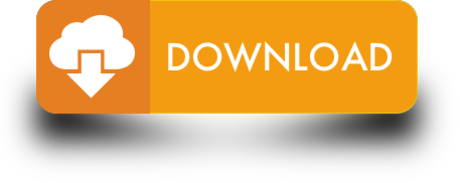
Xcode 4 Download
Download Xcode 11 For Mac
Xcode 8 Dmg

Free Dmg Download; Download Xcode for macOS 10.14.4 or later and enjoy it on your Mac. Xcode includes everything developers need to create great applications for Mac, iPhone, iPad, Apple TV, and Apple Watch. Xcode provides developers a unified workflow. Sep 29, 2018 Download macOS Mojave 10.14 free latest offline DMG image setup. The Mac OS X Mojave 10.14 is the latest 2018 Mac OS release providing a wide range of powerful features and enhancements. Sep 26, 2018 Here we share the download of Original MacOS Mojave 10.14.APP, DMG, ISO, and Bootable USB image.This is the official installation. Mac users interested in Xcode for mac 10.6 generally download: Xcode 11.3 Free. Xcode is the complete toolset for building Mac OS X and iOS applications — and with Xcode 4, the tools have been redesigned to be faster. 8,098 — Switching languages in System Settings in simulator itself didn't seem to work.
Additional Downloads
Get the latest beta and older versions of Xcode. To view downloads, simply sign in with your Apple ID. Apple Developer Program membership is not required.
Beta Versions of Xcode Command Line Tools & Older Versions of Xcode
Videos
See the latest advances in Xcode presented at WWDC and other events.
Help and Support
Get step-by-step guidance on how to use Xcode to build, test, and submit apps to the App Store.
Xcode Help Guide Xcode Support Page
API Reference and Sample Code
Browse the latest documentation including API reference, articles, and sample code.
Discussion Forums
Ask questions and discuss development topics with Apple engineers and other developers.
Xcode is the tool developers use to build apps for the Apple ecosystem – MacOS, iOS, and all things Apple.
This guide will walk you through how to successfully install Xcode onto your Mac, from start to finish.
Here are some handy tips to know before you get started:
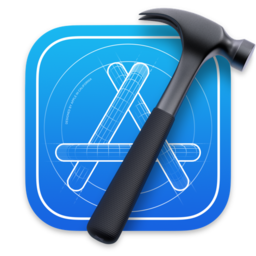
Xcode only runs on a mac. If you are on a PC, sadly you won't be able to use Xcode.
You'll need a good, stable internet connection. The latest version is around 8 gigabytes in size.
Be sure to have at least 30 gigabytes of free space on your computer. The latest .xip file (v11.4.1 at the time of writing) is ~8 gigabytes zipped. When you unzip it, that's another 17 gigabytes. Then you'll need the command line tool, which is yet another 1.5 gigabytes.
Here's an overview of the steps to install Xcode
Download Xcode
Install the command line tool
Open the new version
Delete files
Note that I have listed some Terminal commands in the steps below. These commands can be typed into your present working directory. This means that you don't need to navigate to any particular folder.
If you really want to, you can first type cd before typing the commands in the below steps. This will return you back to the home folder.
Step #1: Download Xcode
There are two ways to do this. For the latest version and a theoretically 'easy' installation, you can use the App Store. I don't recommend this option.
I prefer to use the developer site. This comes with the bonus option of being able to download any version you'd like.
Option #1: Download via the App Store for the latest version (not my preferred option)
In theory, this should be a seamless and pain-free process. But if the installation fails for any reason on the last step, it is very hard to troubleshoot.
There are a few reasons for failure, and no easy way to know which is the underlying cause. If you do encounter a failure, you will need to re-download the entire file again each time you try to fix the failure. As the latest version is 8 gigabytes, I didn't much enjoy this approach.
But if you're feeling brave, here are the steps:
Open the App Store on your mac
Sign in
Search for Xcode
Click install or update
Option 2: Download via the Developer site for a specific version (my preferred option)
Head to the 'more' section of the Apple developer website
Sign in with your iTunes account id
Type in the version that you'd like, and download the Xcode_x_x_x.xip file. Keep in mind that Xcode 11.4.1 is 8 gigabytes, so this will take awhile depending on your internet connection.
Once the file is downloaded, click on .xip to extract it. Your laptop will extract it to the same folder you downloaded it to. This extraction process is automatic. You don't need to do anything more after you click on the .xip file. This step will take a few minutes.
(Optional) Once extracted, rename the application to “Xcode11.x.x” if you are using multiple versions.
Drag application to the Applications folder
(Optional) Set the new Xcode version as the default. Open Terminal and type sudo xcode-select -switch /Applications/Xcodex.x.x.app . Replace x.x.x with the version number. For example: Xcode11.4.1.app. You will need to enter in your computer admin password. I'm pretty sure this will update the default Xcode version for all users on your computer, so best to check with other users first
Step #2: Install the command line tool (CLT)
If you have multiple users on your computer, you will need to update the CLT for each user.
Download .dmg
To update the CLT, go to app developer website and download the command line tool .dmg.
If you have never installed Xcode before, you may be able to update with your Terminal by typing in xcode-select --install instead of visiting the developer website.
But if you have an existing version of Xcode installed on your machine, you'll probably see this error:
This means you'll need to go to the developer website instead.
Installing the CLT
When the .dmg has finished downloaded, double click the file to open it. This will open a little window that looks like this:
Double click the box and follow the prompts to install the CLT. It will take a few minutes to complete.
It may ask you at the end of the installation whether you want to move this to the trash bin. When it does this, it's talking about moving the .dmg file to the trash bin. Since you should no longer need this file. I always say yes to this.
Step #3: Open Xcode
Open the Applications folder and open the new version of Xcode. If you renamed Xcode, make sure you open the correct application
Xcode may prompt you to install additional components. Click install. This will take a few minutes.
Xcode 4 Download
While it's installing, check that your default Xcode version is the one you just downloaded:
Download Xcode 11 For Mac
Open Terminal
Type brew config
You should see “CLT” and “Xcode” versions, as well as everything else. This should reflect the version that you have just downloaded. In my case, I downloaded Xcode 11.4.1.
Once the components are installed, Xcode will launch. You should be able to pick up your old projects and continue where you left off seamlessly*.
*Note that if you use any proxy tools, such as Charles, you will need to re-install those certificates in your simulator again.
Xcode 8 Dmg
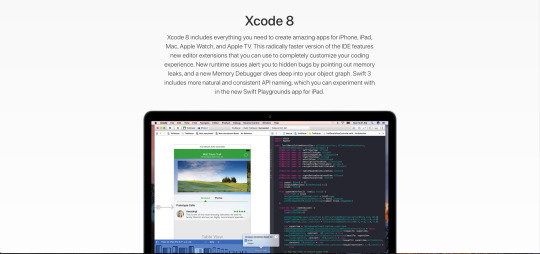
If you encounter any errors while trying to build or run a project, check which device you are trying to launch. The new version may not remember the device you were using before. If so, click on the device and choose 'Add additional simulators' from the drop down menu to add the device you want.
Step #4. Delete the files
If you don't need the older versions of Xcode on your computer, you can uninstall them and get some hard drive space back.
You can also delete the .xip file of the version you just downloaded, as well as the CLT.dmg file.
That's everything. I hope this has helped you successfully install Xcode. Have fun with it!

2 notes
·
View notes
Text
RECENT NEWS, RESOURCES & STUDIES, May 24 2020

Welcome to my latest summary of recent ecommerce news, resources & studies including search, analytics, content marketing, social media & Etsy! This covers articles I came across since the early May report, although some may be older than that. Due to a need to get my taxes filed, and a continued busy jewellery business, I don’t expect to be able to do another update for a few weeks. You can follow me on Twitter for important breaking news, though!
Have any topics you would like to see me cover in more detail? Drop me a line here on Tumblr, or email me through my website.
TOP NEWS & ARTICLES
Small businesses can survive the pandemic and beyond, if they learn to provide what customers are now looking for. From desks to 3-D printed face shields, to including toilet paper on your takeout menu, to moving online, acting quickly has given these businesses hope. ABC also did a piece on this topic. [text & video; mentions Etsy & masks] Here’s another article discussing adapting to pandemic ecommerce “new normal”, with interviews with staff from Etsy, TechStyle and Zulily.
Ecommerce is about to get way more competitive (it probably is already), & arguably the retailers who will succeed are the ones who already put plans in action, including advertising plans. (mentions Shopify, Google Shopping & Etsy.)
Facebook and Instagram will now have “Facebook Shops”, which are free to set up. Sounds like it will be a slow rollout, though. Many take this as direct competition for marketplace sites such as Etsy, but it will probably also have a large impact on small website builder sites such as Indiemade.
ETSY NEWS
Etsy’s first quarter for 2020 was good, but April was astonishing by any standards; I covered it all here.
Etsy Payments will soon be available to sellers in Turkey, Malaysia, & Mexico. This will likely be welcome news to sellers in Turkey in particular, who haven’t had an easy way to accept payment for Etsy orders since PayPal left Turkey a few years back. It looks like this move will be optional at the moment for those 3 countries, unlike those of us who are forced to use EP if it is available in our countries.
Etsy gave some listing credits and ad credits to shops who had substantially lower than normal sales in late March through April; the credits don’t kick in until July, though.
Etsy is beta-testing a new listing video tool. You can join here; if you want more info first, here are some details. Note that the videos must be quite short, and will not include sound.
Etsy is still getting some good traction from the face mask initiative: “I would argue they were just in the right place at the right time," says Kodali. "When you think of who is able to consolidate the power of a million sewers in the country, the only answer is Etsy." However, they are also getting some criticism for masks taking forever to arrive, if at all. The slow customer support is also annoying many of these new customers that the CEO was so happy to attract, with little to no response from Etsy.
The Wall Street Journal did a well-received article on people buying food (mostly baked goods) on Etsy [paywall]. Other sources have picked it up, although some are a bit skeptical about safety.
More trend info directly from Etsy: first, summer at-home ideas with Dayna Isom Johnson [podcast links with transcript]. It also covers what to do for socially-distanced celebrations. “[P]eople are taking what they would typically do for a birthday, but then doing it virtually. So many people love paint night parties and I've actually seen quite a few paint kits that Etsy sellers are creating. It’s a wonderful way to celebrate your birthday and still have that experience of expressing your creativity and having fun with your friends, but just through a screen.” Also, “tie-dye is blazing hot right now.”
Second, craft supply sellers get their own trend article for a change. Supply searches close to doubled in April, with “346% YoY increase in searches on Etsy for “diy”. Many buyers are making their own masks with supplies from Etsy; “2,089% YoY increase in searches on Etsy for “elastic”. Do read the whole article if you want to spin your shop in this direction, as there is a lot of good info included.
SEO: GOOGLE & OTHER SEARCH ENGINES
Google pushed out a core algorithm update starting May 4, which finished rolling out on May 18. It seems fairly large, maybe the biggest in some time, and may have hit more areas than other recent core updates. They did take some criticism for releasing it during a pandemic. Possible targets aren’t agreed on yet by the people tracking it, but could include cryptocurrency, travel, real estate, health, tech, finance & dating. Or maybe we shouldn’t rush to pick winners & losers so quickly? News media changes may be affected by the regular algorithm reaction to people reading a lot more news these days, and some ecommerce companies had a boom that could affect their rankings. This article discusses Etsy among other companies, who might have benefitted from the update. [I’m not sure on the Etsy complaints, as I have been seeing multiple links for some searches for well over a year now.]
Link building is generally the hardest part of Google SEO, in part because you aren’t allowed to do any of the obvious things that might get you easy links. Anyone confused about the rules & the benefits should check out this guide for 2020.
While you can learn a lot from general SEO guides, if you have a Shopify site, this guide provides some specific SEO tips.
LinkedIn managed to de-index itself from Google on May 6, at least for the United States. Here’s one theory. Well-paid webmasters for major internet companies can still screw up, it turns out.
(CONTENT) MARKETING & SOCIAL MEDIA (includes blogging & emails)
If you are one of those organized marketers who plans their campaigns ahead of time, here are 5 content marketing ideas for June.
With so many people not working as much as usual, this might be a good time to start a podcast. Gizmodo has compiled instructions on doing it cheaply.
The best time to send an email depends on the purpose of the email. For example, “General site traffic emails have always been most effective mid-week — mid-morning or mid-afternoon. Mondays and Fridays tend not to perform as well” while “A general awareness campaign can be sent almost any time to be effective.”
Refreshing your evergreen content can be more productive than producing new content. That has some really good ideas for many types of businesses produce
Facebook bought Giphy, and while it will still be available to people without Facebook-owned accounts, it will be integrated directly with Instagram.
Instagram is testing new fonts in its Stories feature.
Twitter is enabling users to see how many people quoted a tweet, but so far only on IOS. They also have a new test where you control who can reply to your tweets.
LinkedIn is rolling out both video events and polls, but maybe it is too late to get a big bump from either change?
ONLINE ADVERTISING (SEARCH ENGINES, SOCIAL MEDIA, & OTHERS)
Online advertising can be expensive; here are some stats on the cost of various search engine ad clicks as well as a bit on social media.
Google Merchant accounts now let you compare your prices to other sites and also look at trends in clicks.
Here is a good brief overview of the new free Google Shopping listings, including the 3 main reasons the author believes Google made this change. Here is another much longer overview, with screenshots for those not in the US, and info on how to set this up for your website. The PayPal integration is now available.
Online advertising clicks seem to be bouncing back from the worst of the pandemic, according to several sources, including this one. It is still far too early to tell if this will last, however.
YouTube has re-conceived its premium ad program, now called YouTube Select.
If you have ads that slow down people’s computers or drain batteries by being too “resource-heavy”, note that Chrome is going to begin blocking those in August. “Chrome will filter ads based on the following thresholds: 4MB of network data or 15 seconds of CPU usage in any 30 second period, or 60 seconds of total CPU usage.”
STATS, DATA, OTHER TRACKING
Seeing all hits to one page in Google Analytics is a lot easier if you exclude the URL query parameters (but note that sometimes they are useful, such as for various pages on Etsy.) If you like the idea of filtering your GA results in general, here is another tutorial on that.
If you want to do A/B testing on your website, here is a fairly straightforward introduction to Google Optimize, which is free to use.
ECOMMERCE NEWS, IDEAS, TRENDS
Many online companies had a good first quarter despite the pandemic, including Shopify, which beat income estimates and saw its stock rise 5% after its first quarter report. “New stores created on the company’s online platform jumped 62% between March 13 and April 24 as many brick-and-mortar businesses migrated online.”
Shopify rolled out software that allows its users to more easily do curbside pickup orders. “...Shopify was already in the process of redesigning its POS before the coronavirus, but decided to accelerate the development of a few new features, namely fulfilling curbside pick-up orders and home delivery. Shopify said that by the end of April, 26% of its merchants with a brick-and-mortar presence were offering local delivery or buy online, pickup in-store, compared to 2% in February.”
Rolling out for the US first, Shopify is also getting into financial products, offering a new debit card which you can use to receive your sales income on the same day you earn it. Shopify Balance can be described as “a merchant account with no fees and no minimum balances.” It’s also setting up an instalment plan feature for customers.
Also new with Shopify: a Pinterest app for turning all your products into shoppable pins.
An Amazon VP quit - very publicly - over the company firing several whistleblowers and labour organizers. “Amazon declined to comment.” The company is taking heat for those issues as well as poor management of and information about how many employees have tested positive at various warehouses. Several employees are known to have died of COVID-19 so far.
Amazon has extended its order performance suspension exceptions for the pandemic to May 31. Which is a good thing, because it seems that buyers are leaving more bad feedback than ever before [soft paywall] “More than 11 percent of reviews left for sellers in the past 30 days are negative. That’s nearly twice the level of frustration vented by shoppers regarding Amazon’s third-party sellers during the holidays, when customer anxieties spike over not getting presents on time”. eBay extended some seller protection changes until July 19. [note: if you sell on these platforms outside of the US, lease check for your own country’s rules, as some of them are different.]
Amazon Handmade sellers from the US got a boost from a new local makers page and the accompanying blog post. [I was unable to find any similar promotions for other countries; seems like a missed opportunity]
Buyers in Canada and the US are trying to get class-action lawsuits certified against Amazon for their policy preventing/discouraging its vendors from offering lower prices elsewhere. This article includes the US class action complaint paperwork.
If you are wondering about Prime Day, Amazon is apparently going to try for September, but there is no official announcement yet.
eBay will be changing the fee structure for sellers using managed payments, including charging one fee on the entire transaction instead of separate commission & processing fees.
USPS, complaining of deficits and being pressured by Trump, is reportedly reviewing its package delivery contracts with large companies such as Amazon. “According to the Washington Post, over the last few weeks the USPS has been seeking bids from consulting firms to reexamine what the agency charges companies like Amazon, UPS, and FedEx. Contracts are generally reviewed on a yearly basis, and analysts have repeated warned that suddenly raising package prices that drastically would cause more bad than good, not just for the USPS or Amazon, but for small businesses and individuals too.”
Square has created an easy online checkout option that works without being connected to a website/shop. (US only)
BUSINESS & CONSUMER STUDIES, STATS & REPORTS; SOCIOLOGY & PSYCHOLOGY, CUSTOMER SERVICE
Google has introduced a new Trends-like tool that covers recent top product searches by the amount of growth. Yes, it is free!
Gen Z wants to see “fun and exciting advertising” during the pandemic, because they are bored. They are apparently not really fond of “things are different now” ads. Also: “A survey taken seven weeks ago indicated that younger consumers were more likely than older adults to say they wanted to see purpose-driven advertising that showed how companies were helping others.” Actually, Gen Z isn’t alone in wanting something different from commercials right now
Consumers want to see companies taking positive action and supporting their employees during the pandemic - and claim they will remember who did a good job, so they know who to support with purchases.
Not surprisingly, mobile usage is up during the day time since the pandemic was declared, and people are also staying online later during the week. Web browser usage is up, and more serious news and information is getting attention.
There will likely be many more bankruptcies as the effects of COVID-19 ripple through the economy, but some businesses don’t have enough cash flow to go bankrupt. [text & video]
Canadian retail sales were down 10% in March compared to 2019, but many things went up, including general merchandise stores (6.4%) and online retailers (40%). Note that the online numbers didn’t include sales made from Amazon.com or Amazon.ca and delivered in Canada, so ecommerce was actually higher than that. In the US, March retail sales were down 8.7%, but April looks like it turned around for many ecommerce sites.
MISCELLANEOUS
So-called “cookie walls” are not enough to comply with the EU’s privacy laws. “[I]n order for consent to be legally valid under Europe’s General Data Protection Regulation (GDPR) there are specific standards to meet: It must be clear and informed, specific and freely given. Hence cookie walls that demand ‘consent’ as the price for getting inside the club are not only an oxymoron but run into a legal brick wall.”
Website layouts (and even other elements) are starting to look like each other more & more.
1 note
·
View note
Text
Week 267
Happy Thursday! So many things happened this week that it's hard to choose what to write about here. But I'll focus on the things that will actually have more impact our jobs as iOS developers and choose not to write about the FaceTime bug or the latest Facebook scandal 🙃.
Last week, right after sending issue 266 of our newsletter, Apple announced the first beta of Xcode 10.2, which is very interesting for multiple reasons: first of all, it comes with Swift 5. This has a major impact on app thinning, because Swift apps will no longer include all the linked libraries, which will result in smaller apps. As found by Patrick Balestra, the difference is quite noticeable. And migration to Swift 5 seems to be quite smooth so far, but this could also be because the much talked about Result didn't make it to the first beta of Xcode 10.2. Besides those, other noteworthy changes are fixing the Asset Catalog issue that made apps built with Xcode 10 crash on iOS 9 and adding a dark Xcode for light macOS option. Check the full release notes if you want to learn about all the new things. Or read Artem Loenko's article: Xcode 10.2, macOS Mojave 10.14.4, iOS 12.1 and other betas.
In other news, iOS Goodies has had a Patreon running for the last almost 2 years. I want to thank all our patrons. Special thanks to Seth Cheeks for supporting us. As I have already informed our patrons, I have taken the decision to close down our Patreon. This will not affect iOS Goodies in any way, and we will continue to send our newsletter every Thursday.
We've a lot of articles this week, not all of them could make it in the newsletter. If you want, you can read all of them on our GitHub
Articles
Debugging Tips & Tricks, by @dagostin
Alamofire vs URLSession: a comparison for networking in Swift, by @twannl
Adding Undo and Redo support to iOS, by @raulriera
How to use the result type to handle errors in Swift 5, by @tiborbodecs
Encapsulating Domain Data, Logic and Business Rules With Value Types in Swift, by @khawerkhaliq
Adding the finishing touches to 3D models in Xcode, by @BashaChris
Debugging iOS network traffic, by @igorkulman
Creating DSL in Swift, by @mecid
Tools/Controls
LayoutInspector - allows to debug app layout directly on iOS devices: inspect layers in 3D and visible views attributes like we do in Xcode view debugger, by @iWadedunk
Business/Career
5 UX and Mobile Marketing tips to get users hooked to your app, by @HandesUp
The Guide to Remote Work That Isn't Trying to Sell You Anything, by @stephsmithio
Why Are Young People Pretending to Love Work? by @eringriffith
Videos
Scraping Instagram using Swift, by @martinlasek
How to Gain Confidence as a Software Developer, by @seanallen_dev
iOS Conference SG 2019, by @iosconfsg
Credits
Ihor Savynskyi, LisaDziuba, mecid, pmusolino, rbarbosa
2 notes
·
View notes
Text
Rush team unblocked

#Rush team unblocked for free#
#Rush team unblocked mac os x#
#Rush team unblocked update#
#Rush team unblocked android#
#Rush team unblocked mac os x#
Now you can get the newest Rush Team news right in your Mac OS X Dashboard. Game Description: Last Mortem Early Access Trailer Free Multiplayer Fps Game Fps Games Fps Games. Rush Team is a free first person shooter online multiplayers game. There are tons of servers for the Krunker and it is jam-packed and filled with players.
#Rush team unblocked android#
Gaming Android Games Games First Person Shooter Games In Browser Fps Games Multiplayer - All the games included in the list require. Its a fps you play in your browser window. Here are some Suggestions for Game Ideas Features that we look for. 8-bit homage to the most innovative shooter ive played in years. Lets play unblocked games multiplayer browser games. Play: Rush Team Rush Team Is A Free Beta Stage Browser Based Multiplayer First Person Shooter Game Built First Person Shooter Games First Person Shooter Team Games Game Type Browser Game Multiplayer with Friends Time Gunners - Free Multiplayer Browser First Person Shooter Game. Rush Team Rush Team Is A Free Beta Stage Browser Based Multiplayer First Person Shooter Game Built First Person Shooter Games First Person Shooter Team Games. Game Description: A Gameboy style FPS get a feel for what FPS might look like on Gameboy in 1991. Rush Team Rush Team Is A Free Beta Stage Browser Based Multiplayer First Person Shooter Game Built First Person Shooter Games First Person Shooter Team Games In Browser Fps Games Multiplayer - Shoot guns at enemies from all over the world and win matches in multiplayer battles. Ad Take your chance to fight by land air and now by sea.
#Rush team unblocked for free#
Related game: multiplayer and in browser fps games multiplayer Ad Play Crossout for Free build endless unique Vehicles and ride them. This game has received 70 votes, 51 positive ones and 19 negative ones and has an. First, demonstrate your sniper gaming abilities by eliminating all of the terrorists. Birdy Rush belongs to Arcade and it is often associated with Animal Games. You must join the Rush Team squad to confront the terrorists attack in such a case.
#Rush team unblocked update#
Krunker Io Game Play New Update 26 March Slitherio Crazy Games Slitherio Game Fps Browser Games Unblocked Krunker is a fast-paced pixelated first-person shooterIn this game players drop into a pixelatedShell Shockers Unblocked is an online first-person shooter game developed in early August 2017. Rush Team is an online first-person shooter with stunning 3D visuals and many players on several servers worldwide. Creating your own Assets Animations Sounds will earn you bonus points when it comes to the rating of your Game. PC and mobile multiplayer games in this category are designed to play from the above 2 players and offer entertainment that you cant enjoy playing classic free offline games. A slight error can result in the ball falling into the deep or red blocks, and you must replay the game. The real-time gameplay is responsive, requiring just minor modifications to the player's motions.Play game in browser in browser fps games multiplayer works on all browsers. Try to avoid obstacles, and adjust for gravity.Try to keep the ball steady and turn the ball in time.Try to keep the ball stay in the middle of the track at all times.Obstacles and slopes keep changing, becoming more difficult and unpredictable.Platforms: Now is available through a web browser. You can practice hundreds of times to avoid colliding with obstacles while allowing the ball to continue on the slope. You will enjoy this game if you prefer fast-paced platform games.ĭeveloper: This game was developed by Rob Kay and is suitable for players of all ages! This game is both exhilarating and challenging to play. The longer you keep the ball on the course, the faster the ball will be rolling. Control your ball rolling on the course's complicated, which has many slopes and red obstacles. You have to use the keyboard arrow keys to start playing the game. With simple control, high-speed gameplay. Your goal in this running game is to drive the ball as far as possible to get a high score. See how far you can go in this endless course. Slope game is a fantastic speed run game where you can drive a ball rolling on tons of slopes and obstacles.

0 notes
Text
September 21, 2018
News and Links
Protocol
[SNARKs] Toward ~500 tx/sec through mass tx validation
[ewasm] Latest Ewasm call
[Eth 2.0] Prysmatic’s latest implementation update: proposer & attester responsibilities, RPC validator interactions and minimal beacon chain processing & fork choice. Chose Bolt for database.
[Eth 2.0] Notes from last Eth 2.0 implementers call.
[Eth 2.0] Sigma Prime introduces its Lighthouse Eth 2.0 client
[State channels] Latest state channels call
[State channels] Learn State Channels, similiar to Learn Plasma
[Plasma] snapp - fully verified plasma chain using SNARKs and BarryWhiteHat’s roll_up
[Plasma] Enabling Faster Plasma Exits - NFT collateralization
[Plasma] Data Availability Solution for Plasma EVM without Confirmation
[Plasma] Quark–gluon Plasma - verified Plasma chain without confirmation signatures
[Plasma] Plasma Cash Defragmentation
[Plasma] Plasma Cash Minimal Atomic Swap
[Plasma] The current state of Plasma (before this week anyway!) by Kevin Zhang
[Plasma] Latest Plasma implementers call
A suggestion: if you want to work in this industry, publishing notes on any of these calls (Plasma, Ewasm, Eth 2.0, state channels, etc) is a great way to build knowledge and reputation.
Stuff for developers
Parameterized transaction reviews for when you want to decide which signers you want to approve different types of transactions
hosted Eth nodes and load balancing
Deconstructing Solidity, pt 5: function bodies
Solidity capture the flag pt 4 challenge, with pt 3 writeup
Sigma Prime’s Mehdi Zerouali: ‘breaking smart contracts for fun and profit’ slides
event logs parser
ethjs-abi for use in BigQuery, to decode Ethereum event logs
Ethereum in Google’s BigQuery: how we built this dataset
Ameen Solemaini video code walk through of Moloch DAO
Using APM to replace centralized package managers
Implementing Harberger tax deeds
Zymbit and Oaken blockchain security module available for pre-order for $47. i2c, Raspberry Pi ready. Ships mid-October
Registration open for next ConsenSys Academy cohort. Zastrin also just released an NFT/ERC721 course
RuntimeVerification’s formal verification spec in K of ERC777
Releases
Parity v2.1.1 beta and v.2.0.6 stable. Parity 1.x end of life.
Ecosystem
Multi-Collateral Dai: the code is formally verified and ready. Check it out on Kovan.
Avsa’s Universal logins working demo: first code release
Beltran on UX for mass adoption
Wyohackathon submissions and winners. EthBerlin winners. Also Hack the North Ethereum submissions
What Eth 2.0 layer 1 scalability will look like, by the numbers
TurboGeth is in private beta, per Rachel O’Leary’s interview with Alexey Akhunov
MEWConnect iOS app is out from My Ether Wallet
Ethfinex Trustless - non-custodial trading using Bitfinex order book, settlement on-chain
Governance and Standards
EIP1418: blockchain rent proposal
ERC820 pseudo-introspection registry is in last call
ERC1412: Batch Transfers For Non-Fungible Tokens
ERC1410: partially fungle token
ERC1417: poll standard
Nick Johnson had a chat with Kristy-Leigh Minehan and switched to supporting ProgPOW. Currently, there’s a 20x increase in processing over ethash in benchmarking, though Minehan says that’s because the CPU code is currently just a copy of the GPU code
Tokensoft on its ERC1404: simple restricted token standard
Project Updates
CasinoFair will be the first live FunFair casino later this month. Available in Canada, Switzerland, Finland, Norway and Thailand. Signup for free FUN
Raiden update on mainnet launch. Testnet release: v0.10.0
Augur app v1.5
Streamr helping build a nationwide traffic map in Georgia
WindingTree’s summer demo release
Santiment’s daily active addresses and Github commit data is free.
Grid+ is live with its first electricity customers
Dapped launches with dapp game reviews
Intro to the Golem marketplace during Brass
1.25m Loom (~110kUSD) to run a LoomNetwork PlasmaChain validator
Interviews, Podcasts, Videos, Talks
Two great Blockcrunch podcasts on state channels: Connext’s Arjun Bhuptani and Celer Network’s Mo Dong
EthBerlin videos
Golem, Status, Raiden UX talks from their meetup at EthBerlin
Linda Xie with Laura Shin
First episode of Around the Block documentary
An interview with Conrad Barski
Latest Open Source Block Explorers call
Zero Knowledge Summit videos
Hudson Jameson on Zero Knowledge
Tokens / Business
Chart: staker rewards and total inflation in Eth 2.0
Polymath on using partially fungible tokens from its security token standard for gaming
Claims curated registries: reputation development
Bonding curves as funding mechanisms
Polkadot/web3
Jack Platts: state of the Polkadot ecosystem. Polkascan explorer is live
GRANDPA block finality in Polkadot
Buzzfeed published a sensationalist hit piece on Gavin Wood over a short story he wrote years ago. His response. I read the story years ago; ‘twas obviously fiction.
Cloudflare now runs an IPFS gateway. How they built it e2e
General
15 of the world’s largest banks and trading firms start Komgo to build a commodity trading platform on Ethereum.
Airbus announced an ERC721 framework for charities to take donations
Rep Emmer (R-MN) unveils blockchain-friendly bills to clarify tax with regard to forks and not require miners to register as MSBs (which would be a truly asinine requirement)
NY AG claimed that Coinbase was doing its own trading. Actually, 20% of Coinbase exchange volume comes from Coinbase’s retail. It doesn’t even have an OTC desk.
Putting a Syrian airstrike early warning system on Ethereum for data transparency
SEC Commissioner Peirce speech on being CryptoMom
Blockchain futurism from John Wolpert: sidechains for fun and profit
David Chaum says he has built a better Bitcoin
A Bitcoin bug would have allowed inflation. It was discovered by a Bitcoin Cash developer
Dates of Note
Upcoming dates of note:
September 21-23 - EthAtlanta
Sept 29 - Oct 1 - Ethfinex’s governance summit (Lugano)
Oct 5-7 - TruffleCon in Portland
Oct 5-7 - ETHSanFrancisco hackathon
Oct 8 - Settle virtual hackathon
Oct 11 - Crypto Economics Security Conf (Berkeley)
Oct 12 - Non-fungible summit(SF)
Oct 22-24 - Web3Summit (Berlin)
Oct 24-25 - Winding Tree hackathon (Prague)
Oct 26-28 - Status hackathon (Prague)
Oct 28-30 - Ethereum Magicians Council of Prague
Oct 29 - Decentralized Insurance D1Conf (Prague)
Oct 30 - Nov 2 - Devcon4 (Prague)
Nov 2 - MetaMask, Mist, imToken and Status to stop injecting web3
Nov 3-4 - Enterprise Ethereum hackathon (Prague)
Dec 7-9 - dGov distributed governance conf (Athens)
Dec 7-9 - ETHSingapore hackathon
Feb 15-17 - ETHDenver
If you appreciate this newsletter, thank ConsenSys
This newsletter is made possible by ConsenSys, which is perpetually hiring if you’re interested.

I own Week In Ethereum. As such, editorial control has always been 100% me. If you're unhappy with editorial decisions, feel free to tweet at me.
Shameless self-promotion
Link: http://www.weekinethereum.com/post/178351920908/september-21-2018
Most of what I link to I tweet first: @evan_van_ness
Did someone forward this email to you? Sign up to receive the weekly email (box in the top blue header)
3 notes
·
View notes
Text
AAAAAAAAAAAAAAAAAA
ios 26 developer beta 2 be like:

our muscle memory;;;;;;;;;
2 notes
·
View notes
Text
Mac Os Sierra Download Link
Macos High Sierra Download Link
Mac Os Sierra Direct Download Link

Amadeus pro mac download. The Mac OS sierra stands thirteenth in the Mac OS series. Mac OS sierra launched in mid-2016 made a drastic entry into the market after the OS X. Mac OS sierra made a revolutionary shift from the recent trends in the Mac OS history. The Mac OS series had some issues when it came to the graphical user interface which was frowned upon by many Apple users. The Mac OS sierra broke the ice with its release proving to be the best in class in terms of graphical user interface as well as hardware interfacing.
The Mac OS sierra beta version had the best compatibility results compared to all other OS released by apple in 2016. The Mac OS sierra gained the trust of the end-users with the addition of Siri and Apple pay support in safari.
Just like Windows, as you can install two operating systems side by side, you can also install macOS on a single Mac like macOS Sierra and macOS Catalina. Applocker mac download. So let’s download macOS Sierra DMG file. Download macOS 10.12.6 Sierra Final Version (16G2136) September 26, 2019. If you are a Mac users, so you can download the macOS High Sierra 10.13 from App store but if you are PC user then you’ve got the chance to do it from the guide here. In our previous article, we downloaded the macOS High Sierra VMware Image. Legacy Releases. DisplayLink USB Graphics Software for macOS. DisplayLink USB Graphics Software for Mac OS X and macOS High Sierra 10.13, Sierra 10.12, El Capitan 10.11. Release: 4.3.1 10 Oct 2018.
License Official Installer
Zoom is a free program for Mac that belongs to the category Chat-instant-messaging, and has been developed by Zoom Video Communications Inc. Zoom conference download mac. Note: For Mac High Sierra (10.13.x), you will need to click on Allow too. Click the lock icon again to prevent any further changes. Installing the Zoom application. Visit our Download Center. Under Zoom Client for Meetings, click Download. Double click the downloaded file. It is typically saved to your Downloads folder. Oct 28, 2020 Zoom, the cloud meeting company, unifies cloud video conferencing, simple online meetings, and group messaging into one easy-to-use platform.Take advantage of a complete solution that includes video, audio, and screen-sharing experience across ZoomPresence, Windows, Mac, iOS, Android, and H.323/SIP room systems.
File Size 4.8GB
Language English
Developer Apple Inc.
Overview
The Mac OS sierra differed from its successors with revolutionary features that hauled the operating system into drastic movement in the market. The overall look and appeal of the operating system under usage seemed to be the reason why the end-users loved the operating system upon its release. Here are some features you must not miss if you are a Mac OS sierra user.

1. The Auto Unlock feature
This tech feature allows you to pair your favourite apple device with your MacBook or a Macintosh computer. Once you have paired through Bluetooth or Wi-Fi your favourite apple device say the apple watch, when the watch is in close proximity with the device it automatically unlocks without you entering the passcode. This is a feature that will be really useful for hardworking professionals who are on a constant run. Well, the practicality with the feature. Now for this feature to work you need a Mac that is 2013 or older. There is a time of flight feature that is imbibed within the feature to prevent attacks from relay usage so that your device is also not misused.
2. Night Shift
Macos High Sierra Download Link
This is the same feature that is present in the previous generation of the Mac OS series but with a small tweak. Before you could not set the time at which the night mode must activate, but with this Sierra OS, you can set the preferred time at which you want to toggle the might mode. This can be set by going to the Preferences tab in the settings tool. This feature was very much useful for people who work round the clock on their systems.
3. Universal Clipboard
The universal clipboard is the counterpart with the auto-unlock feature. If you are Mac system is paired along with your iOS 10 devices, then you can share the links that you have copied or cut and paste across the devices that are paired along with your devices. This is also helpful in sharing rich content like photos, videos as well across the platforms. The universal clipboard feature was well appreciated by the end-users due to the integration of the devices across the various apple devices.
4. Picture in picture feature
Now the Mac users can use various pictures within several pictures. This will help the user to access more than one picture at a time and is definitely a boon for the people who are involved in editing photos. You can also play videos in the application while there are several background applications that are running behind. There are a lot of other additional adaptabilities as well that enables the picture in picture feature to be a wonderful hit among the users.
5. Gatekeeper
The Mac OS Sierra has a major upgrade in the Gatekeeper user interface by adding two new security features that make the usage of your system much safer and save you from data theft. There is an Anywhere option in the system preference tab that allows the user to execute software programs without getting permission to run the same.
The Code-sign disk feature would help the developer to add a signature of his own so that it cannot be tampered by an attacker. If the attacker tries to infect the software with his malicious code, he would have to require to re-write his files under a new file disk that won’t be passed by the Gatekeeper.


System Requirements
Mac Book Pro – Mid 2010 or later.
Mac Book Air – Late 2010 or later.
Mac mini – Mid 2010 or later.
Mac Pro – Mid 2010 or later.
iMac-2009 or later.

Download Mac OS Sierra
You can download the Mac OS Sierra installer from the ISO river website by clicking the below link and install it in your system if it meets the following standards. If you have an older system, some of the features of the sierra might not work. Download the installer and install the Mac OS Sierra onto your favorite Mac device.
Download Mac OS Sierra 10.12 ISO and DMG Image for free - ISORIVER
Mac Os Sierra Direct Download Link
You can download the Mac OS Sierra installer from the ISO river website by clicking the below link and install it in your system if it meets the following standards. If you have an older system, some of the features of the sierra might not work.
Price Currency: USD
Operating System: Mac OS Sierra 10.12
Application Category: OS
0 notes
Text
Siri App For Mac

Siri is the voice assistant on Apple devices, equivalent to Amazon's Alexa, Microsoft's Cortana, and Google's Google Assistant. Siri is available across most of Apple's devices, including iPhone, iPad, Mac, Apple Watch, Apple TV, and HomePod.
Siri App For Mac
Use Siri On Mac
Facetime App For Macbook Air
Facetime App For Macbook Pro Free
WatchOS4: 'Hey Siri, I'm going for a run' -> Started the Workout app and the run workout, straight to the 3 second timer. WatchOS5: 'Hey Siri, I'm going for a run' -> Starts the Workout app and then nothing. “With Siri, Apple basically created a smart operating system. While Siri is still limited, it shows the direction for the future of operating systems beyond mobile. It more closely resembles something we'd find via Cydia on a jailbroken iOS device, but she talks like Siri and acts like Siri, so let's just call her Siri. Admit it, you wish Siri was on your Mac, and so do I. “Hey Siri” is supported on iPhone, iPad, and iPod touch with iOS 8 or later while plugged in. Not supported on first-generation iPad, iPad 2, and first-generation iPad mini. Siri Suggestions for Shortcuts are supported on iPhone 6s or later, iPad Pro, iPad (5th generation or later), iPad Air 2 and iPad mini 4. Apple Music subscription required.
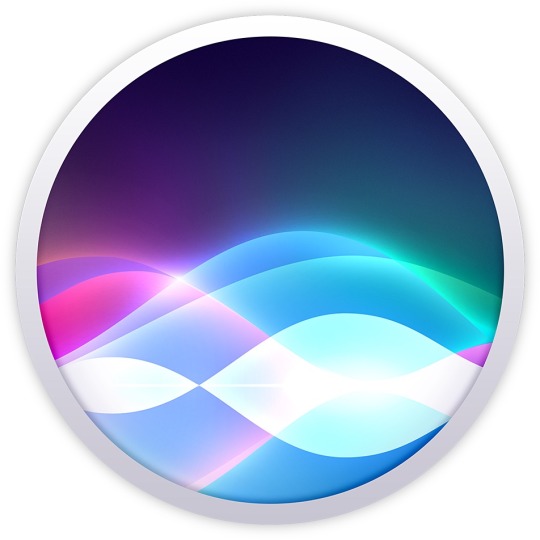
You can ask Siri all kinds of questions, from simple queries about the weather to more complex questions about everything from sports scores to the number of calories in food. Siri can also enable or disable settings, find content, set alarms and reminders, place calls and texts, and so much more. This guide covers the basics of Siri, including some of the commands you can use to activate Siri, devices that have Siri included, and devices that support more advanced hands-free 'Hey Siri' commands.
Activating Siri
On an iPhone or iPad, Siri can be activated by holding the Home button on compatible models or holding the Side button on devices without a Home button. On the Mac, you can click on the Siri app icon on the dock or the menu bar, or press and hold the command key and the space bar. On a Mac with a Touch Bar, you can press the Siri icon on the Touch Bar. On 2018 MacBook Air and Pro models or the iMac Pro, you can activate Siri with a 'Hey Siri' command. On the Apple Watch, you can say 'Hey Siri' to activate Siri. On Apple Watch Series 3 or later with the latest version of Apple Watch, there's a Raise to Speak feature that lets Siri respond to commands even without the Hey Siri trigger word. Just hold the watch near your mouth and speak. Siri can also be activated by holding down on the Digital Crown. On first-generation AirPods, a double tap activates Siri, and on second-generation AirPods, Siri can be activated with the 'Hey Siri' command. On HomePod, say 'Hey Siri' or press on the top of the HomePod to activate Siri. On Apple TV, hold down the Siri button on the remote (the button with the microphone) to activate Siri.
Devices Compatible With Siri
Siri is on almost every Apple device, and it's built into macOS, iOS, watchOS, and tvOS. You can activate Siri on Macs running macOS Sierra or later, all Apple Watch models, the fourth and fifth-generation Apple TV, all modern iPhones, the AirPods, and the HomePod.
Devices That Support 'Hey Siri' Without Power
Most Apple devices have support for the 'Hey Siri' activation command, but more recent iPads, iPhones, Macs, and Apple Watches offer hands-free 'Hey Siri' Siri support even when not connected to power. That means you can use the 'Hey Siri' trigger phrase at any time to activate Siri. Compatible devices are listed below:
iPhone 6s and later
Second-generation AirPods (iPhone, iPad or Apple Watch connection required)
5th-generation iPad and later
All iPad Pro models except the first-generation 12.9-inch model
5th-generation iPad mini
3rd-generation iPad Air
All Apple Watch models
HomePod
2018 MacBook Pro
2018 MacBook Air
iMac Pro
When multiple devices that can respond to 'Hey Siri' commands are available, the devices will use Bluetooth to determine which one should respond to the request so not all of them answer at once. According to Apple, the device that heard you best or the device that was most recently raised or used will respond. If you have a HomePod, the HomePod will often take precedent and respond to 'Hey Siri' requests even when other devices that support the feature are nearby.
Countries Where Siri Support is Available
Siri is available in more than 35 countries around the world, including the U.S., UK, Canada, Australia, New Zealand, and many countries in Asia and Europe. A full list of countries where Siri is available can be found on Apple's Feature Availability website. Certain Siri features like translations, sports info, restaurant information and reservations, movie information and showtimes, dictionary, calculations, and conversions are limited to a smaller number of countries.
What Siri Can Do
Below is a list of some of the commands and questions Siri is able to respond to, and some of the actions Siri is able to take.
Make calls/Initiate FaceTime
Send/read texts
Send messages on third-party messaging apps
Set alarms/timers
Set reminders/check calendar
Split a check or calculate a tip
Play music (specific songs, artists, genres, playlists)
Identify songs, provide song info like artist and release date
Control HomeKit products
Play TV shows and movies, answer questions about them
Do translations and conversions
Solve math equations
Offer up sports scores
Check stocks
Surface photos based on person, location, object, and time
Apple Maps navigation and directions
Make reservations
Open and interact with apps
Find files (on Mac)
Send money via Apple Pay
Check movie times and ratings
Search for nearby restaurants and businesses
Activate Siri Shortcuts
Search and create Notes
Search Twitter and other apps
Open up the Camera and take a photo
Increase/decrease brightness
Control settings
Tell jokes, roll dice, flip a coin
Play voicemails
Check the weather
Siri How Tos
Passive Siri
Siri is an active assistant that you can interact with, but Apple has also integrated Siri into other aspects of iOS and watchOS, allowing Siri to make proactive suggestions that you can act on. On the iPhone, iPad, and Apple Watch, Siri can make various kinds of recommendations. When you're running late for a scheduled meeting, for example, Siri might suggest that you call your boss either on the Home screen or when you swipe down to search and access the Siri Suggestions options. In Messages and Mail, Siri can suggest things like phone numbers or addresses based on what you've typed, and in Safari, Siri can offer up search suggestions. Siri can do other things like suggest HomeKit scenes to activate, suggest a time to leave when you have an event scheduled, suggest events to add to your calendar from your email, and more. Siri suggestions are all based on your personal device usage habits, so what you see will vary. There's also a feature in iOS called 'Siri Shortcuts,' which are shortcuts and automations that let you complete multi-step tasks on your iPhone. Siri Shortcuts are so named because Siri will suggest them to you and because you can activate Shortcuts with a Siri trigger word.
Siri Videos
We've done several videos highlighting different Siri features, and our most recent can be found below.
Siri Privacy
Siri does send data back to Apple, but searches and requests are not associated with your identity to keep your personal information safe. Apple does not sell your data to advertisers or other organizations, and end-to-end encryption is used for all data syncing between your devices and the cloud.
Guide Feedback
Have questions about Siri, know a feature we left out, or want to offer feedback on this guide? Send us an email here.
Related Articles
Related Discussion
• Announce message with Siri with AirPods working for anybody?(11)
• Find My - AirPods not displaying(5)
• Does anyone actually use Siri on their Mac?(33)
• Hey Siri, add water to my grocery list.(13)
• Can't change Siri voice(21)
• Anyone else having issues with Hey Siri?(14)
• Hey, Siri Problems in Beta(11)
• Announce Messages and Reply with Siri(15)
• Siri not working in the car?(6)
• Anybody have a case for their Apple TV Remote?(17)
• Maps without Siri(8)
• I love Siri(21)
• Siri not responding-phone issue or AT&T?(7)
• So Siri Shortcuts are basically useless if the developer doesn't code for them..?(16)
• Is it possible to activate Siri Shortcuts with a keyboard shortcut?(6)
• AirPods 2 Siri is so quiet.(9)
• Enable Siri on Apple TV 4K(8)
• How to set up 'Hey Siri' on AirPods 2?(7)
• Siri wont work on Mac OS Mojave(5)
• Turn Apple TV on/off with Siri(6)
• Launching Siri Shortcut from the watch face?(8)
• Siri hasn’t updated contact for wife, any suggestions?(5)
• Siri is so dumb, but Apple TV Siri is even dumber(5)
• Odd Siri issue with Hue/Homekit(8)
• Are you ever sarcastic to Siri?(18)
• XS: Crazy Siri battery drain overnight(8)
• Which device will Hey Siri activate on(6)
• Siri mostly useless for me(9)
• Using Siri in Clamshell(6)
• New iPhone Restore Issues: TouchID/Wallet/Siri/Settings(6)
• Apple series 2 - Digital Crown(5)
• HomePod not hearing 'Hey Siri' commands(13)
• Hey, Siri.. OK, Google(19)
• Is Siri getting worse(12)
• Siri & Search(6)
• Siri voice recognition is embarassingly awful(10)
• Cannot make Whatsapp audio call in Carplay using SIRI(10)
• Apple Watch Siri raise to speak.(16)
• Siri wont download accents since updating to 12.1.1(30)
• Using Siri to make call will periodically ask to unlock phone(7)
• Are Siri and Siri Shortcuts acting funky?(9)
• Siri Really Doesn't Work Very Well(14)
• Siri does not execute (raise to speak)(26)
• Hey Siri While Playing Music(13)
• Hey Siri not responding via voice(6)
• No Siri on LTE version(10)
• “Hey Siri” - HomePod + iPhone + iPad - Any Issues?(12)
• Siri constantly terrible at homekit(11)
• why does siri fail with 'hang on' so often when phone is close(15)
• Siri is just.. so bad, im crying rn(17)
• Siri Can Now Fade Hue Lights Using Shortcuts(5)
• Siri- Remind Me of This(15)
• 'hey siri' wont stay on(6)
• Siri Extremely Delayed Responses(15)
• How do you invoke Siri on new iPads pros?(8)
• Hey siri battery life difference(5)
For many Mac users, one of the top features of macOS 10.14 Mojave will be the new Home app and support for controlling HomeKit devices with Siri on the Mac. Both of these have been sorely missed in previous versions of macOS, but Mojave is finally changes things…
Home app
First and foremost, macOS 10.14 features a new Home app. As Apple explained on stage at WWDC, this is one of the applications it brought from iOS to macOS using new cross-platform frameworks.
On the surface, it’s not necessarily clear that the Home app was brought directly from iOS to macOS. It looks and operates like a Mac app for the most part, though there are some instances where things feel a bit wonky.
For instances, when you would 3D Touch in iOS app, you have to right-click on macOS. This isn’t explicitly clear and causes some funky windowing to occur. However, what’s important to remember here is that this is only the first beta of macOS 10.14 Mojave, and we can expect Apple to refine things as the testing continues over the coming months.
In terms of features, the Home app on macOS works just as you would expect it to. App for google photos mac download.
Along the top of the app, you have tabs for Home, Rooms, and Automation, as well as a “+” icon for creating a new scene or automation. At this time, it appears that scene creation is broken in the Home app for iOS and macOS, but that’ll be fixed in future betas.
Do you also know that the User Guides installed with them if you did a download/install and didn’t get a box with books in it? Note that if you already have a MyFonts folder on this Mac, you will want to add the content of the one you have copied from the first computer rather than simply pasting it into the Fonts folder, so that you do not lose any fonts already on this second computer. Do you know that there are reference guides for your PREMIER+ 2 embroidery software that are much more extensive than the User Guides you got in the box with your program installed on your computer? Gopro app for mac.
In the Home tab, you see all of your favorite accessories and scenes, just like on iOS. Right-clicking allows you to choose between Quick Controls, such as changing the brightness or color, as well as a “Settings” menu for changing the icon, name, and more.
Siri App For Mac
In the Rooms tab, you can filter between your various rooms and see each accessory there. To switch between Rooms, you have to use the “View” tab in the menu bar or swipe left/right with two-fingers on your Mac’s trackpad. Using the “Edit” option in the menu bar, you can view your list of existing rooms and create new ones.
Finally, in the Automation tab, you can view and edit your existing automations, while the “+” button lets you create new automatons. Tile app for mac desktop.
Siri Control
At long last, you can now use Siri on your Mac to control HomeKit accessories, as well. This works exactly how you would expect it to. Simply tap the Siri icon in the upper-right corner of your display and you can instantly start issuing commands.
Use Siri On Mac
Wrap up
It’s nice to finally have support for controlling HomeKit accessories from macOS, whether it be from the Home app or Siri.
Facetime App For Macbook Air
While the Home app on macOS still has its quirks, it’s incredibly useful for times when you don’t have your iPhone or iPad near you. Of course, we can also expect Apple to continue making improvements as the macOS 10.14 beta testing period continues.
Facetime App For Macbook Pro Free
Have you tried HomeKit on macOS 10.14? What do you think? Let us know down in the comments!

0 notes
Text
Apple Successful in Demonstrating that Social Technologies Pursued Trademark Registration and Related Activities for the Purpose of Lawsuit Against the Tech Giant
By Jade Dombroski, University of Chicago Class of 2023
July 20, 2021

In 2018, Social Technologies issued a lawsuit against Apple for Trademark Infringement (Lanham Act), Trademark Infringement (Common Law), and Unfair Competition and sought Declaratory Judgement of Validity and Declaratory Judgement of Non-Infringement in response to Apple’s announcement and eventual utilization of the MEMOJI mark in its new software programs/apps.
The district court ruled in Apple’s favor, arguing that it had not in fact infringed upon the trademark because Social Technologies had failed to demonstrate bona fide use of the MEMOJI mark in commerce. Social Technologies then appealed the decision to the 9th Circuit Court.
On July 13, 2021, the 9th Circuit Court upheld Apple’s victory and moved for a cancellation of Social Technologies’ MEMOJI trademark. Judge Restani (writing the opinion for the court) argued that Social Technologies had pursued patent registration in order to obtain trademark rights for the purpose of pursuing a lawsuit against Apple, who had announced and acted on plans to utilize the Memoji mark (after acquiring rights by Lucky Bunny, another company who had previously held a trademark for Memoji). As the Court ruled, Social Technologies did not engage in bona fide use in commerce – boldly writing that “[t]he record contains overwhelming and clear evidence that Social Tech’s use following Apple’s announcement was not genuine.”
Timeline
2016
April
Social Technologies files an intent-to-use trademark application for MEMOJI.
2017
January
Social Technologies creates promotional website for Memoji.
April 3
Lucky Bunny LLC files a trademark application for MEMOJI based on use in commerce
Lucky Bunny had previously created a mobile phone app., Memoji, in October
2014 and filed an application for the trademark MEMOJI mark on October 29, 2014 based on actual use in commerce (after which it received a Notice of Allowance from the USPTO).
Lucky Bunny’s application was deemed abandoned by the USPTO in December 2015 after it had failed to file a Statement of Use on time.
Apple argued that, despite this, there was never a cessation of use as Lucky Bunny had continued to use the MEMOJI mark in commerce, therefore maintaining their rights until Apple’s acquisition.
The court, however, did not rely on a discussion of Lucky Bunny’s rights of MEMOJI within its decision.
Note: Because it followed Social Technologies’ application, Lucky Bunny’s trademark application was suspended until Social Tech’s application was reviewed by the USPTO.
2018
January
United States Patent and Trademark Office (USPTO) grants a Notice of Allowance to Social Technologies for the use of the MEMOJI icon.
In its grant, the USPTO required that, for the registration to be issued, Social Tech must use the mark in commerce (through a filing of Statement of Use).
March
Social Tech requests (and receives) a 6 month extension on its deadline to file a Statement of Use.
May
Apple representative inquires about whether Social Technologies would be willing to sell the rights associated with MEMOJI.
Social Technologies declined.
Apple then negotiates with Lucky Bunny to receive its rights and goodwill of MEMOJI
(including its application that was suspended in April 2017.
June
The USPTO records Apple’s assignment of Lucky Bunny’s MEMOJI goodwill and rights.
June 4
Apple announces that it had acquired MEMOJI from Lucky Bunny and gives a release date of fall of 2019 for related software to be utilized in a widespread manner in Apple products.
June 25
Apple releases an open beta system utilizing Memoji.
June 28
Social Tech releases a Memoji app on the Google Play Store (3 weeks after Apple’s announcement).
It receives 5,000 downloads in 2018.
June 30
Social Technologies files a Statement of Use.
September
September 17
Apple launches iOS 12 utilizing Memoji software.
September 18
Social Technologies achieves trademark registration from the USPTO for MEMOJI trademark.
September 26
Apple requests cancellation of Social Technologies��� registration of the MEMOJI mark by the USPTO.
September 27
Social Technologies sues Apple for trademark infringement.
2019
December 17
U.S. District Judge Vince Chharabria rules in favor of Apple.
2021
May 10
Apple and Social Technologies present arguments before the 9th Circuit Court.
July 13
The 9th Circuit Court rules affirms the lower court’s ruling in favor of Apple.
Background
Social Technologies issued a complaint against Apple for Trademark Infringement (Lanham Act), Trademark Infringement (Common Law), and Unfair Competition and sought Declaratory Judgement of Validity and Declaratory Judgement of Non-Infringement in response to Apple’s announcement and eventual utilization of the MEMOJI mark in its new software programs/apps.
The district court ruled in Apple’s favor, arguing that it had not in fact infringed upon the trademark since, it argued, Social Technologies had failed to demonstrate bona fide use of the MEMOJI mark in commerce. Social Technologies then appealed the decision to the 9th Circuit Court.
The Case
With regards to the background of the issues at hand, the Lanham Act concerns trademark registration, requiring those that have filed an intent-to-use application to “provide ‘a verified statement that the mark is in use in commerce’” 15 U.S.C. § 1051(b),(d) – in essence stipulating that one cannot simply register a trademark for the sake of reserving the rights of the mark itself, but instead must pursue a trademark if they intend to and do utilize it in ordinary business in a manner such that the public is sufficiently aware of it and comes to identify the mark with its owners [1]. Indeed, “Mere adoption of a mark without bona fide use in commerce, in an attempt to reserve rights for the future, is insufficient to establish rights in the mark under the Lanham Act” [1].
As a great source of contention within the case, Apple and Social Technologies, as expected, took starkly different positions on the extent to which Social Tech did or did not act in good character and the extent to which it had associated itself with the MEMOJI mark in the eyes of the public. For its part, Social technologies argued that they had engaged in bona fide use in commerce with the MEMOJI mark, citing 5,000 downloads of its app in the year 2018, acquiring a $100,000 investment, engaging in early stage business planning, and creating a promotional website.
Apple, however, disagreed. They argued that Social Technologies had rushed to market in order to obtain trademark rights to eventually pursue a lawsuit like the one in question – in violation of qualifications for bona fide use in commerce [2]. According to Apple, this violation would render Social Technologies’ registration of its trademark invalid and therefore would allow Apple to successfully pursue a cancellation by the USPTO. The defense presented an alternate framework for the aforementioned and so-called (by Social Tech) use in commerce activities, claiming that the $100,000 investment (an internal investment from a single source), the creation of a website, and business planning, were not sufficient to warrant the title of ‘commerce.’ The app, once it arrived at the Google Play Store, contained bugs and was of poor quality, an indication of rushed code development. Further, Apple brought into question Social Technologies’ intentions given that they had not developed any code for the MEMOJI app and recorded no sales in over 2 years since they filed the intent-to-use application. Yet, even if Social Technologies had somehow engaged in commerce with the MEMOJI mark, Apple argued that that alone would be insufficient for trademark registration as the company lacked evidence that the public had come to associate them with the MEMOJI mark prior to Apple’s announcement on June 4th, 2018. Despite Social Technologies’ claims that it did not rush the development of its app so that they would be able to sue Apple, a series of emails between Samuel Bonet (Social Tech’s co-founder and president) and a software developer provided extremely strong evidence on the contrary – evidence cited by the judge in his decision – including quotations such as:
“Time to get paid, gentlemen” (June 7, 2018)
““[i]n other news… the initial letter has been sent to Apple. The process has begun. Peace and wealth!” (June 13, 2018)
“We are lining up all of our information, in preparation for a nice lawsuit against Apple, Inc! We are looking REALLY good. Get your Lamborghini picked out!” (June 18)
* Note: this message came after Bonet wrote that Social Technologies would release its Google Play Store app soon before Apple’s announced anticipated date for its own app
“[i[t’s better if we split up the updates, so it looks like we have more of them for the lawsuit. To show we are currently trying to build as we go” (July 7, 2018)
* Note: this was concerning various updates of the Memoji app
“Of course, it seems best to split these [changes] up into individual updates, so it appears like we are doing more work. We just need to show some progress” (July 14, 2018) [1]
Perhaps even enough evidence in isolation, these messages taken together made it clear, in the eyes of the court, that Social Technologies “[r]ushed development of the Memoji software and correspondence w/its developer make clear that the development of the Memoji application was for the purpose of reserving Social Tech’s rights to the MEMOJI mark and winning a lawsuit against Apple.” Indeed, the Judge Restani (who wrote the Court’s opinion) summarized the case as follows: “The totality of the record permits only one conclusion: that Social Tech’s continued pursuit of trademark registration with the USPTO was based on token use for the purposes of reserving its trademark rights” [1].
______________________________________________________________
[1] Social Technologies. LLC v. Apple Inc., Case No. 3:18-cv-05945- VC (July 13, 2021) https://cdn.ca9.uscourts.gov/datastore/opinions/2021/07/13/20-15241.pdf
[2] Donahue, Bill. “Apple Beats ‘Memoji’ Trademark Case at 9th Cir.” Bloomberg Law. https://www-law360-com.proxy.uchicago.edu/articles/1402768 (July 14, 2021).
0 notes
Text
iOS – Wikipedia
Sharengay Trang Tin Tức Độc Đáo VIDEO iOS – Wikipedia
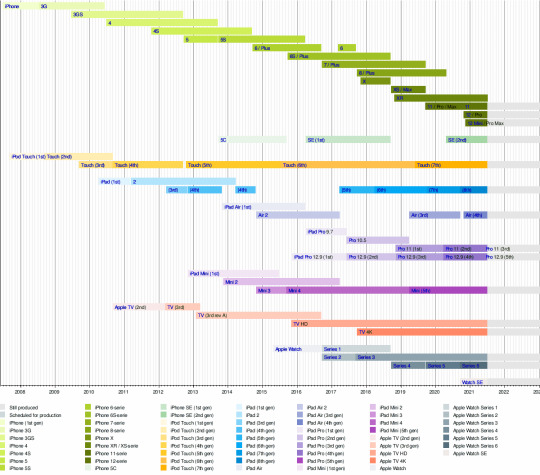
This article is about the mobile operating system developed by Apple. For the router/switch OS developed by Cisco Systems, see Cisco IOS. For other uses, see IOS (disambiguation).
iOS
Commercial logo as used by Apple, since 2017
Bạn đang xem: iOS – Wikipedia
Screenshot
iOS 14 running on an iPhone 11 Pro Max
Developer Apple Inc. Written in C, C++, Objective-C, Swift, assembly language OS family Unix-like, based on Darwin (BSD), iOS Working state Current Source model Closed, with open-source components Initial release June 29, 2007; 14 years ago Latest release 14.6[1] (18F72)[2] (May 24, 2021; 41 days ago) [±] Latest preview 15.0 beta 2[3] (19A5281j)[4] (June 30, 2021; 4 days ago) [±] 14.7 beta 4[5] (18G5052d)[6] (June 29, 2021; 5 days ago) [±] Marketing target Smartphones, tablet computers, portable media players Available in 40 languages[7][8][9][10] Update method OTA (since iOS 5), Finder (from macOS Catalina onwards)[11] or iTunes (Windows and macOS pre-Catalina) Platforms
ARMv8-A (iOS 7 and later)
ARMv7-A (iPhone OS 3 – iOS 10.3.4)
ARMv6 (iPhone OS 1 – iOS 4.2.1)
Kernel type Hybrid (XNU) Default user interface Cocoa Touch (multi-touch, GUI) License Proprietary software except for open-source components Official website https://apple.co/3jOpyAz Supported iOS version history
iOS (formerly iPhone OS) is a mobile operating system created and developed by Apple Inc. exclusively for its hardware. It is the operating system that powers many of the company’s mobile devices, including the iPhone and iPod Touch; the term also included the versions running on iPads until the name iPadOS was introduced with version 13 in 2019. It is the world’s second-most widely installed mobile operating system, after Android. It is the basis for three other operating systems made by Apple: iPadOS, tvOS, and watchOS. It is proprietary software, although some parts of it are open source under the Apple Public Source License and other licenses.[12]
Unveiled in 2007 for the first-generation iPhone, iOS has since been extended to support other Apple devices such as the iPod Touch (September 2007) and the iPad (introduced: January 2010; availability: April 2010.) As of March 2018, Apple’s App Store contains more than 2.1 million iOS applications, 1 million of which are native for iPads.[13] These mobile apps have collectively been downloaded more than 130 billion times.
Major versions of iOS are released annually. The current stable version, iOS 14, was released to the public on September 16, 2020.[14] It brought many user interface changes, including the ability to place widgets on the home screen, a compact UI for both Siri and phone calls, and the ability to change both the default web browser and email apps. No devices were dropped, as all devices supported by iOS 13 are able to run iOS 14.
History
First iOS logotype (2010–2013), using Myriad Pro Semibold font
Second iOS logotype (2013–2017), using Myriad Pro Light font
Third iOS logotype (2017–present), using San Francisco Semibold font
In 2005, when Steve Jobs began planning the iPhone, he had a choice to either “shrink the Mac, which would be an epic feat of engineering, or enlarge the iPod”. Jobs favored the former approach but pitted the Macintosh and iPod teams, led by Scott Forstall and Tony Fadell, respectively, against each other in an internal competition, with Forstall winning by creating the iPhone OS. The decision enabled the success of the iPhone as a platform for third-party developers: using a well-known desktop operating system as its basis allowed the many third-party Mac developers to write software for the iPhone with minimal retraining. Forstall was also responsible for creating a software development kit for programmers to build iPhone apps, as well as an App Store within iTunes.[15][16]
The operating system was unveiled with the iPhone at the Macworld Conference & Expo on January 9, 2007, and released in June of that year.[17][18][19] At the time of its unveiling in January, Steve Jobs claimed: “iPhone runs OS X” and runs “desktop class applications”,[20][21] but at the time of the iPhone’s release, the operating system was renamed “iPhone OS”.[22] Initially, third-party native applications were not supported. Jobs’ reasoning was that developers could build web applications through the Safari web browser that “would behave like native apps on the iPhone”.[23][24] In October 2007, Apple announced that a native Software Development Kit (SDK) was under development and that they planned to put it “in developers’ hands in February”.[25][26][27] On March 6, 2008, Apple held a press event, announcing the iPhone SDK.[28][29]
The iOS App Store was opened on July 10, 2008 with an initial 500 applications available.[30] This quickly grew to 3,000 in September 2008,[31] 15,000 in January 2009,[32] 50,000 in June 2009,[33] 100,000 in November 2009,[34][35] 250,000 in August 2010,[36][37] 650,000 in July 2012,[38] 1 million in October 2013,[39][40] 2 million in June 2016,[41][42][43] and 2.2 million in January 2017.[44][45] As of March 2016, 1 million apps are natively compatible with the iPad tablet computer.[46] These apps have collectively been downloaded more than 130 billion times.[41] App intelligence firm Sensor Tower has estimated that the App Store will reach 5 million apps by the year 2020.[47]
In September 2007, Apple announced the iPod Touch, a redesigned iPod based on the iPhone form factor.[48] On January 27, 2010, Apple introduced their much-anticipated media tablet, the iPad, featuring a larger screen than the iPhone and iPod Touch, and designed for web browsing, media consumption, and reading, and offering multi-touch interaction with multimedia formats including newspapers, e-books, photos, videos, music, word processing documents, video games, and most existing iPhone apps using a 9.7-inch screen.[49][50][51] It also includes a mobile version of Safari for web browsing, as well as access to the App Store, iTunes Library, iBookstore, Contacts, and Notes. Content is downloadable via Wi-Fi and optional 3G service or synced through the user’s computer.[52] AT&T was initially the sole U.S. provider of 3G wireless access for the iPad.[53]
In June 2010, Apple rebranded iPhone OS as “iOS”. The trademark “IOS” had been used by Cisco for over a decade for its operating system, IOS, used on its routers. To avoid any potential lawsuit, Apple licensed the “IOS” trademark from Cisco.[54]
The Apple Watch smartwatch was announced by Tim Cook on September 9, 2014, being introduced as a product with health and fitness-tracking.[55][56] It was released on April 24, 2015.[57][58][59] It uses watchOS as operative system, which is based on IOS.
On November 22nd, 2016, a five-second video file originally named “IMG_0942.MP4” started crashing iOS on a increasing count of devices, forcing users to reboot. It gained massive popularity through social media channels and messaging services.[60][61]
In October 2016, Apple opened its first iOS Developer Academy in Naples inside University of Naples Federico II’s new campus.[62][63] The course is completely free, aimed at acquiring specific technical skills on the creation and management of applications for the Apple ecosystem platforms.[64] At the Academy there are also issues of business administration (business planning and business management with a focus on digital opportunities) and there is a path dedicated to the design of graphical interfaces. Students have the opportunity to participate in the “Enterprise Track”, an in-depth training experience on the entire life cycle of an app, from design to implementation, to security, troubleshooting, data storage and cloud usage.[65][66] As of 2020, the Academy graduated almost a thousand students from all over the world, who have worked on 400 app ideas and have already published about 50 apps on the iOS App Store. In the 2018/2019 academic year, students from more than 30 different countries arrived. 35 of these have been selected to attend the Worldwide Developer Conference, the annual Apple Developer Conference held annually in California in early June.[67][68]
Steve Jobs, Apple’s then CEO, introducing the iPad.
On June 3, 2019, iPadOS, the branded version of iOS for iPad, was announced at the 2019 WWDC; it was launched on September 25, 2019.[69]
Features
Interface
The iOS user interface is based upon direct manipulation, using multi-touch gestures such as swipe, tap, pinch, and reverse pinch. Interface control elements include sliders, switches, and buttons.[70] Internal accelerometers are used by some applications to respond to shaking the device (one common result is the undo command) or rotating it in three dimensions (one common result is switching between portrait and landscape mode). Various accessibility described in § Accessibility functions enable users with vision and hearing disabilities to properly use iOS.[71]
iOS devices boot to the homescreen, the primary navigation and information “hub” on iOS devices, analogous to the desktop found on personal computers. iOS homescreens are typically made up of app icons and widgets; app icons launch the associated app, whereas widgets display live, auto-updating content, such as a weather forecast, the user’s email inbox, or a news ticker directly on the homescreen.[72]
Along the top of the screen is a status bar, showing information about the device and its connectivity. The status bar itself contains two elements, the Control Center and the Notification Center. The Control Center can be “pulled” down from the top right of the notch, on the new iPhones, giving access to various toggles to manage the device more quickly without having to open the Settings. It is possible to manage brightness, volume, wireless connections, music player, etc.[73]
Instead, scrolling from the top left to the bottom will open the Notification Center, which in the latest versions of iOS is very similar to the lockscreen. It displays notifications in chronological order and groups them by application. From the notifications of some apps it is possible to interact directly, for example by replying a message directly from it. Notifications are sent in two modes, the important notifications that are displayed on the lock screen and signaled by a distinctive sound, accompanied by a warning banner and the app badge icon, and the secondary mode where they are displayed in the Notification Center, but they are not shown on the lock screen, nor are they indicated by warning banners, badge icons or sounds.[74][75]
It is possible to choose if notifications from an app can be shown on the lock screen, Notification Center, banner, or all three; whether the banner should be temporary or permanent; activate or deactivate the sound; choose whether to group by app or not and whether to show previews when locked. It is possible to turn off unwanted app notifications. Older notifications are automatically deleted after a few days.
A homescreen may be made up of several pages, between which the user can swipe back and forth, one of the ways to do this is to hold down on the “dots” shown on each page and swipe left or right.
To the right of the last page, the App Library lists and categorizes apps installed on the device. Apps within each category are arranged based on the frequency of their usage. In addition to a category for suggested apps, a “recent” category lists apps recently installed alongside App Clips recently accessed. Users can search for the app they want or browse them in alphabetical order.
iOS also integrates seamlessly with other programming frameworks and technologies, such as Apple Pay, HomeKit, HealthKit, and ResearchKit.
On iOS, the main page button is usually located at the top right. To go back in an application there is almost always a “back” button.
You can go back in 4 different ways, it varies depending on the context.
Press the “Back” button at the top left of the display
Swipe right from the left edge of the screen (gesture)
Press the “Finish” action at the top right of the screen
Scroll down on the screen content
The page title is practically always present and very visible, but it shrinks as the user scrolls down.
Navigation destinations that cannot be contained in the bottom tab bar can: be moved to a generic “More” tab or appear as actions in the top left or top right of other destinations.
Xem thêm: [TaiMienPhi.Vn] Cách xóa mật khẩu Facebook lưu trên Chrome, Cốc Cốc
Modal views are single-screen activities that are displayed by swiping into the foreground, while allowing the previous screen to peek up, retreating into the background. You can ignore them by scrolling down or tapping “Back” at the top.
Full screen views are media content such as photos or videos that take up the entire screen. They disappear on scrolling down.
Occasionally on iOS, important page actions appear on a lower toolbar.
Action menus can be activated by any button or by attempting to perform any action. They scroll from bottom to top.
On earlier iPhones with home button, screenshots can be created with the simultaneous press of the home and power buttons. In comparison to Android OS, which requires the buttons to be held down, a short press does suffice on iOS.[76] On the more recent iPhones which lack a physical home button, screenshots are captured using the volume-down and power buttons instead.[77]
A new feature in iOS 13 called “context menus” shows related actions when you touch and hold an item. When the context menu is displayed, the background is blurred.[78]
To choose from a few options, a selection control is used. Selectors can appear anchored at the bottom or in line with the content (called date selectors). Date selectors take on the appearance of any other selection control, but with a column for day, month, and optionally year.
Alerts appear in the center of the screen, but there are also alerts that scroll up from the bottom of the screen (called “action panels”). Destructive actions (such as eliminating any element) are colored red.
The official font of iOS is San Francisco. It is designed for small text readability, and is used throughout the operating system, including third-party apps.[78]
The icons are 180x180px in size for iPhones with a larger screen, usually models over 6 inches, including iPhone 11 Pro and iPhone 8 Plus, while it’s 120x120px on iPhones with smaller displays.[79]
Apple’s official design language is called Human Interface.[80]
Applications
iOS devices come with preinstalled apps developed by Apple including Mail, Maps, TV, Music, FaceTime, Wallet, Health, and many more.
Applications (“apps”) are the most general form of application software that can be installed on iOS. They are downloaded from the official catalog of the App Store digital store, where apps are subjected to security checks before being made available to users. In June 2017, Apple updated its guidelines to specify that app developers will no longer have the ability to use custom prompts for encouraging users to leave reviews for their apps.[81][82] IOS applications can also be installed directly from an IPA file provided by the software distributor, via unofficial ways. They are written using iOS Software Development Kit (SDK) and, often, combined with Xcode, using officially supported programming languages, including Swift and Objective-C. Other companies have also created tools that allow for the development of native iOS apps using their respective programming languages.
Applications for iOS are mostly built using components of UIKit, a programming framework. It allows applications to have a consistent look and feel with the OS, nevertheless offering customization.
Elements automatically update along with iOS updates, automatically including new interface rules. UIKit elements are very adaptable, this allows developers to design a single app that looks the same on any iOS device. In addition to defining the iOS interface, UIKit defines the functionality of the application.
At first, Apple did not intend to release an SDK to developers, because they did not want third-party apps to be developed for iOS, building web apps instead. However, this technology never entered into common use, this led Apple to change its opinion, so in October 2007 the SDK for developers was announced, finally released on March 6, 2008.
The SDK includes an inclusive set of development tools,[83] including an audio mixer and an iPhone simulator. It is a free download for Mac users. It is not available for Microsoft Windows PCs. To test the application, get technical support, and distribute applications through App Store, developers are required to subscribe to the Apple Developer Program.
Over the years, the Apple Store apps surpassed multiple major milestones, including 50,000,[84] 100,000,[85] 250,000,[86] 500,000,[87] 1 million,[88] and 2 million apps.[89] The billionth application was installed on April 24, 2009.[90]
Home screen
The home screen, rendered by SpringBoard, displays application icons and a dock at the bottom where users can pin their most frequently used apps. The home screen appears whenever the user unlocks the device or presses the physical “Home” button while in another app.[91] Before iOS 4 on the iPhone 3GS (or later), the screen’s background could be customized only through jailbreaking, but can now be changed out-of-the-box. The screen has a status bar across the top to display data, such as time, battery level, and signal strength. The rest of the screen is devoted to the current application. When a passcode is set and a user switches on the device, the passcode must be entered at the Lock Screen before access to the Home screen is granted.[92]
In iPhone OS 3, Spotlight was introduced, allowing users to search media, apps, emails, contacts, messages, reminders, calendar events, and similar content. In iOS 7 and later, Spotlight is accessed by pulling down anywhere on the home screen (except for the top and bottom edges that open Notification Center and Control Center).[93][94] In iOS 9, there are two ways to access Spotlight. As with iOS 7 and 8, pulling down on any homescreen will show Spotlight. However, it can also be accessed as it was in iOS 3 – 6. This endows Spotlight with Siri suggestions, which include app suggestions, contact suggestions and news.[95] In iOS 10, Spotlight is at the top of the now-dedicated “Today” panel.[96]
Since iOS 3.2, users are able to set a background image for the Home Screen. This feature is only available on third-generation devices—iPhone 3GS, third-generation iPod touch (iOS 4.0 or newer), and all iPad models (since iOS 3.2)—or newer.
iOS 7 introduced a parallax effect on the Home Screen, which shifts the device’s wallpaper and icons in response to the movement of the device, creating a 3D effect and an illusion of floating icons. This effect is also visible in the tab view of Mail and Safari.[97]
Researchers found that users organize icons on their homescreens based on usage frequency and relatedness of the applications, as well as for reasons of usability and aesthetics.[98]
System font
iOS originally used Helvetica as the system font. Apple switched to Helvetica Neue exclusively for the iPhone 4 and its Retina Display, and retained Helvetica as the system font for older iPhone devices on iOS 4.[99] With iOS 7, Apple announced that they would change the system font to Helvetica Neue Light, a decision that sparked criticism for inappropriate usage of a light, thin typeface for low-resolution mobile screens. Apple eventually chose Helvetica Neue instead.[100][101] The release of iOS 7 also introduced the ability to scale text or apply other forms of text accessibility changes through Settings.[102][103] With iOS 9, Apple changed the font to San Francisco, an Apple-designed font aimed at maximum legibility and font consistency across its product lineup.[104][105]
Folders
iOS 4 introduced folders, which can be created by dragging an application on top of another, and from then on, more items can be added to the folder using the same procedure. A title for the folder is automatically selected by the category of applications inside, but the name can also be edited by the user.[106] When apps inside folders receive notification badges, the individual numbers of notifications are added up and the total number is displayed as a notification badge on the folder itself.[106] Originally, folders on an iPhone could include up to 12 apps, while folders on iPad could include 20.[107] With increasing display sizes on newer iPhone hardware, iOS 7 updated the folders with pages similar to the home screen layout, allowing for a significant expansion of folder functionality. Each page of a folder can contain up to nine apps, and there can be 15 pages in total, allowing for a total of 135 apps in a single folder.[108] In iOS 9, Apple updated folder sizes for iPad hardware, allowing for 16 apps per page, still at 15 pages maximum, increasing the total to 240 apps.[109]
Notification Center
Before iOS 5, notifications were delivered in a modal window and couldn’t be viewed after being dismissed. In iOS 5, Apple introduced Notification Center, which allows users to view a history of notifications. The user can tap a notification to open its corresponding app, or clear it.[110] Notifications are now delivered in banners that appear briefly at the top of the screen. If a user taps a received notification, the application that sent the notification will be opened. Users can also choose to view notifications in modal alert windows by adjusting the application’s notification settings. Introduced with iOS 8, widgets are now accessible through the Notification Center, defined by 3rd parties.
When an app sends a notification while closed, a red badge appears on its icon. This badge tells the user, at a glance, how many notifications that app has sent. Opening the app clears the badge.
Accessibility
iOS offers various accessibility features to help users with vision and hearing disabilities. One major feature, VoiceOver, provides a voice reading information on the screen, including contextual buttons, icons, links and other user interface elements, and allows the user to navigate the operating system through gestures. Any apps with default controls and developed with a UIKit framework gets VoiceOver functionality built in.[111] One example includes holding up the iPhone to take a photo, with VoiceOver describing the photo scenery.[112] As part of a “Made for iPhone” program, introduced with the release of iOS 7 in 2013, Apple has developed technology to use Bluetooth and a special technology protocol to let compatible third-party equipment connect with iPhones and iPads for streaming audio directly to a user’s ears. Additional customization available for Made for iPhone products include battery tracking and adjustable sound settings for different environments.[113][114] Apple made further efforts for accessibility for the release of iOS 10 in 2016, adding a new pronunciation editor to VoiceOver, adding a Magnifier setting to enlarge objects through the device’s camera, software TTY support for deaf people to make phone calls from the iPhone, and giving tutorials and guidelines for third-party developers to incorporate proper accessibility functions into their apps.[115]
In 2012, Liat Kornowski from The Atlantic wrote that “the iPhone has turned out to be one of the most revolutionary developments since the invention of Braille”,[116] and in 2016, Steven Aquino of TechCrunch described Apple as “leading the way in assistive technology”, with Sarah Herrlinger, Senior Manager for Global Accessibility Policy and Initiatives at Apple, stating that “We see accessibility as a basic human right. Building into the core of our products supports a vision of an inclusive world where opportunity and access to information are barrier-free, empowering individuals with disabilities to achieve their goals”.[117]
Criticism has been aimed at iOS depending on both internet connection (either WiFi or through iTunes) and a working SIM card upon first activation.[118] This restriction has been loosened in iOS 12, which no longer requires the latter.[119]
Multitasking
Multitasking for iOS was first released in June 2010 along with the release of iOS 4.[120][121] Only certain devices—iPhone 4, iPhone 3GS, and iPod Touch 3rd generation—were able to multitask.[122] The iPad did not get multitasking until iOS 4.2.1 in that November.[123]
The implementation of multitasking in iOS has been criticized for its approach, which limits the work that applications in the background can perform to a limited function set and requires application developers to add explicit support for it.[122][124]
Before iOS 4, multitasking was limited to a selection of the applications Apple included on the device. Users could however “jailbreak” their device in order to unofficially multitask.[125] Starting with iOS 4, on third-generation and newer iOS devices, multitasking is supported through seven background APIs:[126]
Background audio – application continues to run in the background as long as it is playing audio or video content[127]
Voice over IP – application is suspended when a phone call is not in progress[127]
Background location – application is notified of location changes[127]
Push notifications
Local notifications – application schedules local notifications to be delivered at a predetermined time[127]
Task completion – application asks the system for extra time to complete a given task[127]
Fast app switching – application does not execute any code and may be removed from memory at any time[127]
In iOS 5, three new background APIs were introduced:
Newsstand – application can download content in the background to be ready for the user[127]
External Accessory – application communicates with an external accessory and shares data at regular intervals[127]
Bluetooth Accessory – application communicates with a bluetooth accessory and shares data at regular intervals[127]
In iOS 7, Apple introduced a new multitasking feature, providing all apps with the ability to perform background updates. This feature prefers to update the user’s most frequently used apps and prefers to use Wi-Fi networks over a cellular network, without markedly reducing the device’s battery life.
Switching applications
In iOS 4.0 to iOS 6.x, double-clicking the home button activates the application switcher. A scrollable dock-style interface appears from the bottom, moving the contents of the screen up. Choosing an icon switches to an application. To the far left are icons which function as music controls, a rotation lock, and on iOS 4.2 and above, a volume controller.
With the introduction of iOS 7, double-clicking the home button also activates the application switcher. However, unlike previous versions it displays screenshots of open applications on top of the icon and horizontal scrolling allows for browsing through previous apps, and it is possible to close applications by dragging them up, similar to how WebOS handled multiple cards.[128]
With the introduction of iOS 9, the application switcher received a significant visual change; while still retaining the card metaphor introduced in iOS 7, the application icon is smaller, and appears above the screenshot (which is now larger, due to the removal of “Recent and Favorite Contacts”), and each application “card” overlaps the other, forming a rolodex effect as the user scrolls. Now, instead of the home screen appearing at the leftmost of the application switcher, it appears rightmost.[129] In iOS 11, the application switcher receives a major redesign. In the iPad, the Control Center and app switcher are combined. The app switcher in the iPad can also be accessed by swiping up from the bottom. In the iPhone, the app switcher cannot be accessed if there are no apps in the RAM.
Ending tasks
In iOS 4.0 to iOS 6.x, briefly holding the icons in the application switcher makes them “jiggle�� (similarly to the homescreen) and allows the user to force quit the applications by tapping the red minus circle that appears at the corner of the app’s icon.[130] Clearing applications from multitasking stayed the same from iOS 4.0 through 6.1.6, the last version of iOS 6.
As of iOS 7, the process has become faster and easier. In iOS 7, instead of holding the icons to close them, they are closed by simply swiping them upwards off the screen. Up to three apps can be cleared at a time compared to one in versions up to iOS 6.1.6.[131]
Task completion
Task completion allows apps to continue a certain task after the app has been suspended.[132][133] As of iOS 4.0, apps can request up to ten minutes to complete a task in the background.[134] This doesn’t extend to background up- and downloads though (e.g. if a user starts a download in one application, it won’t finish if they switch away from the application).
Siri
Main article: Siri
Siri () is an intelligent personal assistant integrated into iOS. The assistant uses voice queries and a natural language user interface to answer questions, make recommendations, and perform actions by delegating requests to a set of Internet services. The software adapts to users’ individual language usages, searches, and preferences, with continuing use. Returned results are individualized.
Originally released as an app for iOS in February 2010,[135] it was acquired by Apple two months later,[136][137][138] and then integrated into iPhone 4S at its release in October 2011.[139][140] At that time, the separate app was also removed from the iOS App Store.[141]
Siri supports a wide range of user commands, including performing phone actions, checking basic information, scheduling events and reminders, handling device settings, searching the Internet, navigating areas, finding information on entertainment, and is able to engage with iOS-integrated apps.[142] With the release of iOS 10 in 2016, Apple opened up limited third-party access to Siri, including third-party messaging apps, as well as payments, ride-sharing, and Internet calling apps.[143][144] With the release of iOS 11, Apple updated Siri’s voices for more clear, human voices, it now supports follow-up questions and language translation, and additional third-party actions.[145][146]
Game Center
Game Center is an online multiplayer “social gaming network”[147] released by Apple.[148] It allows users to “invite friends to play a game, start a multiplayer game through matchmaking, track their achievements, and compare their high scores on a leaderboard.” iOS 5 and above adds support for profile photos.[147]
Game Center was announced during an iOS 4 preview event hosted by Apple on April 8, 2010. A preview was released to registered Apple developers in August.[147] It was released on September 8, 2010 with iOS 4.1 on iPhone 4, iPhone 3GS, and iPod Touch 2nd generation through 4th generation.[149] Game Center made its public debut on the iPad with iOS 4.2.1.[150] There is no support for the iPhone 3G, original iPhone and the first-generation iPod Touch (the latter two devices did not have Game Center because they did not get iOS 4).[151] However, Game Center is unofficially available on the iPhone 3G via a hack.[152]
Hardware
The main hardware platform for iOS is the ARM architecture (the ARMv7, ARMv8-A, ARMv8.2-A, ARMv8.3-A). iOS releases before iOS 7 can only be run on iOS devices with 32-bit ARM processors (ARMv6 and ARMv7-A architectures). In 2013, iOS 7 was released with full 64-bit support (which includes a native 64-bit kernel, libraries, drivers as well as all built-in applications),[153] after Apple announced that they were switching to 64-bit ARMv8-A processors with the introduction of the Apple A7 chip.[154] 64-bit support was also enforced for all apps in the App Store; All new apps submitted to the App Store with a deadline of February 2015, and all app updates submitted to the App Store with a deadline of June 1, 2015.[155] iOS 11 drops support for all iOS devices with 32-bit ARM processors as well as 32-bit applications,[156][157] making iOS 64-bit only.[158]
Development
The iOS SDK (Software Development Kit) allows for the development of mobile apps on iOS.
While originally developing iPhone prior to its unveiling in 2007, Apple’s then-CEO Steve Jobs did not intend to let third-party developers build native apps for iOS, instead directing them to make web applications for the Safari web browser.[159] However, backlash from developers prompted the company to reconsider,[159] with Jobs announcing in October 2007 that Apple would have a software development kit available for developers by February 2008.[160][161] The SDK was released on March 6, 2008.[162][163]
The SDK is a free download for users of Mac personal computers.[164] It is not available for Microsoft Windows PCs.[164] The SDK contains sets giving developers access to various functions and services of iOS devices, such as hardware and software attributes.[165] It also contains an iPhone simulator to mimic the look and feel of the device on the computer while developing.[165] New versions of the SDK accompany new versions of iOS.[166][167] In order to test applications, get technical support, and distribute apps through App Store, developers are required to subscribe to the Apple Developer Program.[164]
Combined with Xcode, the iOS SDK helps developers write iOS apps using officially supported programming languages, including Swift and Objective-C.[168] Other companies have also created tools that allow for the development of native iOS apps using their respective programming languages.[169][170]
Update schedule
Apple provides major updates to the iOS operating system annually via iTunes and since iOS 5, also over-the-air.[172] The device checks an XML-based PLIST file on mesu.apple.com for updates. The updates are delivered in plain unencrypted ZIP files. On all recent iOS devices, iOS regularly checks on the availability of an update, and if one is available, will prompt the user to permit its automatic installation.
The latest stable version is iOS 14, released on September 16, 2020. It is available for iPhone 6S and later, and the seventh-generation iPod Touch.[173] In addition to the release of iOS 14, iPadOS 14 was released alongside iOS 14. Apple debuted iOS 14 and iPadOS 14 at its annual WWDC keynote on June 22, 2020.[174] iPadOS 14 is available on iPad Air 2 and later, iPad fifth-generation and later, iPad mini 4 and later and all versions of the iPad Pro.[175] The update introduced new features such as improved home screen widgets, the App Library, App Clips, and more.[176]
Originally, iPod Touch users had to pay for system software updates. This was due to accounting rules that designated it not a “subscription device” like iPhone or Apple TV, and improvements to the device required payments.[177][178] The requirement to pay to upgrade caused iPod Touch owners to stay away from updates.[179] However, in September 2009, a change in accounting rules won tentative approval, affecting Apple’s earnings and stock price, and allowing iPod Touch updates to be delivered for free.[180][181]
Apple has significantly extended the cycle of updates for iOS supported devices over the years. The iPhone (1st generation) and iPhone 3G only received two iOS updates, while later models had support for five to six years.[182][183]
XNU kernel
The iOS kernel is the XNU kernel of Darwin. The original iPhone OS (1.0) up to iPhone OS 3.1.3 used Darwin 9.0.0d1. iOS 4 was based on Darwin 10. iOS 5 was based on Darwin 11. iOS 6 was based on Darwin 13. iOS 7 and iOS 8 are based on Darwin 14. iOS 9 is based on Darwin 15. iOS 10 is based on Darwin 16. iOS 11 is based on Darwin 17. iOS 12 is based on Darwin 18. iOS 13 is based on Darwin 19.[184]
In iOS 6 the kernel is subject to ASLR, similar to that of OS X Mountain Lion. This makes exploit possibilities more complex since it is not possible to know the location of kernel code.
Since XNU is based on the BSD kernel, it is open source.[185] The source is under a 3-clause[186] BSD license for the original BSD parts, with parts added by Apple under the Apple Public Source License.[187] The versions contained in iOS are not available; only the versions used in macOS are available.
iOS does not have kernel extensions (kexts) in the file system, even if they are actually present. The kernel cache can be decompressed to show the correct kernel, along with the kexts (all packed in the __PRELINK_TEXT section) and their plists (in the __PRELINK_INFO section).
The kernel cache can also be directly decompressed (if decrypted) using third party tools. With the advent of iOS 10 betas and default plain text kernelcaches, these tools can only be used after unpacking and applying lzssdec to unpack the kernel cache to its full size.
The kextstat provided by the Cydia alternative software does not work on iOS because the kextstat is based on kmod_get_info(...), which is a deprecated API in iOS 4 and Mac OS X Snow Leopard. There are other alternative software that can also dump raw XML data.
On developing devices, the kernel is always stored as a statically linked cache stored in /System/Library/Caches/com.apple.kernelcaches/kernelcache which is unpacked and executed at boot.
Xem thêm: iPhone không bắt được Wi-Fi và cách khắc phục nhanh chóng, hiệu quả – Thegioididong.com
In the beginning, iOS had a kernel version usually higher than the corresponding version of macOS. Over time, the kernels of iOS and macOS have gotten closer. This is not surprising, considering that iOS introduced new features (such as the ASLR Kernel, the default freezer, and various security-strengthening features) that were first incorporated and subsequently arrived on macOS. It appears Apple is gradually merging the iOS and macOS kernels over time. The build date for each version varies slightly between processors. This is due to the fact that the builds are sequential.
The latest version of the Darwin Kernel updated to iOS 13.6 is 19.6.0, dated July 27, 2020, while for iOS 14 beta 4 it is 20.0.0, dated July 27, 2020.
Kernel Builds iOS Version Kernel Build Notes 1A420 Darwin Kernel Version 9.0.0d1: Thu Mar 8 01:38:53 PST 2007; root:xnu-933.0.0.144.obj~1/DEVELOPMENT_ARM_S5L8900XRB 1.0 Darwin Kernel Version 9.0.0d1: Tue May 22 21:15:55 PDT 2007; root:xnu-933.0.0.178.obj~3/RELEASE_ARM_S5L8900XRB 1.0.1 Darwin Kernel Version 9.0.0d1: Fri Jun 22 00:38:56 PDT 2007; root:xnu-933.0.1.178.obj~1/RELEASE_ARM_S5L8900XRB 1.0.2 1.1 Darwin Kernel Version 9.0.0d1: Thu Sep 6 23:26:45 PDT 2007; root:xnu-933.0.0.203.obj~6/RELEASE_ARM_S5L8900XRB iPod touch only 1.1.1 Darwin Kernel Version 9.0.0d1: Wed Sep 19 00:08:42 PDT 2007; root:xnu-933.0.203~21/RELEASE_ARM_S5L8900XRB First kernel that was 8900 encrypted 1.1.2 Darwin Kernel Version 9.0.0d1: Wed Oct 10 00:07:49 PDT 2007; root:xnu-933.0.204~7/RELEASE_ARM_S5L8900XRB 1.1.3 Darwin Kernel Version 9.0.0d1: Wed Dec 12 00:16:00 PST 2007; root:xnu-933.0.211~2/RELEASE_ARM_S5L8900XRB 1.1.4 1.1.5 iPod touch only 1.2 beta ? 2.0 beta 2 Darwin Kernel Version 9.3.1: Wed Mar 19 22:40:09 PDT 2008; root:xnu-1228.6.34~1/RELEASE_ARM_S5L8900X 2.0 beta 3 Darwin Kernel Version 9.3.1: Tue Apr 1 21:58:46 PDT 2008; root:xnu-1228.6.39~6/RELEASE_ARM_S5L8900X 2.0 beta 4 Darwin Kernel Version 9.3.1: Tue Apr 15 21:09:34 PDT 2008; root:xnu-1228.6.49~1/RELEASE_ARM_S5L8900X 2.0 beta 5 ? 2.0 beta 6 ? 2.0 beta 7 ? 2.0 GM Darwin Kernel Version 9.3.1: Sun Jun 15 21:37:01 PDT 2008; root:xnu-1228.6.76~45/RELEASE_ARM_S5L8900X 2.0 2.0.1 2.0.2 2.1 beta ? 2.1 beta 2 ? 2.1 beta 3 ? 2.1 beta 4 ? 2.1 Darwin Kernel Version 9.4.1: Sun Aug 10 21:25:25 PDT 2008; root:xnu-1228.7.27~12/RELEASE_ARM_S5L8720X 2.1.1 2.2 beta ? 2.2 beta 2 ? 2.2 Darwin Kernel Version 9.4.1: Sat Nov 1 19:13:13 PDT 2008; root:xnu-1228.7.36~2/RELEASE_ARM_S5L8720X 2.2.1 Darwin Kernel Version 9.4.1: Mon Dec 8 21:02:57 PST 2008; root:xnu-1228.7.37~4/RELEASE_ARM_S5L8720X 3.0 beta Darwin Kernel Version 10.0.0d3: Mon Mar 9 22:51:44 PDT 2009; root:xnu-1357.2.65~12/RELEASE_ARM_S5L8900X 3.0 beta 2 Darwin Kernel Version 10.0.0d3: Wed Mar 25 21:56:57 PDT 2009; root:xnu-1357.2.71~2/RELEASE_ARM_S5L8900X 3.0 beta 3 Darwin Kernel Version 10.0.0d3: Fri Apr 10 15:52:33 PDT 2009; root:xnu-1357.2.78~8/RELEASE_ARM_S5L8900X 3.0 beta 4 Darwin Kernel Version 10.0.0d3: Wed Apr 22 21:48:01 PDT 2009; root:xnu-1357.2.83~2/RELEASE_ARM_S5L8900X 3.0 beta 5 Darwin Kernel Version 10.0.0d3: Wed Apr 29 22:05:19 PDT 2009; root:xnu-1357.2.86~1/RELEASE_ARM_S5L8900X 3.0 GM ? 3.0 Darwin Kernel Version 10.0.0d3: Wed May 13 22:16:49 PDT 2009; root:xnu-1357.2.89~4/RELEASE_ARM_S5L8920X 3.0.1 3.1 beta Darwin Kernel Version 10.0.0d3: Wed Jun 24 21:55:27 PDT 2009; root:xnu-1357.5.22~7/RELEASE_ARM_S5L8720X 3.1 beta 2 Darwin Kernel Version 10.0.0d3: Wed Jul 8 21:57:20 PDT 2009; root:xnu-1357.5.23~8/RELEASE_ARM_S5L8920X 3.1 beta 3 Darwin Kernel Version 10.0.0d3: Wed Jul 22 21:39:52 PDT 2009; root:xnu-1357.5.24~13/RELEASE_ARM_S5L8920X 3.1 Darwin Kernel Version 10.0.0d3: Fri Aug 14 13:23:32 PDT 2009; root:xnu-1357.5.30~2/RELEASE_ARM_S5L8920X 3.1.2 Darwin Kernel Version 10.0.0d3: Fri Sep 25 23:35:35 PDT 2009; root:xnu-1357.5.30~3/RELEASE_ARM_S5L8920X 3.1.3 Darwin Kernel Version 10.0.0d3: Fri Dec 18 01:34:28 PST 2009; root:xnu-1357.5.30~6/RELEASE_ARM_S5L8920X 3.2 Darwin Kernel Version 10.3.1: Mon Mar 15 23:15:33 PDT 2010; root:xnu-1504.2.27~18/RELEASE_ARM_S5L8930X iPad only 3.2.1 Darwin Kernel Version 10.3.1: Fri May 28 16:46:17 PDT 2010; root:xnu-1504.2.50~4/RELEASE_ARM_S5L8930X 3.2.2 Darwin Kernel Version 10.3.1: Wed Aug 4 19:08:04 PDT 2010; root:xnu-1504.2.60~1/RELEASE_ARM_S5L8930X 4.0 beta Darwin Kernel Version 10.3.1: Sat Apr 3 03:06:07 PDT 2010; root:xnu-1504.51.1~2/RELEASE_ARM_S5L8920X 4.0 beta 2 Darwin Kernel Version 10.3.1: Wed Apr 14 23:43:59 PDT 2010; root:xnu-1504.50.51~3/RELEASE_ARM_S5L8920X 4.0 beta 3 Darwin Kernel Version 10.3.1: Wed Apr 28 20:47:20 PDT 2010; root:xnu-1504.50.61~1/RELEASE_ARM_S5L8920X 4.0 beta 4 Darwin Kernel Version 10.3.1: Tue May 11 22:12:23 PDT 2010; root:xnu-1504.50.69~2/RELEASE_ARM_S5L8920X 4.0 GM ? 4.0 Darwin Kernel Version 10.3.1: Wed May 26 22:28:33 PDT 2010; root:xnu-1504.50.73~2/RELEASE_ARM_S5L8930X 4.0.1 4.0.2 Darwin Kernel Version 10.3.1: Wed Aug 4 18:46:06 PDT 2010; root:xnu-1504.50.80~1/RELEASE_ARM_S5L8930X 4.1 beta Darwin Kernel Version 10.3.1: Mon Jul 5 20:15:12 PDT 2010; root:xnu-1504.55.27~4/RELEASE_ARM_S5L8930X 4.1 beta 2 Darwin Kernel Version 10.3.1: Tue Jul 20 21:31:09 PDT 2010; root:xnu-1504.55.32~9/RELEASE_ARM_S5L8930X 4.1 beta 3 Darwin Kernel Version 10.3.1: Wed Jul 28 01:26:23 PDT 2010; root:xnu-1504.55.33~3/RELEASE_ARM_S5L8930X 4.1 Darwin Kernel Version 10.3.1: Wed Aug 4 22:35:51 PDT 2010; root:xnu-1504.55.33~10/RELEASE_ARM_S5L8930X 4.2 beta Darwin Kernel Version 10.3.1: Tue Sep 7 23:33:25 PDT 2010; root:xnu-1504.58.18~2/RELEASE_ARM_S5L8930X 4.2 beta 2 Darwin Kernel Version 10.4.0: Thu Sep 23 20:56:24 PDT 2010; root:xnu-1504.58.21~5/RELEASE_ARM_S5L8930X 4.2 beta 3 Darwin Kernel Version 10.4.0: Tue Oct 5 21:42:47 PDT 2010; root:xnu-1504.58.25~18/RELEASE_ARM_S5L8930X 4.2 GM Darwin Kernel Version 10.4.0: Wed Oct 20 20:14:45 PDT 2010; root:xnu-1504.58.28~3/RELEASE_ARM_S5L8930X 4.2.1 GM 4.2.1 Darwin Kernel Version 10.4.0: Wed Oct 20 20:14:45 PDT 2010; root:xnu-1504.58.28~3/RELEASE_ARM_S5L8930X 4.2.5 Darwin Kernel Version 10.4.0: Thu Dec 30 19:38:02 PST 2010; root:xnu-1504.62~11/RELEASE_ARM_S5L8930X iPhone 4 only. 4.2.6 4.2.7 4.2.8 4.2.9 Darwin Kernel Version 10.4.0: Fri Jul 8 18:32:26 PDT 2011; root:xnu-1504.63~1/RELEASE_ARM_S5L8930X 4.2.10 4.3 beta Darwin Kernel Version 11.0.0: Tue Jan 4 21:36:31 PST 2011; root:xnu-1735.24~10/RELEASE_ARM_S5L8930X 4.3 beta 2 Darwin Kernel Version 11.0.0: Mon Jan 10 22:08:15 PST 2011; root:xnu-1735.30~2/RELEASE_ARM_S5L8930X 4.3 beta 3 Darwin Kernel Version 11.0.0: Fri Jan 28 13:55:49 PST 2011; root:xnu-1735.39.80~1/RELEASE_ARM_S5L8930X 4.3 GM ? 4.3 Darwin Kernel Version 11.0.0: Thu Feb 10 21:46:56 PST 2011; root:xnu-1735.46~2/RELEASE_ARM_S5L8930X 4.3.1 4.3.2 Darwin Kernel Version 11.0.0: Wed Mar 30 18:51:10 PDT 2011; root:xnu-1735.46~10/RELEASE_ARM_S5L8930X 4.3.3 4.3.4 Darwin Kernel Version 11.0.0: Sat Jul 9 00:59:43 PDT 2011; root:xnu-1735.47~1/RELEASE_ARM_S5L8930X 4.3.5 5.0 beta Darwin Kernel Version 11.0.0: Mon May 30 20:28:35 PDT 2011; root:xnu-1878.2.52~1/RELEASE_ARM_S5L8940X 5.0 beta 2 Darwin Kernel Version 11.0.0: Sun Jun 19 18:59:56 PDT 2011; root:xnu-1878.3.20~3/RELEASE_ARM_S5L8940X 5.0 beta 3 Darwin Kernel Version 11.0.0: Thu Jun 30 23:23:57 PDT 2011; root:xnu-1878.4.10~2/RELEASE_ARM_S5L8940X 5.0 beta 4 Darwin Kernel Version 11.0.0: Sun Jul 17 19:21:53 PDT 2011; root:xnu-1878.4.20~4/RELEASE_ARM_S5L8940X 5.0 beta 5 Darwin Kernel Version 11.0.0: Tue Aug 2 22:31:30 PDT 2011; root:xnu-1878.4.80~1/RELEASE_ARM_S5L8930X 5.0 beta 6 Darwin Kernel Version 11.0.0: Sun Aug 14 19:04:49 PDT 2011; root:xnu-1878.4.31~5/RELEASE_ARM_S5L8930X 5.0 beta 7 Darwin Kernel Version 11.0.0: Thu Aug 25 20:47:50 PDT 2011; root:xnu-1878.4.38~2/RELEASE_ARM_S5L8930X 5.0 GM Darwin Kernel Version 11.0.0: Thu Sep 15 23:34:16 PDT 2011; root:xnu-1878.4.43~2/RELEASE_ARM_S5L8930X 5.0 5.0.1 beta Darwin Kernel Version 11.0.0: Wed Oct 19 19:05:07 PDT 2011; root:xnu-1878.4.45~1/RELEASE_ARM_S5L8930X 5.0.1 beta 2 Darwin Kernel Version 11.0.0: Tue Nov 1 20:34:16 PDT 2011; root:xnu-1878.4.46~1/RELEASE_ARM_S5L8940X 5.0.1 5.1 beta Darwin Kernel Version 11.0.0: Sun Nov 13 19:10:13 PST 2011; root:xnu-1878.10.61~7/RELEASE_ARM_S5L8930X 5.1 beta 2 Darwin Kernel Version 11.0.0: Sun Dec 4 18:57:33 PST 2011; root:xnu-1878.10.68~2/RELEASE_ARM_S5L8930X 5.1 beta 3 Darwin Kernel Version 11.0.0: Mon Jan 2 18:46:01 PST 2012; root:xnu-1878.10.74~3/RELEASE_ARM_S5L8930X 5.1 Darwin Kernel Version 11.0.0: Wed Feb 1 23:18:07 PST 2012; root:xnu-1878.11.8~1/RELEASE_ARM_S5L8945X 5.1.1 Darwin Kernel Version 11.0.0: Sun Apr 8 21:51:26 PDT 2012; root:xnu-1878.11.10~1/RELEASE_ARM_S5L8930X 6.0 beta Darwin Kernel Version 13.0.0: Wed May 30 19:23:03 PDT 2012; root:xnu-2107.1.78~18/RELEASE_ARM_S5L8930X 6.0 beta 2 Darwin Kernel Version 13.0.0: Sun Jun 17 19:47:47 PDT 2012; root:xnu-2107.1.61~3/RELEASE_ARM_S5L8930X 6.0 beta 3 Darwin Kernel Version 13.0.0: Sun Jul 8 20:15:17 PDT 2012; root:xnu-2107.2.9~3/RELEASE_ARM_S5L8930X 6.0 beta 4 Darwin Kernel Version 13.0.0: Sun Jul 29 20:15:28 PDT 2012; root:xnu-2107.2.26~4/RELEASE_ARM_S5L8930X 6.0 GM Darwin Kernel Version 13.0.0: Sun Aug 19 00:27:34 PDT 2012; root:xnu-2107.2.33~4/RELEASE_ARM_S5L8930X 6.0 6.0.1 Darwin Kernel Version 13.0.0: Wed Oct 10 23:32:19 PDT 2012; root:xnu-2107.2.34~2/RELEASE_ARM_S5L8950X 6.0.2 iPhone 5 only. 6.1 beta Darwin Kernel Version 13.0.0: Sun Oct 21 19:28:43 PDT 2012; root:xnu-2107.7.51~17/RELEASE_ARM_S5L8930X 6.1 beta 2 Darwin Kernel Version 13.0.0: Sun Nov 4 19:02:54 PST 2012; root:xnu-2107.7.53~2/RELEASE_ARM_S5L8930X 6.1 beta 3 Darwin Kernel Version 13.0.0: Mon Nov 26 21:17:13 PST 2012; root:xnu-2107.7.53~27/RELEASE_ARM_S5L8930X 6.1 beta 4 Darwin Kernel Version 13.0.0: Sun Dec 9 19:22:45 PST 2012; root:xnu-2107.7.55~6/RELEASE_ARM_S5L8930X 6.1 beta 5 Darwin Kernel Version 13.0.0: Sun Dec 16 20:01:39 PST 2012; root:xnu-2107.7.55~11/RELEASE_ARM_S5L8950X 6.1 6.1.1 beta 6.1.1 iPhone 4s only 6.1.2 6.1.3 beta 2 Darwin Kernel Version 13.0.0: Wed Feb 13 21:35:42 PST 2013; root:xnu-2107.7.55.2.2~1/RELEASE_ARM_S5L8920X 6.1.3 6.1.4 iPhone 5 only. 6.1.5 iPod touch (4th generation) only. 6.1.6 iPod touch (4th generation) and iPhone 3GS only. 7.0 beta Darwin Kernel Version 14.0.0: Wed May 29 23:53:59 PDT 2013; root:xnu-2423.1.1.1.2~1/RELEASE_ARM_S5L8930X 7.0 beta 2 Darwin Kernel Version 14.0.0: Mon Jun 17 00:51:51 PDT 2013; root:xnu-2423.1.28~7/RELEASE_ARM_S5L8930X 7.0 beta 3 Darwin Kernel Version 14.0.0: Mon Jul 1 04:25:28 PDT 2013; root:xnu-2423.1.40~11/RELEASE_ARM_S5L8930X 7.0 beta 4 Darwin Kernel Version 14.0.0: Mon Jul 22 02:12:11 PDT 2013; root:xnu-2423.1.55~8/RELEASE_ARM_S5L8930X 7.0 beta 5 Darwin Kernel Version 14.0.0: Sun Aug 4 22:40:14 PDT 2013; root:xnu-2423.1.70~6/RELEASE_ARM_S5L8930X 7.0 beta 6 7.0 GM Darwin Kernel Version 14.0.0: Tue Aug 13 21:39:05 PDT 2013; root:xnu-2423.1.73~3/RELEASE_ARM_S5L8930X 7.0 7.0.1 Darwin Kernel Version 14.0.0: Mon Sep 9 20:56:02 PDT 2013; root:xnu-2423.1.74~2/RELEASE_ARM64_S5L8960X iPhone 5c and 5s only 7.0.2 7.0.3 Darwin Kernel Version 14.0.0: Fri Sep 27 23:08:32 PDT 2013; root:xnu-2423.3.12~1/RELEASE_ARM64_S5L8960X 7.0.4 7.0.5 iPhone 5c and iPhone 5s only. 7.0.6 7.1 beta Darwin Kernel Version 14.0.0: Mon Nov 11 04:18:01 PST 2013; root:xnu-2423.10.33~9/RELEASE_ARM_S5L8930X 7.1 beta 2 Darwin Kernel Version 14.0.0: Tue Dec 10 21:25:34 PST 2013; root:xnu-2423.10.38.1.1~1/RELEASE_ARM_S5L8930X 7.1 beta 3 Darwin Kernel Version 14.0.0: Thu Jan 2 01:55:45 PST 2014; root:xnu-2423.10.45~5/RELEASE_ARM_S5L8930X 7.1 beta 4 Darwin Kernel Version 14.0.0: Mon Jan 13 03:33:00 PST 2014; root:xnu-2423.10.49.0.1~3/RELEASE_ARM_S5L8930X 7.1 beta 5 Darwin Kernel Version 14.0.0: Mon Jan 27 23:55:13 PST 2014; root:xnu-2423.10.58~2/RELEASE_ARM_S5L8930X 7.1 GM Darwin Kernel Version 14.0.0: Fri Feb 21 19:41:10 PST 2014; root:xnu-2423.10.67~1/RELEASE_ARM_S5L8930X 7.1 7.1.1 Darwin Kernel Version 14.0.0: Fri Mar 28 21:22:10 PDT 2014; root:xnu-2423.10.70~1/RELEASE_ARM_S5L8930X 7.1.2 Darwin Kernel Version 14.0.0: Thu May 15 23:17:54 PDT 2014; root:xnu-2423.10.71~1/RELEASE_ARM64_S5L8960X 8.0 beta Darwin Kernel Version 14.0.0: Mon May 26 22:09:06 PDT 2014; root:xnu-2729.0.0.0.9~2/RELEASE_ARM_S5L8942X 8.0 beta 2 Darwin Kernel Version 14.0.0: Sat Jun 14 16:36:40 PDT 2014; root:xnu-2775.0.0.1.1~3/RELEASE_ARM64_S5L8960X 8.0 beta 3 Darwin Kernel Version 14.0.0: Wed Jul 2 18:51:34 PDT 2014; root:xnu-2783.1.21~19/RELEASE_ARM_S5L8950X 8.0 beta 4 Darwin Kernel Version 14.0.0: Wed Jul 16 21:55:26 PDT 2014; root:xnu-2783.1.40.0.3~2/RELEASE_ARM_S5L8950X 8.0 beta 5 Darwin Kernel Version 14.0.0: Wed Jul 30 23:04:17 PDT 2014; root:xnu-2783.1.62~20/RELEASE_ARM_S5L8950X 8.0 GM Darwin Kernel Version 14.0.0: Tue Aug 19 15:09:47 PDT 2014; root:xnu-2783.1.72~8/RELEASE_ARM64_S5L8960X 8.0 8.0.1 Darwin Kernel Version 14.0.0: Thu Sep 18 21:52:21 PDT 2014; root:xnu-2783.1.72~23/RELEASE_ARM_S5L8950X 8.0.2 8.1 beta Darwin Kernel Version 14.0.0: Sat Sep 27 18:49:49 PDT 2014; root:xnu-2783.3.12~18/RELEASE_ARM_S5L8950X 8.1 beta 2 Darwin Kernel Version 14.0.0: Fri Oct 3 21:52:09 PDT 2014; root:xnu-2783.3.13~2/RELEASE_ARM_S5L8950X 8.1 Darwin Kernel Version 14.0.0: Fri Oct 7 00:04:37 PDT 2014; root:xnu-2783.3.13~4/RELEASE_ARM_S5L8950X 8.1.1 beta Darwin Kernel Version 14.0.0: Sun Nov 2 20:21:29 PDT 2014; root:xnu-2783.3.21~1/RELEASE_ARM_S5L8950X 8.1.1 Darwin Kernel Version 14.0.0: Mon Nov 3 22:54:30 PDT 2014; root:xnu-2783.3.22~1/RELEASE_ARM_S5L8950X 8.1.2 8.1.3 Darwin Kernel Version 14.0.0: Mon Jan 2 21:29:20 PST 2015; root:xnu-2783.3.26~3/RELEASE_ARM_S5L8950X 8.2 beta ? 8.2 beta 2 ? 8.2 beta 3 Darwin Kernel Version 14.0.0: Sun Dec 14 20:59:15 PST 2014; root:xnu-2783.5.29.0.1~1/RELEASE_ARM_S5L8940X 8.2 beta 4 Darwin Kernel Version 14.0.0: Tue Jan 6 21:02:10 PST 2015; root:xnu-2783.5.32~9/RELEASE_ARM_S5L8940X 8.2 beta 5 Darwin Kernel Version 14.0.0: Mon Jan 26 22:16:17 PST 2015; root:xnu-2783.5.37~11/RELEASE_ARM_S5L8940X 8.2 Darwin Kernel Version 14.0.0: Mon Feb 9 22:07:57 PST 2015; root:xnu-2783.5.38~5/RELEASE_ARM_S5L8950X 8.3 beta ? 8.3 beta 2 ? 8.3 beta 3 Darwin Kernel Version 14.0.0: Mon Mar 4 20:55:58 PST 2015; root:xnu-2784.20.25~26/RELEASE_ARM64_S5L8960X 8.3 beta 4 Darwin Kernel Version 14.0.0: Thu Mar 19 00:16:36 PST 2015; root:xnu-2784.20.31~1/RELEASE_ARM64_S5L8960X 8.3 Darwin Kernel Version 14.0.0: Sun Mar 29 19:44:04 PDT 2015; root:xnu-2784.20.34~2/RELEASE_ARM_S5L8950X 8.4 beta Darwin Kernel Version 14.0.0: Wed Apr 8 21:26:37 PDT 2015; root:xnu-2784.30.1~29/RELEASE_ARM64_T7000 8.4 beta 2 Darwin Kernel Version 14.0.0: Wed Apr 21 21:49:05 PDT 2015; root:xnu-2784.30.2~9/RELEASE_ARM64_S5L8960X 8.4 beta 3 Darwin Kernel Version 14.0.0: Tue May 5 23:09:22 PDT 2015; root:xnu-2784.30.5~7/RELEASE_ARM64_S5L8960X 8.4 beta 4 Darwin Kernel Version 14.0.0: Tue Wed 3 23:19:49 PDT 2015; root:xnu-2784.30.7~13/RELEASE_ARM64_S5L8960X 8.4 Darwin Kernel Version 14.0.0: Wed Jun 24 00:50:15 PDT 2015; root:xnu-2784.30.7~30/RELEASE_ARM64_S5L8960X 8.4.1 beta Darwin Kernel Version 14.0.0: Thu Jul 9 21:54:11 PDT 2015; root:xnu-2784.40.6~1/RELEASE_ARM_S5L8950X 8.4.1 beta 2 Darwin Kernel Version 14.0.0: Tue Jul 28 16:34:51 PDT 2015; root:xnu-2784.40.6~15/RELEASE_ARM_S5L8950X 8.4.1 Darwin Kernel Version 14.0.0: Wed Aug 5 19:24:44 PDT 2015; root:xnu-2784.40.6~18/RELEASE_ARM_S5L8950X 9.0 beta Darwin Kernel Version 15.0.0: Fri May 29 22:14:48 PDT 2015; root:xnu-3216.0.0.1.15~2/RELEASE_ARM64_S5L8960X 9.0 beta 2 Darwin Kernel Version 15.0.0: Mon Jun 15 21:51:54 PDT 2015; root:xnu-3247.1.6.1.1~2/RELEASE_ARM64_S5L8960X 9.0 beta 4 Darwin Kernel Version 15.0.0: Sat Jul 11 20:01:45 PDT 2015; root:xnu-3247.1.56~13/RELEASE_ARM64_T7001 9.0 beta 5 Darwin Kernel Version 15.0.0: Mon Aug 3 19:58:41 PDT 2015; root:xnu-3247.1.88.1.1~1/RELEASE_ARM64_T7001 9.0 GM Darwin Kernel Version 15.0.0: Thu Aug 6 22:27:22 PDT 2015; root:xnu-3248.1.2~3/RELEASE_ARM_S5L8940X 9.0 Darwin Kernel Version 15.0.0: Thu Aug 20 13:11:13 PDT 2015; root:xnu-3248.1.3~1/RELEASE_ARM_S5L8950X 9.0.1 9.0.2 9.1 beta Darwin Kernel Version 15.0.0: Sat Aug 29 17:41:04 PDT 2015; root:xnu-3248.10.27~10/RELEASE_ARM_S5L8940X 9.1 beta 2 Darwin Kernel Version 15.0.0: Mon Sep 14 01:24:55 PDT 2015; root:xnu-3248.10.38~3/RELEASE_ARM64_S5L8960X 9.1 beta 3 Darwin Kernel Version 15.0.0: Fri Sep 25 17:14:21 PDT 2015; root:xnu-3248.10.41~11/RELEASE_ARM64_S5L8960X 9.1 beta 4 Darwin Kernel Version 15.0.0: Fri Oct 2 14:07:07 PDT 2015; root:xnu-3248.10.42~4/RELEASE_ARM64_S5L8960X 9.1 beta 5 9.1 9.2 beta Darwin Kernel Version 15.0.0: Sun Oct 18 23:34:30 PDT 2015; root:xnu-3248.20.33.0.1~7/RELEASE_ARM64_S8000 9.2 beta 2 Darwin Kernel Version 15.0.0: Sun Oct 25 21:50:56 PDT 2015; root:xnu-3248.20.39~8/RELEASE_ARM64_S8000 9.2 beta 3 Darwin Kernel Version 15.0.0: Fri Nov 6 22:12:13 PST 2015; root:xnu-3248.21.1~2/RELEASE_ARM64_S5L8960X 9.2 beta 4 Darwin Kernel Version 15.0.0: Fri Nov 13 16:08:07 PST 2015; root:xnu-3248.21.2~1/RELEASE_ARM64_S5L8960X 9.2 9.2.1 beta Darwin Kernel Version 15.0.0: Wed Dec 9 22:19:38 PST 2015; root:xnu-3248.31.3~2/RELEASE_ARM64_S5L8960X 9.2.1 beta 2 9.2.1 9.3 beta Darwin Kernel Version 15.4.0: Tue Jan 5 21:24:25 PST 2016; root:xnu-3248.40.155.1.1~3/RELEASE_ARM64_S5L8960X 9.3 beta 1.1 9.3 beta 2 Darwin Kernel Version 15.4.0: Tue Jan 19 00:18:39 PST 2016; root:xnu-3248.40.166.0.1~10/RELEASE_ARM64_S8000 9.3 beta 3 Darwin Kernel Version 15.4.0: Sun Jan 31 22:48:58 PST 2016; root:xnu-3248.40.173.0.1~13/RELEASE_ARM64_S8000 9.3 beta 4 Darwin Kernel Version 15.4.0: Sun Feb 14 23:17:56 PST 2016; root:xnu-3248.41.3~16/RELEASE_ARM64_S8000 9.3 beta 5 Darwin Kernel Version 15.4.0: Sun Feb 22 01:48:23 PST 2016; root:xnu-3248.41.4~36/RELEASE_ARM64_S8000 9.3 beta 6 9.3 beta 7 Darwin Kernel Version 15.4.0: Fri Feb 19 13:54:52 PST 2016; root:xnu-3248.41.4~28/RELEASE_ARM64_S8000 9.3 9.3.1 9.3.2 beta Darwin Kernel Version 15.5.0: Thu Mar 31 17:49:02 PDT 2016; root:xnu-3248.50.18~19/RELEASE_ARM64_S8000 9.3.2 beta 2 Darwin Kernel Version 15.5.0: Tue Apr 5 15:12:03 PDT 2016; root:xnu-3248.50.20~12/RELEASE_ARM64_S8000 9.3.2 beta 3 Darwin Kernel Version 15.5.0: Mon Apr 18 16:44:07 PDT 2016; root:xnu-3248.50.21~4/RELEASE_ARM64_S8000 9.3.2 beta 4 9.3.2 9.3.3 beta Darwin Kernel Version 15.6.0: Tue May 17 19:53:27 PDT 2016; root:xnu-3248.60.3~3/RELEASE_ARM64_S5L8960X 9.3.3 beta 2 Darwin Kernel Version 15.6.0: Tue May 31 19:52:45 PDT 2016; root:xnu-3248.60.4~1/RELEASE_ARM64_S8000 9.3.3 beta 3 Darwin Kernel Version 15.6.0: Thu Jun 16 18:08:00 PDT 2016; root:xnu-3248.60.8~1/RELEASE_ARM_S5L8950X 9.3.3 beta 4 Darwin Kernel Version 15.6.0: Mon Jun 20 20:10:21 PDT 2016; root:xnu-3248.60.9~1/RELEASE_ARM_S5L8950X 9.3.3 beta 5 9.3.3 9.3.4 9.3.5 Darwin Kernel Version 15.6.0: Fri Aug 19 10:37:56 PDT 2016; root:xnu-3248.61.1~1/RELEASE_ARM64_S5L8960X 9.3.6 10.0 beta Darwin Kernel Version 16.0.0: Wed May 25 21:19:24 PDT 2016; root:xnu-3705.0.0.2.3~1/RELEASE_ARM64_S8000 10.0 beta 2 Darwin Kernel Version 16.0.0: Tue Jun 28 21:38:14 PDT 2016; root:xnu-3757~291/RELEASE_ARM64_S8000 10.0 beta 3 Darwin Kernel Version 16.0.0: Sat Jul 9 23:57:18 PDT 2016; root:xnu-3777.0.0.0.1~28/RELEASE_ARM64_S8000 10.0 beta 4 Darwin Kernel Version 16.0.0: Wed Jul 27 19:44:34 PDT 2016; root:xnu-3789.1.4.2.1~1/RELEASE_ARM64_S8000 10.0 beta 5 Darwin Kernel Version 16.0.0: Fri Aug 5 22:15:30 PDT 2016; root:xnu-3789.1.24~11/RELEASE_ARM64_S8000 10.0 beta 6 Darwin Kernel Version 16.0.0: Wed Aug 10 21:55:58 PDT 2016; root:xnu-3789.2.2~4/RELEASE_ARM64_S8000 10.0 beta 7 10.0 beta 8 10.0 Darwin Kernel Version 16.0.0: Wed Aug 10 22:33:10 PDT 2016; root:xnu-3789.2.2~3/RELEASE_ARM64_T8010 10.0.1 GM Darwin Kernel Version 16.0.0: Sun Aug 28 20:36:54 PDT 2016; root:xnu-3789.2.4~3/RELEASE_ARM64_S8000 10.0.1 10.0.2 10.1 beta Darwin Kernel Version 16.1.0: Fri Sep 16 03:53:22 PDT 2016; root:xnu-3789.20.46~54/RELEASE_ARM64_S8000 10.1 beta 2 Darwin Kernel Version 16.1.0: Thu Sep 29 21:56:12 PDT 2016; root:xnu-3789.22.3~1/RELEASE_ARM64_S8000 10.1 beta 3 10.1 beta 4 10.1 10.1.1 10.2 beta Darwin Kernel Version 16.3.0: Sun Oct 23 20:18:32 PDT 2016; root:xnu-3789.30.76~6/RELEASE_ARM64_S8000 10.2 beta 2 Darwin Kernel Version 16.3.0: Tue Nov 1 22:23:11 PDT 2016; root:xnu-3789.30.86~54/RELEASE_ARM64_S8000 10.2 beta 3 Darwin Kernel Version 16.3.0: Mon Nov 7 22:58:42 PST 2016; root:xnu-3789.30.92~36/RELEASE_ARM64_S8000 10.2 beta 4 Darwin Kernel Version 16.3.0: Mon Nov 7 19:32:10 PST 2016; root:xnu-3789.30.92~29/RELEASE_ARM64_S8000 10.2 beta 5 Darwin Kernel Version 16.3.0: Tue Nov 29 21:40:09 PST 2016; root:xnu-3789.32.1~4/RELEASE_ARM64_S8000 10.2 beta 6 10.2 beta 7 10.2 10.2.1 beta Darwin Kernel Version 16.3.0: Thu Dec 1 19:49:21 PST 2016; root:xnu-3789.42.1~1/RELEASE_ARM64_S8000 10.2.1 beta 2 Darwin Kernel Version 16.3.0: Thu Dec 15 22:41:46 PST 2016; root:xnu-3789.42.2~1/RELEASE_ARM64_S8000 10.2.1 beta 3 10.2.1 beta 4 10.2.1 10.3 beta Darwin Kernel Version 16.5.0: Mon Jan 16 21:43:53 PST 2017; root:xnu-3789.50.189~28/RELEASE_ARM64_T8010 10.3 beta 2 Kernel Version 16.5.0: Tue Jan 31 21:09:24 PST 2017; root:xnu-3789.50.195.1.1~2/RELEASE_ARM_S5L8950X 10.3 beta 3 Darwin Kernel Version 16.5.0: Fri Feb 10 22:11:20 PST 2017; root:xnu-3789.50.208~47/RELEASE_ARM_S5L8950X 10.3 beta 4 Darwin Kernel Version 16.5.0: Thu Feb 23 23:48:09 PST 2017; root:xnu-3789.52.2~9/RELEASE_ARM64_S8000 10.3 beta 5 10.3 beta 6 10.3 beta 7 10.3 Darwin Kernel Version 16.5.0: Thu Feb 23 23:22:54 PST 2017; root:xnu-3789.52.2~7/RELEASE_ARM64_S8000 10.3.1 10.3.2 beta Darwin Kernel Version 16.6.0: Mon Mar 20 22:28:31 PDT 2017; root:xnu-3789.60.12~10/RELEASE_ARM64_S8000 10.3.2 beta 2 Darwin Kernel Version 16.6.0: Tue Apr 4 21:19:08 PDT 2017; root:xnu-3789.60.15~13/RELEASE_ARM64_S8000 10.3.2 beta 3 Darwin Kernel Version 16.6.0: Tue Apr 11 22:03:42 PDT 2017; root:xnu-3789.60.20~11/RELEASE_ARM64_S8000 10.3.2 beta 4 Darwin Kernel Version 16.6.0: Mon Apr 17 20:33:39 PDT 2017; root:xnu-3789.60.24~25/RELEASE_ARM64_S8000 10.3.2 beta 5 10.3.2 Darwin Kernel Version 16.6.0: Mon Apr 17 17:33:34 PDT 2017; root:xnu-3789.60.24~24/RELEASE_ARM_S8000 10.3.3 beta Darwin Kernel Version 16.7.0: Mon May 8 21:45:24 PDT 2017; root:xnu-3789.70.9~13/RELEASE_ARM64_T7000 10.3.3 beta 2 Darwin Kernel Version 16.7.0: Wed May 24 22:28:55 PDT 2017; root:xnu-3789.70.11~6/RELEASE_ARM64_S5L8960X 10.3.3 beta 3 Darwin Kernel Version 16.7.0: Tue Jun 6 21:56:23 PDT 2017; root:xnu-3789.70.15~6/RELEASE_ARM64_T8010 10.3.3 beta 4 Darwin Kernel Version 16.7.0: Thu Jun 15 22:48:15 PDT 2017; root:xnu-3789.70.16~6/RELEASE_ARM64_S8000 10.3.3 beta 5 Darwin Kernel Version 16.7.0: Thu Jun 15 22:48:16 PDT 2017; root:xnu-3789.70.16~6/RELEASE_ARM64_T8010 10.3.3 beta 6 Darwin Kernel Version 16.7.0: Thu Jun 15 18:33:36 PDT 2017; root:xnu-3789.70.16~4/RELEASE_ARM64_S8000 10.3.3 10.3.4 Darwin Kernel Version 16.7.0: Wed Jul 26 11:08:56 PDT 2017; root:xnu-3789.70.16~21/RELEASE_ARM_S5L8950X 11.0 beta Darwin Kernel Version 17.0.0: Sat May 27 21:47:07 PDT 2017; root:xnu-4397.0.0.2.4~1/RELEASE_ARM64_S8000 11.0 beta 2 Darwin Kernel Version 17.0.0: Tue Jun 13 21:19:50 PDT 2017; root:xnu-4481.0.0.2.1~1/RELEASE_ARM64_S8000 11.0 beta 3 Darwin Kernel Version 17.0.0: Thu Jun 29 22:31:39 PDT 2017; root:xnu-4532.0.0.0.1~30/RELEASE_ARM64_T7000 11.0 beta 4 Darwin Kernel Version 17.0.0: Thu Jul 20 19:49:59 PDT 2017; root:xnu-4556.0.0.2.5~1/RELEASE_ARM64_S5L8960X 11.0 beta 5 Darwin Kernel Version 17.0.0: Tue Aug 1 21:11:37 PDT 2017; root:xnu-4570.1.24.2.3~1/RELEASE_ARM64_T8010 11.0 beta 6 Darwin Kernel Version 17.0.0: Wed Aug 9 22:41:48 PDT 2017; root:xnu-4570.2.3~8/RELEASE_ARM64_T8010 11.0 beta 7 Darwin Kernel Version 17.0.0: Fri Aug 18 20:14:27 PDT 2017; root:xnu-4570.2.5~84/RELEASE_ARM64_T8010 11.0 beta 8 11.0 beta 9 11.0 beta 10 11.0 GM Darwin Kernel Version 17.0.0: Fri Sep 1 14:59:17 PDT 2017; root:xnu-4570.2.5~167/RELEASE_ARM64_S8000 11.0 11.0.1 11.0.2 11.0.3 11.1 beta Darwin Kernel Version 17.2.0: Sun Sep 17 22:21:07 PDT 2017; root:xnu-4570.20.55~10/RELEASE_ARM64_T8015 11.1 beta 2 Darwin Kernel Version 17.2.0: Sat Sep 30 23:14:15 PDT 2017; root:xnu-4570.20.62~9/RELEASE_ARM64_T8015 11.1 beta 3 11.1 beta 4 Darwin Kernel Version 17.2.0: Fri Sep 29 18:14:51 PDT 2017; root:xnu-4570.20.62~4/RELEASE_ARM64_T8015 11.1 beta 5 11.1 11.1.1 11.1.2 11.2 beta Darwin Kernel Version 17.3.0: Wed Oct 25 19:27:20 PDT 2017; root:xnu-4570.30.79~22/RELEASE_ARM64_T8015 11.2 beta 2 Darwin Kernel Version 17.3.0: Sun Oct 29 17:18:38 PDT 2017; root:xnu-4570.30.85~18/RELEASE_ARM64_T8015 11.2 beta 3 Darwin Kernel Version 17.3.0: Mon Nov 6 22:29:20 PST 2017; root:xnu-4570.32.1~2/RELEASE_ARM64_T8015 11.2 beta 4 11.2 beta 5 11.2 beta 6 Darwin Kernel Version 17.3.0: Mon Nov 6 21:19:16 PST 2017; root:xnu-4570.32.1~1/RELEASE_ARM64_T8015 11.2 11.2.1 11.2.2 11.2.5 beta Darwin Kernel Version 17.4.0: Sat Dec 2 21:26:33 PST 2017; root:xnu-4570.40.6~8/RELEASE_ARM64_T8015 11.2.5 beta 2 Darwin Kernel Version 17.4.0: Wed Dec 13 22:51:57 PST 2017; root:xnu-4570.40.9~7/RELEASE_ARM64_T8015 11.2.5 beta 3 11.2.5 beta 4 11.2.5 beta 5 11.2.5 beta 6 11.2.5 beta 7 Darwin Kernel Version 17.4.0: Fri Dec 8 19:35:51 PST 2017; root:xnu-4570.40.9~1/RELEASE_ARM64_T8015 11.2.5 11.2.6 11.3 beta Darwin Kernel Version 17.5.0: Sat Jan 13 00:03:04 PST 2018; root:xnu-4570.50.243~9/RELEASE_ARM64_T8015 11.3 beta 2 Darwin Kernel Version 17.5.0: Fri Jan 26 22:56:33 PST 2018; root:xnu-4570.50.257~6/RELEASE_ARM64_T8015 11.3 beta 3 Darwin Kernel Version 17.5.0: Sat Feb 10 17:01:35 PST 2018; root:xnu-4570.50.279~9/RELEASE_ARM64_T8015 11.3 beta 4 Darwin Kernel Version 17.5.0: Sat Feb 24 20:24:10 PST 2018; root:xnu-4570.50.294~5/RELEASE_ARM64_T8015 11.3 beta 5 Darwin Kernel Version 17.5.0: Tue Mar 6 20:47:58 PST 2018; root:xnu-4570.52.2~3/RELEASE_ARM64_T8015 11.3 beta 6 11.3 Darwin Kernel Version 17.5.0: Tue Mar 13 21:32:11 PDT 2018; root:xnu-4570.52.2~8/RELEASE_ARM64_T8010 11.3.1 11.4 beta Darwin Kernel Version 17.5.0: Sun Mar 25 20:49:19 PDT 2018; root:xnu-4570.60.10.0.1~16/RELEASE_ARM64_T8015 11.4 beta 2 Darwin Kernel Version 17.6.0: Thu Apr 5 22:33:56 PDT 2018; root:xnu-4570.60.16~9/RELEASE_ARM64_T8015 11.4 beta 3 Darwin Kernel Version 17.6.0: Sun Apr 22 03:29:53 PDT 2018; root:xnu-4570.60.19~25/RELEASE_ARM64_T8015 11.4 beta 4 Darwin Kernel Version 17.6.0: Tue May 1 16:16:12 PDT 2018; root:xnu-4570.60.21~7/RELEASE_ARM64_T8015 11.4 beta 5 11.4 beta 6 11.4 Darwin Kernel Version 17.6.0: Mon Apr 30 18:48:32 PDT 2018; root:xnu-4570.60.21~3/RELEASE_ARM64_T8015 11.4.1 beta Darwin Kernel Version 17.7.0: Mon May 21 19:02:13 PDT 2018; root:xnu-4570.70.14~16/RELEASE_ARM64_T8015 11.4.1 beta 2 Darwin Kernel Version 17.7.0: Sun Jun 3 20:38:12 PDT 2018; root:xnu-4570.70.19~13/RELEASE_ARM64_T8015 11.4.1 beta 3 Darwin Kernel Version 17.7.0: Tue Jun 12 20:37:30 PDT 2018; root:xnu-4570.70.24~9/RELEASE_ARM64_T8015 11.4.1 beta 4 11.4.1 beta 5 11.4.1 Darwin Kernel Version 17.7.0: Mon Jun 11 19:06:27 PDT 2018; root:xnu-4570.70.24~3/RELEASE_ARM64_T8015 12.0 beta Darwin Kernel Version 18.0.0: Fri May 25 21:25:37 PDT 2018; root:xnu-4903.200.199.12.3~1/RELEASE_ARM64_T8015 12.0 beta 2 Darwin Kernel Version 18.0.0: Wed Jun 13 21:04:46 PDT 2018; root:xnu-4903.200.249.22.3~1/RELEASE_ARM64_T8015 12.0 beta 3 Darwin Kernel Version 18.0.0: Tue Jun 26 21:06:03 PDT 2018; root:xnu-4903.200.274.32.3~1/RELEASE_ARM64_T8015 12.0 beta 4 Darwin Kernel Version 18.0.0: Mon Jul 9 21:17:19 PDT 2018; root:xnu-4903.200.304.42.1~1/RELEASE_ARM64_T8015 12.0 beta 5 Darwin Kernel Version 18.0.0: Wed Jul 25 22:51:45 PDT 2018; root:xnu-4903.200.327.52.1~1/RELEASE_ARM64_T8015 12.0 beta 6 Darwin Kernel Version 18.0.0: Wed Aug 1 21:11:01 PDT 2018; root:xnu-4903.200.342.62.3~1/RELEASE_ARM64_T8015 12.0 beta 7 Darwin Kernel Version 18.0.0: Sun Aug 5 21:44:00 PDT 2018; root:xnu-4903.200.354~11/RELEASE_ARM64_T8015 12.0 beta 8 Darwin Kernel Version 18.0.0: Fri Aug 10 21:57:57 PDT 2018; root:xnu-4903.202.1~2/RELEASE_ARM64_T8015 12.0 beta 9 Darwin Kernel Version 18.0.0: Wed Aug 15 21:51:15 PDT 2018; root:xnu-4903.202.2~2/RELEASE_ARM64_T8015 12.0 beta 10 12.0 beta 11 12.0 beta 12 12.0 GM Darwin Kernel Version 18.0.0: Tue Aug 14 22:07:16 PDT 2018; root:xnu-4903.202.2~1/RELEASE_ARM64_T8015 12.0 12.0.1 12.1 beta Darwin Kernel Version 18.2.0: Mon Sep 10 22:05:56 PDT 2018; root:xnu-4903.220.42~21/RELEASE_ARM64_T8015 12.1 beta 2 Darwin Kernel Version 18.2.0: Sun Sep 23 20:16:38 PDT 2018; root:xnu-4903.220.48~40/RELEASE_ARM64_T8015 12.1 beta 3 Darwin Kernel Version 18.2.0: Wed Oct 3 02:49:20 PDT 2018; root:xnu-4903.222.1~7/RELEASE_ARM64_T8015 12.1 beta 4 Darwin Kernel Version 18.2.0: Tue Oct 9 18:52:50 PDT 2018; root:xnu-4903.222.4~3/RELEASE_ARM64_T8015 12.1 beta 5 Darwin Kernel Version 18.2.0: Tue Oct 16 22:15:34 PDT 2018; root:xnu-4903.222.5~3/RELEASE_ARM64_T8015 12.1 Darwin Kernel Version 18.2.0: Tue Oct 16 21:02:33 PDT 2018; root:xnu-4903.222.5~1/RELEASE_ARM64_T8015 12.1.1 beta Darwin Kernel Version 18.2.0: Thu Oct 25 21:36:46 PDT 2018; root:xnu-4903.230.15~8/RELEASE_ARM64_T8015 12.1.1 beta 2 Darwin Kernel Version 18.2.0: Sat Nov 3 03:45:48 PDT 2018; root:xnu-4903.232.1~3/RELEASE_ARM64_T8015 12.1.1 beta 3 Darwin Kernel Version 18.2.0: Mon Nov 12 21:07:36 PST 2018; root:xnu-4903.232.2~2/RELEASE_ARM64_T8020 12.1.1 Darwin Kernel Version 18.2.0: Mon Nov 12 20:32:01 PST 2018; root:xnu-4903.232.2~1/RELEASE_ARM64_T8020 12.1.2 beta Darwin Kernel Version 18.2.0: Sun Dec 2 20:53:08 PST 2018; root:xnu-4903.240.8~8/RELEASE_ARM64_T8015 12.1.2 Darwin Kernel Version 18.2.0: Mon Nov 12 20:32:01 PST 2018; root:xnu-4903.232.2~1/RELEASE_ARM64_T8020 12.1.3 beta 2 Darwin Kernel Version 18.2.0: Sun Dec 16 20:44:43 PST 2018; root:xnu-4903.240.10~8/RELEASE_ARM64_T8020 12.1.3 beta 3 Darwin Kernel Version 18.2.0: Wed Dec 19 22:27:19 PST 2018; root:xnu-4903.242.2~2/RELEASE_ARM64_T8020 12.1.3 beta 4 12.1.3 Darwin Kernel Version 18.2.0: Wed Dec 19 20:28:53 PST 2018; root:xnu-4903.242.2~1/RELEASE_ARM64_T8020 12.1.4 12.2 beta Darwin Kernel Version 18.5.0: Sun Jan 13 21:01:59 PST 2019; root:xnu-4903.250.305~10/RELEASE_ARM64_T8020 12.2 beta 2 Darwin Kernel Version 18.5.0: Wed Jan 30 19:26:26 PST 2019; root:xnu-4903.250.319~58/RELEASE_ARM64_T8020 12.2 beta 3 Darwin Kernel Version 18.5.0: Sun Feb 10 20:48:56 PST 2019; root:xnu-4903.250.336.0.1~10/RELEASE_ARM64_T8020 12.2 beta 4 Darwin Kernel Version 18.5.0: Sun Feb 24 21:50:15 PST 2019; root:xnu-4903.250.349~13/RELEASE_ARM64_T8020 12.2 beta 5 Darwin Kernel Version 18.5.0: Tue Mar 5 21:34:09 PST 2019; root:xnu-4903.252.2~2/RELEASE_ARM64_T8020 12.2 beta 6 12.2 Darwin Kernel Version 18.5.0: Tue Mar 5 19:52:18 PST 2019; root:xnu-4903.252.2~1/RELEASE_ARM64_T8020 12.3 beta Darwin Kernel Version 18.6.0: Mon Mar 18 23:03:29 PDT 2019; root:xnu-4903.260.65.100.1~2/RELEASE_ARM64_T8015 12.3 beta 2 Darwin Kernel Version 18.6.0: Mon Apr 1 21:12:58 PDT 2019; root:xnu-4903.260.74.100.1~1/RELEASE_ARM64_T8020 12.3 beta 3 Darwin Kernel Version 18.6.0: Thu Apr 18 19:45:13 PDT 2019; root:xnu-4903.260.85.0.2~1/RELEASE_ARM64_T8020 12.3 beta 4 Darwin Kernel Version 18.6.0: Thu Apr 25 23:57:27 PDT 2019; root:xnu-4903.262.2~3/RELEASE_ARM64_T8015 12.3 beta 5 12.3 beta 6 12.3 Darwin Kernel Version 18.6.0: Thu Apr 25 22:14:10 PDT 2019; root:xnu-4903.262.2~2/RELEASE_ARM64_T8020 12.3.1 (12F203) 12.3.1 (12F8202) Darwin Kernel Version 18.6.0: Thu May 9 15:45:33 PDT 2019; root:xnu-4903.262.2~4/RELEASE_ARM64_T8010 12.3.2 Darwin Kernel Version 18.6.0: Thu Apr 25 22:14:08 PDT 2019; root:xnu-4903.262.2~2/RELEASE_ARM64_T8015 12.4 beta Darwin Kernel Version 18.6.0: Tue May 7 23:38:12 PDT 2019; root:xnu-4903.270.19.100.1~3/RELEASE_ARM64_T8020 12.4 beta 2 12.4 beta 3 Darwin Kernel Version 18.7.0: Tue May 21 01:53:36 PDT 2019; root:xnu-4903.270.29~10/RELEASE_ARM64_T8020 12.4 beta 4 Darwin Kernel Version 18.7.0: Wed Jun 5 21:04:51 PDT 2019; root:xnu-4903.270.37~24/RELEASE_ARM64_T8020 12.4 beta 5 Darwin Kernel Version 18.7.0: Fri Jun 14 21:12:14 PDT 2019; root:xnu-4903.270.38~24/RELEASE_ARM64_T8020 12.4 beta 6 Darwin Kernel Version 18.7.0: Tue Jun 25 22:53:57 PDT 2019; root:xnu-4903.270.47~11/RELEASE_ARM64_T8020 12.4 beta 7 12.4 Darwin Kernel Version 18.7.0: Fri Jun 21 22:24:16 PDT 2019; root:xnu-4903.270.47~7/RELEASE_ARM64_T8015 12.4.1 Darwin Kernel Version 18.7.0: Mon Aug 19 22:24:08 PDT 2019; root:xnu-4903.272.1~1/RELEASE_ARM64_T8020 12.4.2 Darwin Kernel Version 18.7.0: Mon Aug 19 22:24:08 PDT 2019; root:xnu-4903.272.1~1/RELEASE_ARM64_T7000 12.4.3 12.4.4 12.4.5 12.4.6 12.4.7 12.4.8 13.0 beta Darwin Kernel Version 19.0.0: Tue May 21 03:52:25 PDT 2019; root:xnu-6041.0.0.112.1~1/RELEASE_ARM64_T8020 13.0 beta 2 Darwin Kernel Version 19.0.0: Sun Jun 9 18:57:16 PDT 2019; root:xnu-6110.0.0.120.8~3/RELEASE_ARM64_T8020 13.0 beta 3 Darwin Kernel Version 19.0.0: Thu Jun 27 20:08:29 PDT 2019; root:xnu-6153.0.13.132.4~1/RELEASE_ARM64_T8020 13.0 beta 4 Darwin Kernel Version 19.0.0: Tue Jul 9 00:52:55 PDT 2019; root:xnu-6153.0.59.0.2~63/RELEASE_ARM64_T8020 13.0 beta 5 Darwin Kernel Version 19.0.0: Sun Jul 21 19:17:20 PDT 2019; root:xnu-6153.0.98.0.2~30/RELEASE_ARM64_T8020 13.0 beta 6 Darwin Kernel Version 19.0.0: Tue Jul 30 23:56:43 PDT 2019; root:xnu-6153.0.103.8~3/RELEASE_ARM64_T8020 13.0 beta 7 Darwin Kernel Version 19.0.0: Fri Aug 9 23:13:23 PDT 2019; root:xnu-6153.0.103.11~2/RELEASE_ARM64_T8020 13.0 beta 8 Darwin Kernel Version 19.0.0: Thu Aug 15 21:21:27 PDT 2019; root:xnu-6153.0.103.12~3/RELEASE_ARM64_T8020 13.0 GM Darwin Kernel Version 19.0.0: Mon Aug 12 20:19:35 PDT 2019; root:xnu-6153.0.103.12~1/RELEASE_ARM64_T8015 13.0 13.1 beta Darwin Kernel Version 19.0.0: Sun Aug 18 23:18:25 PDT 2019; root:xnu-6153.0.166~14/RELEASE_ARM64_T8015 13.1 beta 2 Darwin Kernel Version 19.0.0: Thu Aug 29 23:02:07 PDT 2019; root:xnu-6153.2.2~5/RELEASE_ARM64_T8020 13.1 beta 3 Darwin Kernel Version 19.0.0: Fri Sep 6 09:12:32 PDT 2019; root:xnu-6153.2.3~7/RELEASE_ARM64_T8015 13.1 beta 4 13.1 Darwin Kernel Version 19.0.0: Tue Sep 3 21:52:14 PDT 2019; root:xnu-6153.2.3~2/RELEASE_ARM64_T8030 13.1.1 13.1.2 13.1.3 13.2 beta Darwin Kernel Version 19.0.0: Sun Sep 22 21:45:32 PDT 2019; root:xnu-6153.40.121.0.1~23/RELEASE_ARM64_T8020 13.2 beta 2 Darwin Kernel Version 19.0.0: Thu Oct 3 23:49:24 PDT 2019; root:xnu-6153.40.150.100.1~1/RELEASE_ARM64_T8030 13.2 beta 3 Darwin Kernel Version 19.0.0: Fri Oct 11 02:14:05 PDT 2019; root:xnu-6153.42.1~3/RELEASE_ARM64_T8010 13.2 beta 4 13.2 Darwin Kernel Version 19.0.0: Wed Oct 9 22:42:11 PDT 2019; root:xnu-6153.42.1~1/RELEASE_ARM64_T8030 13.2.2 13.2.3 13.3 beta Darwin Kernel Version 19.2.0: Thu Oct 31 02:33:36 PDT 2019; root:xnu-6153.60.58.0.1~22/RELEASE_ARM64_T8010 13.3 beta 2 Darwin Kernel Version 19.2.0: Wed Nov 6 02:29:57 PST 2019; root:xnu-6153.60.66~54/RELEASE_ARM64_T8030 13.3 beta 3 Darwin Kernel Version 19.2.0: Tue Nov 12 22:06:16 PST 2019; root:xnu-6153.60.66~63/RELEASE_ARM64_T8030 13.3 beta 4 13.3 Darwin Kernel Version 19.2.0: Mon Nov 4 17:44:49 PST 2019; root:xnu-6153.60.66~39/RELEASE_ARM64_T8010 13.3.1 beta Darwin Kernel Version 19.3.0: Sun Dec 8 21:03:13 PST 2019; root:xnu-6153.80.8.0.1~13/RELEASE_ARM64_T8010 13.3.1 beta 2 Darwin Kernel Version 19.3.0: Thu Jan 9 22:14:53 PST 2020; root:xnu-6153.82.3~2/RELEASE_ARM64_T8010 13.3.1 beta 3 13.3.1 Darwin Kernel Version 19.3.0: Thu Jan 9 21:10:55 PST 2020; root:xnu-6153.82.3~1/RELEASE_ARM64_T8010 13.4 beta Darwin Kernel Version 19.4.0: Wed Jan 29 20:44:26 PST 2020; root:xnu-6153.100.178.100.2~4/RELEASE_ARM64_T8010 13.4 beta 2 Darwin Kernel Version 19.4.0: Tue Feb 11 21:22:30 PST 2020; root:xnu-6153.100.196~52/RELEASE_ARM64_T8010 13.4 beta 3 Darwin Kernel Version 19.4.0: Thu Feb 20 00:09:27 PST 2020; root:xnu-6153.102.2~1/RELEASE_ARM64_T8010 13.4 beta 4 Darwin Kernel Version 19.4.0: Wed Feb 26 00:59:07 PST 2020; root:xnu-6153.102.3~5/RELEASE_ARM64_T8010 13.4 beta 5 Darwin Kernel Version 19.4.0: Wed Feb 26 00:59:07 PST 2020; root:xnu-6153.102.3~5/RELEASE_ARM64_T8010 13.4 beta 6 Darwin Kernel Version 19.4.0: Mon Feb 24 22:04:12 PST 2020; root:xnu-6153.102.3~1/RELEASE_ARM64_T8010 13.4 13.4.1 13.4.5 beta Darwin Kernel Version 19.5.0: Tue Mar 24 15:35:36 PDT 2020; root:xnu-6153.120.15~29/RELEASE_ARM64_T8010 13.4.5 beta 2 Darwin Kernel Version 19.5.0: Sun Apr 5 22:05:12 PDT 2020; root:xnu-6153.120.27~19/RELEASE_ARM64_T8027 13.5 beta 3 Darwin Kernel Version 19.5.0: Sun Apr 19 23:40:03 PDT 2020; root:xnu-6153.120.31~15/RELEASE_ARM64_T8010 13.5 beta 4 Darwin Kernel Version 19.5.0: Wed Apr 29 21:33:50 PDT 2020; root:xnu-6153.122.1~2/RELEASE_ARM64_T8027 13.5 GM Darwin Kernel Version 19.5.0: Tue Apr 28 22:25:26 PDT 2020; root:xnu-6153.122.1~1/RELEASE_ARM64_T8010 13.5 13.5.1 Darwin Kernel Version 19.5.0: Tue May 26 20:56:04 PDT 2020; root:xnu-6153.122.2~1/RELEASE_ARM64_S8000 13.5.5 beta Darwin Kernel Version 19.6.0: Sun May 17 23:49:11 PDT 2020; root:xnu-6153.140.21~11/RELEASE_ARM64_T8010 13.6 beta 2 Darwin Kernel Version 19.6.0: Tue Jun 2 23:09:45 PDT 2020; root:xnu-6153.140.27.0.1~17/RELEASE_ARM64_T8010 13.6 beta 3 Darwin Kernel Version 19.6.0: Sun Jun 21 23:18:41 PDT 2020; root:xnu-6153.142.1~3/RELEASE_ARM64_T8010 13.6 GM Darwin Kernel Version 19.6.0: Sat Jun 27 04:36:25 PDT 2020; root:xnu-6153.142.1~4/RELEASE_ARM64_T8030 13.6 13.6.1 13.7 beta Darwin Kernel Version 19.6.0: Sat Jul 11 00:58:54 PDT 2020; root:xnu-6153.142.1~8/RELEASE_ARM64_T8010 14.0 beta Darwin Kernel Version 20.0.0: Thu Jun 11 21:44:34 PDT 2020; root:xnu-7090.0.0.112.4~2/RELEASE_ARM64_T8010 14.0 beta 2 Darwin Kernel Version 20.0.0: Tue Jun 30 22:45:10 PDT 2020; root:xnu-7147.0.0.122.1~2/RELEASE_ARM64_T8015 14.0 beta 3 Darwin Kernel Version 20.0.0: Mon Jul 13 22:51:19 PDT 2020; root:xnu-7168.0.0.132.1~1/RELEASE_ARM64_T8030 14.0 beta 4 Darwin Kernel Version 20.0.0: Mon Jul 27 02:44:58 PDT 2020; root:xnu-7195.0.8.0.1~21/RELEASE_ARM64_T8015 14.0 beta 5 Darwin Kernel Version 20.0.0: Wed Aug 12 22:56:55 PDT 2020; root:xnu-7195.0.33~64/RELEASE_ARM64_T8010 14.0 beta 6 Darwin Kernel Version 20.0.0: Mon Aug 17 09:09:19 PDT 2020; root:xnu-7195.0.41~15/RELEASE_ARM64_S8000 14.0 beta 7 Darwin Kernel Version 20.0.0: Wed Aug 26 23:29:06 PDT 2020; root:xnu-7195.0.46~3/RELEASE_ARM64_T8015 14.0 beta 8 14.0 GM Darwin Kernel Version 20.0.0: Fri Aug 28 23:05:58 PDT 2020; root:xnu-7195.0.46~9/RELEASE_ARM64_S8000 14.0 14.0.1 14.1 GM Darwin Kernel Version 20.0.0: Wed Sep 30 03:24:26 PDT 2020; root:xnu-7195.0.46~41/RELEASE_ARM64_T8101 14.1 14.2 beta Darwin Kernel Version 20.1.0: Fri Sep 11 19:19:05 PDT 2020; root:xnu-7195.40.84.172.1~2/RELEASE_ARM64_T8015 14.2 beta 2 Darwin Kernel Version 20.1.0: Mon Sep 21 00:08:44 PDT 2020; root:xnu-7195.40.113.0.2~22/RELEASE_ARM64_T8015 14.2 beta 3 Darwin Kernel Version 20.1.0: Wed Oct 7 00:36:56 PDT 2020; root:xnu-7195.40.141~32/RELEASE_ARM64_T8015 14.2 beta 4 Darwin Kernel Version 20.1.0: Tue Oct 13 09:52:10 PDT 2020; root:xnu-7195.40.143~17/RELEASE_ARM64_T8015 14.2 RC Darwin Kernel Version 20.1.0: Thu Oct 22 12:48:34 PDT 2020; root:xnu-7195.42.1~1/RELEASE_ARM64_T8101
Kernel Image
The kernel image base is randomized by the boot loader (iBoot). This is done by creating random data, doing a SHA-1 hash of it and then using a byte from the SHA-1 hash for the kernel slide. The slide is calculated with this formula:
base=0x01000000+(slide_byte*0x00200000)
If the slide is 0, the static offset of 0x21000000 is used instead.
The adjusted base is passed to the kernel in the boot arguments structure at offset 0x04, which is equivalent to gBootArgs->virtBase.
Kernel Map
The kernel map is used for kernel allocations of all types (kalloc(), kernel_memory_allocate(), etc.) and spans all of kernel space (0x80000000–0xFFFEFFFF). The kernel based maps are submaps of the kernel_map, for example zone_map, ipc_kernel_map, etc.
The strategy is to randomize the base of the kernel_map. A random 9-bit value is generated right after kmem_init() which establishes kernel_map, is multiplied by the page size. The resulting value is used as the size for the initial kernel_map allocation. Future kernel_map (and submap) allocations are pushed forward by a random amount. The allocation is silently removed after the first garbage collection and reused. This behaviour can be overridden with the “kmapoff” boot parameter.
Attacks
Kext_request() allows applications to request information about kernel modules, divided into active and passive operations. Active operations (load, unload, start, stop, etc.) require root access. iOS removes the ability to load kernel extensions. Passive operations were originally (before iOS 6) unrestricted and allowed unprivileged users to query kernel module base addresses. iOS6 inadvertently removed some limitations; only the load address requests are disallowed. So attackers can use kKextRequestPredicateGetLoaded to get load addresses and mach-o header dumps. The load address and mach-o segment headers are obscured to hide the ASLR slide, but mach-o section headers are not. This reveals the virtual addresses of loaded kernel sections.
This information leak has been closed with iOS 6.0.1.
Versions codenames
Internally, iOS identifies each version by a codename, often used internally only, normally to maintain secrecy of the project. For example, the codename for iOS 14 is Azul.
Jailbreaking
Since its initial release, iOS has been subject to a variety of different hacks centered around adding functionality not allowed by Apple.[188] Prior to the 2008 debut of Apple’s native iOS App Store, the primary motive for jailbreaking was to bypass Apple’s purchase mechanism for installing the App Store’s native applications.[189] Apple claimed that it would not release iOS software updates designed specifically to break these tools (other than applications that perform SIM unlocking); however, with each subsequent iOS update, previously un-patched jailbreak exploits are usually patched.[190]
When a device is booting, it loads Apple’s own kernel initially, so a jailbroken device must be exploited and have the kernel patched each time it is booted up.
There are different types of jailbreak. An untethered jailbreak uses exploits that are powerful enough to allow the user to turn their device off and back on at will, with the device starting up completely, and the kernel will be patched without the help of a computer – in other words, it will be jailbroken even after each reboot.
However, some jailbreaks are tethered. A tethered jailbreak is only able to temporarily jailbreak the device during a single boot. If the user turns the device off and then boots it back up without the help of a jailbreak tool, the device will no longer be running a patched kernel, and it may get stuck in a partially started state, such as Recovery Mode. In order for the device to start completely and with a patched kernel, it must be “re-jailbroken” with a computer (using the “boot tethered” feature of a tool) each time it is turned on. All changes to the files on the device (such as installed package files or edited system files) will persist between reboots, including changes that can only function if the device is jailbroken (such as installed package files).
In more recent years, two other solutions have been created – semi-tethered and semi-untethered.
A semi-tethered solution is one where the device is able to start up on its own, but it will no longer have a patched kernel, and therefore will not be able to run modified code. It will, however, still be usable for normal functions, just like stock iOS. To start with a patched kernel, the user must start the device with the help of the jailbreak tool.
A semi-untethered jailbreak gives the ability to start the device on its own. On first boot, the device will not be running a patched kernel. However, rather than having to run a tool from a computer to apply the kernel patches, the user is able to re-jailbreak their device with the help of an app (usually sideloaded using Cydia Impactor) running on their device. In the case of the iOS 9.2-9.3.3 jailbreak, a Safari-based exploit was available, thereby meaning a website could be used to rejailbreak.
In more detail: Each iOS device has a bootchain that tries to make sure only trusted/signed code is loaded. A device with a tethered jailbreak is able to boot up with the help of a jailbreaking tool because the tool executes exploits via USB that bypass parts of that “chain of trust”, bootstrapping to a pwned (no signature check) iBSS, iBEC, or iBoot to finish the boot process.
Since the arrival of Apple’s native iOS App Store, and—along with it—third-party applications, the general motives for jailbreaking have changed.[191] People jailbreak for many different reasons, including gaining filesystem access, installing custom device themes, and modifying SpringBoard. An additional motivation is that it may enable the installation of pirated apps. On some devices, jailbreaking also makes it possible to install alternative operating systems, such as Android and the Linux kernel. Primarily, users jailbreak their devices because of the limitations of iOS. Depending on the method used, the effects of jailbreaking may be permanent or temporary.[192]
In 2010, the Electronic Frontier Foundation (EFF) successfully convinced the U.S. Copyright Office to allow an exemption to the general prohibition on circumvention of copyright protection systems under the Digital Millennium Copyright Act (DMCA). The exemption allows jailbreaking of iPhones for the sole purpose of allowing legally obtained applications to be added to the iPhone.[193] The exemption does not affect the contractual relations between Apple and an iPhone owner, for example, jailbreaking voiding the iPhone warranty; however, it is solely based on Apple’s discretion on whether they will fix jailbroken devices in the event that they need to be repaired. At the same time, the Copyright Office exempted unlocking an iPhone from DMCA’s anticircumvention prohibitions.[194] Unlocking an iPhone allows the iPhone to be used with any wireless carrier using the same GSM or CDMA technology for which the particular phone model was designed to operate.[195]
Unlocking
Initially most wireless carriers in the US did not allow iPhone owners to unlock it for use with other carriers. However AT&T allowed iPhone owners who have satisfied contract requirements to unlock their iPhone.[196] Instructions to unlock the device are available from Apple,[197] but it is ultimately the sole discretion of the carrier to authorize the device to be unlocked.[198] This allows the use of a carrier-sourced iPhone on other networks. Modern versions of iOS and the iPhone fully support LTE across multiple carriers despite where the phone was originally purchased from.[199] There are programs to remove SIM lock restrictions, but are not supported by Apple and most often not a permanent unlock – a soft-unlock.[200]
A software unlock is the process by which the iPhone is modified such that the baseband will accept the SIM card of any GSM carrier. This is entirely different from a jailbreak; jailbreaking one’s iPhone does not unlock it. A jailbreak is, however, required for all currently public, unofficial software unlocks.
The legality of software unlocking varies in each country; for example, in the US, there is a DMCA exemption for unofficial software unlocking, but the exemption is limited to devices purchased before January 26, 2013 (so software unlocks for newer devices are in a legal grey area).[201]
Digital rights management
The closed and proprietary nature of iOS has garnered criticism, particularly by digital rights advocates such as the Electronic Frontier Foundation, computer engineer and activist Brewster Kahle, Internet-law specialist Jonathan Zittrain, and the Free Software Foundation who protested the iPad’s introductory event and have targeted the iPad with their “Defective by Design” campaign.[202][203][204][205] Competitor Microsoft, via a PR spokesman, criticized Apple’s control over its platform.[206]
At issue are restrictions imposed by the design of iOS, namely digital rights management (DRM) intended to lock purchased media to Apple’s platform, the development model (requiring a yearly subscription to distribute apps developed for the iOS), the centralized approval process for apps, as well as Apple’s general control and lockdown of the platform itself. Particularly at issue is the ability for Apple to remotely disable or delete apps at will.
Some in the tech community have expressed concern that the locked-down iOS represents a growing trend in Apple’s approach to computing, particularly Apple’s shift away from machines that hobbyists can “tinker with” and note the potential for such restrictions to stifle software innovation.[207][208] Former Facebook developer Joe Hewitt protested against Apple’s control over its hardware as a “horrible precedent” but praised iOS’s sandboxing of apps.[209]
Security and privacy
iOS utilizes many security features in both hardware and software. Below are summaries of the most prominent features.
Secure Boot
Before fully booting into iOS, there is low-level code that runs from the Boot ROM. Its task is to verify that the Low-Level Bootloader is signed by the Apple Root CA public key before running it. This process is to ensure that no malicious or otherwise unauthorized software can be run on an iOS device. After the Low-Level Bootloader finishes its tasks, it runs the higher level bootloader, known as iBoot. If all goes well, iBoot will then proceed to load the iOS kernel as well as the rest of the operating system.[210]
Secure Enclave
The Secure Enclave is a coprocessor found in iOS devices part of the A7 and newer chips used for data protection, Touch ID and Face ID. The purpose of the Secure Enclave is to handle keys and other info such as biometrics that is sensitive enough to not be handled by the Application Processor (AP). It is isolated with a hardware filter so the AP cannot access it. It shares RAM with the AP, but its portion of the RAM (known as TZ0) is encrypted. The secure enclave itself is a flashable 4MB AKF processor core called the secure enclave processor (SEP) as documented in Apple Patent Application 20130308838. The technology used is similar to ARM’s TrustZone/SecurCore but contains proprietary code for Apple KF cores in general and SEP specifically. It is also responsible for generating the UID key on A9 or newer chips that protects user data at rest.[211]
It has its own secure boot process to ensure that it is completely secure. A hardware random number generator is also included as a part of this coprocessor. Each device’s Secure Enclave has a unique ID that is given to it when it is made and cannot be changed. This identifier is used to create a temporary key that encrypts the memory in this portion of the system. The Secure Enclave also contains an anti-replay counter to prevent brute force attacks.[210]
The SEP is located in the devicetree under IODeviceTree:/arm-io/sep and managed by the AppleSEPManager driver.[212]
Face ID
Face ID is a face scanner that is embedded in the notch on iPhone models X, XS, XS Max, XR, 11, 11 Pro, 11 Pro Max, 12, 12 Mini, 12 Pro, and 12 Pro Max. It can be used to unlock the device, make purchases, and log into applications among other functions. When used, Face ID only temporarily stores the face data in encrypted memory in the Secure Enclave, as described below. There is no way for the device’s main processor or any other part of the system to access the raw data that is obtained from the Face ID sensor.[210]
Passcode
iOS devices can have a passcode that is used to unlock the device, make changes to system settings, and encrypt the device’s contents. Until recently, these were typically four numerical digits long. However, since unlocking the devices with a fingerprint by using Touch ID has become more widespread, six-digit passcodes are now the default on iOS with the option to switch back to four or use an alphanumeric passcode.[210]
Touch ID
Touch ID is a fingerprint scanner that is embedded in the home button and can be used to unlock the device, make purchases, and log into applications among other functions. When used, Touch ID only temporarily stores the fingerprint data in encrypted memory in the Secure Enclave, as described above. There is no way for the device’s main processor or any other part of the system to access the raw fingerprint data that is obtained from the Touch ID sensor.[210]
Address Space Layout Randomization
Address Space Layout Randomization (ASLR) is a low-level technique of preventing memory corruption attacks such as buffer overflows. It involves placing data in randomly selected locations in memory in order to make it more difficult to predict ways to corrupt the system and create exploits. ASLR makes app bugs more likely to crash the app than to silently overwrite memory, regardless of whether the behavior is accidental or malicious.[213]
Non-Executable Memory
iOS utilizes the ARM architecture’s Execute Never (XN) feature. This allows some portions of the memory to be marked as non-executable, working alongside ASLR to prevent buffer overflow attacks including return-to-libc attacks.[210]
Encryption
As mentioned above, one use of encryption in iOS is in the memory of the Secure Enclave. When a passcode is utilized on an iOS device, the contents of the device are encrypted. This is done by using a hardware AES 256 implementation that is very efficient because it is placed directly between the flash storage and RAM.[210]
iOS, in combination with its specific hardware, uses crypto-shredding when erasing all content and settings by obliterating all the keys in ‘effaceable storage’. This renders all user data on the device cryptographically inaccessible.[214]
Keychain
The iOS keychain is a database of login information that can be shared across apps written by the same person or organization.[210] This service is often used for storing passwords for web applications.[215]
App Security
Third-party applications such as those distributed through the App Store must be code signed with an Apple-issued certificate. In principle, this continues the chain of trust all the way from the Secure Boot process as mentioned above to the actions of the applications installed on the device by users. Applications are also sandboxed, meaning that they can only modify the data within their individual home directory unless explicitly given permission to do otherwise. For example, they cannot access data owned by other user-installed applications on the device. There is a very extensive set of privacy controls contained within iOS with options to control apps’ ability to access a wide variety of permissions such as the camera, contacts, background app refresh, cellular data, and access to other data and services. Most of the code in iOS, including third-party applications, runs as the “mobile” user which does not have root privileges. This ensures that system files and other iOS system resources remain hidden and inaccessible to user-installed applications.[210]
App Store bypasses
Companies can apply to Apple for enterprise developer certificates. These can be used to sign apps such that iOS will install them directly (sometimes called “sideloading”), without the app needing to be distributed via the App Store.[216] The terms under which they are granted make clear that they are only to be used for companies who wish to distribute apps directly to their employees.[216]
Circa January–February 2019, it emerged that a number of software developers were misusing enterprise developer certificates to distribute software directly to non-employees, thereby bypassing the App Store. Facebook was found to be abusing an Apple enterprise developer certificate to distribute an application to underage users that would give Facebook access to all private data on their devices.[217][218][219] Google was abusing an Apple enterprise developer certificate to distribute an app to adults to collect data from their devices, including unencrypted data belonging to third parties.[220][216] TutuApp, Panda Helper, AppValley, and TweakBox have all been abusing enterprise developer certificates to distribute apps that offer pirated software.[221]
Network Security
iOS supports TLS with both low- and high-level APIs for developers. By default, the App Transport Security framework requires that servers use at least TLS 1.2. However, developers are free to override this framework and utilize their own methods of communicating over networks. When Wi-Fi is enabled, iOS uses a randomized MAC address so that devices cannot be tracked by anyone sniffing wireless traffic.[210]
Two-Factor Authentication
Two-factor authentication is an option in iOS to ensure that even if an unauthorized person knows an Apple ID and password combination, they cannot gain access to the account. It works by requiring not only the Apple ID and password, but also a verification code that is sent to an iDevice or mobile phone number that is already known to be trusted.[210] If an unauthorized user attempts to sign in using another user’s Apple ID, the owner of the Apple ID receives a notification that allows them to deny access to the unrecognized device.[222]
Reception
iOS is the second most popular mobile operating system in the world, after Android. Sales of iPads in recent years are also behind Android, while, by web use (a proxy for all use), iPads (using iOS) are still the most popular.[223]
By the middle of 2012, there were 410 million devices activated.[224] At WWDC 2014, Tim Cook said 800 million devices had been sold by June 2014.[225]
During Apple’s quarterly earnings call in January 2015, the company announced that they had sold over one billion iOS devices since 2007.[226][227]
By late 2011, iOS accounted for 60% of the market share for smartphones and tablets.[228] By the end of 2014, iOS accounted for 14.8% of the smartphone market[229] and 27.6% of the tablet and two-in-one market.[230] In February 2015, StatCounter reported iOS was used on 23.18% of smartphones and 66.25% of tablets worldwide, measured by internet usage instead of sales.[231]
In the third quarter of 2015, research from Strategy Analytics showed that iOS adoption of the worldwide smartphone market was at a record low 12.1%, attributed to lackluster performance in China and Africa. Android accounted for 87.5% of the market, with Windows Phone and BlackBerry accounting for the rest.[232][233]
Devices

See also
References
^ Clover, Juli (May 24, 2021). “Apple Releases iOS and iPadOS 14.6 With Apple Card Family, Podcast Subscriptions, and More”. MacRumors. Retrieved May 24, 2021.
^ “iOS 14.6 (18F72) – Releases – Apple Developer”. Apple Developer. Apple Inc. May 24, 2021. Retrieved May 24, 2021.
^ Clover, Juli (June 30, 2021). “Apple Releases Revised Versions of iOS 15 and iPadOS 15 Second Betas”. MacRumors. Retrieved June 30, 2021.
^ “iOS 15 beta 2 (19A5281j) – Releases – Apple Developer”. Apple Developer. Apple Inc. June 30, 2021. Retrieved June 30, 2021.
^ Clover, Juli (June 29, 2021). “Apple Seeds Fourth Betas of iOS and iPadOS 14.7 to Developers”. MacRumors. Retrieved June 29, 2021.
^ “iOS 14.7 beta 4 (18G5052d) – Releases – Apple Developer”. Apple Developer. Apple Inc. June 29, 2021. Retrieved June 29, 2021.
^ “Apple – iPad Pro – Specs”. Apple. Archived from the original on January 4, 2019. Retrieved January 4, 2019.
^ “Apple – iPad mini 4 – Specs”. Apple. Archived from the original on October 24, 2015. Retrieved October 24, 2015.
^ “Apple – iPad Air 2 – Technical Specifications”. Apple. Archived from the original on October 26, 2015. Retrieved October 24, 2015.
^ “Apple – iPhone XS – Technical Specifications”. Apple. Archived from the original on January 4, 2019. Retrieved January 4, 2019.
^ Tim Brookes (October 17, 2019). “Where Are iTunes Features in macOS Catalina?”. How-To Geek.
^ “Apple Open Source”. Retrieved September 25, 2020.
^ “Charting The Explosive Growth of the App Store”. Lifewire. Retrieved October 15, 2018.
^ “iOS 14 is available today”. Apple. Retrieved September 16, 2020.
^ Satariano, Adam; Burrows, Peter; Stone, Brad (October 14, 2011). “Scott Forstall, the Sorcerer’s Apprentice at Apple”. Bloomberg Businessweek. Bloomberg L.P. Archived from the original on April 7, 2017. Retrieved April 1, 2017.
^ Kim, Arnold (October 12, 2011). “Scott Forstall’s Personality, Origins of iOS, and Lost iPhone 4 Prototype”. MacRumors. Archived from the original on April 2, 2017. Retrieved April 1, 2017.
^ Thomas, Owen (January 9, 2007). “Apple: Hello, iPhone”. CNN Money. CNN. Archived from the original on April 2, 2017. Retrieved April 1, 2017.
^ Eadicicco, Lisa (January 9, 2017). “Watch Steve Jobs Unveil the First iPhone 10 Years Ago Today”. Time. Archived from the original on April 2, 2017. Retrieved April 1, 2017.
^ Honan, Mathew (January 9, 2007). “Apple unveils iPhone”. Macworld. International Data Group. Archived from the original on January 26, 2017. Retrieved April 1, 2017.
^ Block, Ryan (January 9, 2007). “Live from Macworld 2007: Steve Jobs keynote”. Engadget. AOL. Archived from the original on March 24, 2017. Retrieved April 1, 2017.
^ Wright, Mic (September 9, 2015). “The original iPhone announcement annotated: Steve Jobs’ genius meets Genius”. The Next Web. Archived from the original on April 1, 2017. Retrieved April 1, 2017.
^ “iOS: A visual history”. The Verge. Vox Media. September 16, 2013. Archived from the original on April 12, 2017. Retrieved April 1, 2017.
^ Gonsalves, Antone (October 11, 2007). “Apple Launches iPhone Web Apps Directory”. InformationWeek. UBM plc. Archived from the original on February 20, 2017. Retrieved April 1, 2017.
^ “Jobs’ original vision for the iPhone: No third-party native apps”. 9to5Mac. October 21, 2011. Archived from the original on April 1, 2017. Retrieved April 1, 2017.
^ Fletcher, Nik (October 17, 2007). “Apple: “we plan to have an iPhone SDK in developers’ hands in February” “. Engadget. AOL. Archived from the original on April 2, 2017. Retrieved April 1, 2017.
^ Eran Dilger, Daniel (March 7, 2017). “Nine Years of Apple’s iOS SDK generated $60 billion, 1.4 million jobs”. AppleInsider. Archived from the original on April 2, 2017. Retrieved April 1, 2017.
^ Elmer-DeWitt, Philip (October 17, 2007). “Steve Jobs: Apple Will Open iPhone to 3rd Party Apps in February”. Fortune. Archived from the original on April 2, 2017. Retrieved April 1, 2017.
^ Block, Ryan (March 6, 2008). “Live from Apple’s iPhone SDK press conference”. Engadget. AOL. Archived from the original on January 27, 2017. Retrieved April 1, 2017.
^ Dalrymple, Jim; Snell, Jason (February 27, 2008). “Apple: iPhone SDK, enterprise announcement next week”. Macworld. International Data Group. Archived from the original on April 2, 2017. Retrieved April 1, 2017.
^ Ricker, Thomas (July 10, 2008). “Jobs: App Store launching with 500 iPhone applications, 25% free”. Engadget. AOL. Archived from the original on March 30, 2017. Retrieved April 1, 2017.
^ “App Store Downloads Top 100 Million Worldwide”. Apple Press Info. Apple Inc. September 9, 2008. Archived from the original on April 1, 2017. Retrieved April 1, 2017.
^ Myslewski, Rik (January 16, 2009). “iPhone App Store breezes past 500 million downloads”. The Register. Situation Publishing. Archived from the original on May 5, 2017. Retrieved April 1, 2017.
^ Siegler, MG (June 8, 2009). “State Of The iPhone Ecosystem: 40 Million Devices and 50,000 Apps”. TechCrunch. AOL. Archived from the original on June 10, 2009. Retrieved April 1, 2017.
^ Moren, Dan (November 4, 2009). “App Store officially passes 100,000 app mark”. Macworld. International Data Group. Archived from the original on March 30, 2017. Retrieved March 29, 2017.
^ Frommer, Dan (November 4, 2009). “iPhone App Store Passes 100,000 Apps”. Business Insider. Axel Springer SE. Archived from the original on March 30, 2017. Retrieved March 29, 2017.
^ Brian, Matt (August 28, 2010). “Apple’s App Store Now Features 250,000 Apps”. The Next Web. Archived from the original on March 29, 2017. Retrieved March 29, 2017.
^ Elmer-DeWitt, Philip (August 28, 2010). “Apple App Store: 250,000 and counting”. Fortune. Archived from the original on March 30, 2017. Retrieved March 29, 2017.
^ Crook, Jordan (July 24, 2012). “Apple App Store Hits 650,000 Apps: 250,000 Designed For iPad, $5.5B Paid Out To Devs”. TechCrunch. AOL. Archived from the original on March 30, 2017. Retrieved March 29, 2017.
^ Ingraham, Nathan (October 22, 2013). “Apple announces 1 million apps in the App Store, more than 1 billion songs played on iTunes radio”. The Verge. Vox Media. Archived from the original on May 12, 2017. Retrieved March 29, 2017.
^ Fiegerman, Seth (October 22, 2013). “Apple’s App Store Tops 1 Million Apps”. Mashable. Archived from the original on March 30, 2017. Retrieved March 29, 2017.
^ a b Golson, Jordan (June 13, 2016). “Apple’s App Store now has over 2 million apps”. The Verge. Vox Media. Archived from the original on February 10, 2017. Retrieved March 29, 2017.
^ Beck, Kellen (June 13, 2016). “Apple’s App Store now has over 2 million apps”. Mashable. Archived from the original on March 30, 2017. Retrieved March 29, 2017.
^ Carson, Erin (June 13, 2016). “Apple by the numbers: 2 million apps, 15 million Apple Music subscribers”. CNET. CBS Interactive. Archived from the original on March 30, 2017. Retrieved March 29, 2017.
^ Goode, Lauren (January 5, 2017). “Apple’s App Store just had the most successful month of sales ever”. The Verge. Vox Media. Archived from the original on January 28, 2017. Retrieved March 29, 2017.
^ Dignan, Larry (January 5, 2017). “Apple’s App Store 2016 revenue tops $28 billion mark, developers net $20 billion”. ZDNet. CBS Interactive. Archived from the original on March 30, 2017. Retrieved March 29, 2017.
^ Kastrenakes, Jacob (March 21, 2016). “There are now 1 million iPad apps”. The Verge. Vox Media. Archived from the original on March 30, 2017. Retrieved April 1, 2017.
^ Perez, Sarah (August 10, 2016). “App Store to reach 5 million apps by 2020, with games leading the way”. TechCrunch. AOL. Archived from the original on March 30, 2017. Retrieved March 29, 2017.
^ Bangeman, Eric (September 17, 2007). “The iPod meets the iPhone: a review of the iPod touch”. Ars Technica. Archived from the original on June 18, 2016. Retrieved June 21, 2017.
^ Rose, Michael (January 27, 2013). “January 27, 2010: Apple announces the iPad”. Engadget. AOL. Retrieved April 18, 2017.
^ Foresman, Chris (January 27, 2010). “Apple announces the iPad”. Ars Technica. Retrieved April 18, 2017.
^ “Apple Launches iPad”. Apple Press Info. Apple Inc. January 27, 2010. Retrieved April 18, 2017.
^ “Apple Tablet Media Event Today: “Come See Our Latest Creation” “. MacRumors. January 27, 2010. Retrieved September 4, 2020.
^ Tony Bradley (January 29, 2010). “AT&T Beefing Up Network for iPad and iPhone”. PC World. Archived from the original on February 1, 2010. Retrieved January 29, 2010.
^ Tartakoff, Joseph (June 7, 2010). “Apple Avoids iPhone-Like Trademark Battle Thanks To Cisco, FaceTime Deals”. paidContent. Archived from the original on May 11, 2011. Retrieved February 2, 2011.
^ Garun, Natt (September 9, 2014). “Everything Apple announced at its September 2014 keynote”. The Next Web. Retrieved March 23, 2017.
^ Savov, Vlad (September 9, 2014). “Apple Watch announced: available for $349 early next year”. The Verge. Retrieved March 23, 2017.
^ Machkovech, Sam (March 9, 2015). “Apple Watch starts at $349, launching April 24”. Ars Technica. Retrieved March 23, 2017.
^ Gibbs, Samuel; Hern, Alex (March 9, 2015). “Apple Watch: available 24 April for between $349 and $17,000”. The Guardian. Retrieved March 23, 2017.
^ Kastrenakes, Jacob (March 9, 2015). “Apple Watch release date is April 24th, with pricing from $349 to over $10,000”. The Verge. Retrieved March 23, 2017.
^ Cipriani, Jason (November 22, 2016). “Restore the Developer Options menu in Android 4.2”. CNET. Retrieved June 13, 2021.
^ Warren, Tom (November 22, 2016). “This 5-second video will crash your iPhone”. The Verge.
^ Juli Clover (October 5, 2016). “Apple’s First iOS Developer Academy Opens October 6 at University of Naples”. MacRumors. Archived from the original on December 23, 2016. Retrieved December 22, 2016.
^ Mike Wuerthele (October 5, 2016). “Apple’s first European iOS Developer Academy opening on Thursday in Naples, Italy”. AppleInsider. Archived from the original on December 21, 2016. Retrieved December 22, 2016.
^ “Chi è entrato, chi è scappato e cosa c’è dentro alla iOS Developer Academy di Napoli”. Wired (in Italian). October 7, 2016. Retrieved August 12, 2020.
^ “Dopo Apple in arrivo a Napoli altri big dell’hi-tech”. Il Sole 24 ORE (in Italian). Retrieved August 12, 2020.
^ “iOS Developer Academy aprirà a Napoli | In Ateneo”. University of Naples Federico II. Retrieved August 12, 2020.
^ “Developer Academy | Università Federico II”. University of Naples Federico II. Retrieved August 12, 2020.
^ “Apple Developer Academy di Napoli, al via le nuove iscrizioni”. lastampa.it (in Italian). May 15, 2019. Retrieved August 12, 2020.
^ “Apple unveils iPadOS, adding features specifically to iPad”. AppleInsider. Retrieved August 11, 2020.
^ “Interface Essentials – iOS – Human Interface Guidelines – Apple Developer”. developer.apple.com. Retrieved August 11, 2020.
^ “Adaptivity and Layout – Visual Design – iOS – Human Interface Guidelines – Apple Developer”. developer.apple.com. Retrieved August 11, 2020.
^ “Widgets – System Capabilities – iOS – Human Interface Guidelines – Apple Developer”. developer.apple.com. Retrieved August 11, 2020.
^ “Access and customize Control Center on your iPhone and iPod touch”. Apple Support. Retrieved August 11, 2020.
^ “Use notifications on your iPhone, iPad, and iPod touch”. Apple Support. Retrieved August 11, 2020.
^ “How to find your notifications and respond when you’re ready”. iMore. December 2, 2018. Retrieved March 3, 2021.
^ Alex, Anson (October 4, 2012). “How to Take a Screenshot on the iPhone 5 and iOS 6 [Video]”. AnsonAlex.com.
^ “How to Take a Screenshot on an iPhone X and Newer Models”. Digital Trends. December 1, 2020.
^ a b “Context Menus – Controls – iOS – Human Interface Guidelines – Apple Developer”. developer.apple.com. Retrieved August 11, 2020.
^ “Technical Q&A QA1686: App Icons on iPhone, iPad and Apple Watch”. developer.apple.com. Retrieved August 11, 2020.
^ “Design – Apple Developer”. developer.apple.com. Retrieved August 11, 2020.
^ Kastrenakes, Jacob (June 9, 2017). “Apple won’t let apps annoy you with their own review prompts anymore”. The Verge. Vox Media. Retrieved June 14, 2017.
^ Mayo, Benjamin (June 9, 2017). “App Store now requires developers to use official API to request app ratings, disallows custom prompts”. 9to5Mac. Retrieved June 14, 2017.
^ Kim, Arnold (March 6, 2008). “Apple Releases iPhone SDK, Demos Spore, Instant Messaging”. MacRumors. Retrieved June 11, 2017.
^ Siegler, MG (June 8, 2009). “State Of The iPhone Ecosystem: 40 Million Devices and 50,000 Apps”. TechCrunch. AOL. Retrieved March 29, 2017.
^ “Apple Announces Over 100,000 Apps Available on the App Store”. MacRumors. November 4, 2009. Retrieved March 29, 2017.
^ Brian, Matt (August 28, 2010). “Apple’s App Store Now Features 250,000 Apps”. The Next Web. Retrieved March 29, 2017.
^ Grothaus, Michael (October 4, 2011). “More than 18 billion apps downloaded from App Store”. Engadget. AOL. Retrieved March 31, 2017.
^ Ingraham, Nathan (October 22, 2013). “Apple announces 1 million apps in the App Store, more than 1 billion songs played on iTunes radio”. The Verge. Vox Media. Retrieved March 31, 2017.
^ Golson, Jordan (June 13, 2016). “Apple’s App Store now has over 2 million apps”. The Verge. Vox Media. Retrieved March 31, 2017.
^ “Apple’s Revolutionary App Store Downloads Top One Billion in Just Nine Months”. Apple Press Info. Apple Inc. April 24, 2009. Retrieved March 29, 2017.
^ “Home button – Apple”. help.apple.com. Retrieved May 24, 2015.
^ “About iOS passcodes – Apple Support”. support.apple.com. Archived from the original on April 28, 2015. Retrieved May 24, 2015.
^ “Apple’s iOS 7 brings quick Spotlight search access to every app page”. AppleInsider. June 10, 2013. Archived from the original on October 7, 2013. Retrieved September 18, 2013.
^ “Search on iPad with iOS 7”. October 21, 2013. Archived from the original on January 13, 2015. Retrieved March 1, 2014.
^ “Hands-on with the new, proactive Spotlight in iOS 9”. September 16, 2015. Retrieved September 25, 2020.
^ Seifert, Dan (September 13, 2016). “iOS 10 will make you love your lock screen”. The Verge. Vox Media. Archived from the original on February 10, 2017. Retrieved April 1, 2017.
^ Apple, Download the iDB appAbout | Contact | Disclosure | Privacy | Unsubscribe2020 © iDownloadBlog com-This website is not affiliated with (June 28, 2013). “A closer look at iOS 7 parallax effect”. iDownloadBlog.com. Retrieved August 14, 2020.
^ Matthias Böhmer, Antonio Krüger. A Study on Icon Arrangement by Smartphone Users Archived May 12, 2013, at the Wayback Machine. In Proceedings of the SIGCHI Conference on Human Factors in Computing Systems (CHI ’13). ACM, New York, NY, USA, 2137–2146.
^ Gruber, John (June 29, 2010). “4”. Daring Fireball. Archived from the original on October 9, 2017. Retrieved October 15, 2017.
^ Stinson, Elizabeth (June 9, 2015). “Why Apple abandoned the world’s most beloved typeface”. Wired. Archived from the original on June 13, 2015. Retrieved October 15, 2017.
^ Koetsier, John (July 9, 2013). “Apple ‘fontgate’ ends with thicker Helvetica Neue in iOS 7 beta 3”. VentureBeat. Archived from the original on October 15, 2017. Retrieved October 15, 2017.
^ Guarino, Sarah (September 21, 2013). “iOS 7 How-to: Make text more readable/larger on your iPad and iPhone”. 9to5Mac. Archived from the original on July 31, 2016. Retrieved October 15, 2017.
^ Kazmucha, Allyson (November 20, 2013). “How to increase or decrease font sizes on iPhone and iPad in iOS 7 with Dynamic Type”. iMore. Archived from the original on May 8, 2017. Retrieved October 15, 2017.
^ Strange, Adario (September 17, 2015). “All hail Apple’s new iOS 9 font, San Francisco”. Mashable. Archived from the original on December 21, 2017. Retrieved October 15, 2017.
^ “Apple drops Helvetica for San Francisco in iOS 9”. AppleInsider. September 16, 2015. Archived from the original on March 6, 2017. Retrieved October 15, 2017.
^ a b Frakes, Dan (June 21, 2010). “Hands on with iOS 4 folders”. Macworld. International Data Group. Archived from the original on November 1, 2017. Retrieved October 15, 2017.
^ Friedman, Lex (June 20, 2011). “How to create and organize iOS folders”. Macworld. International Data Group. Archived from the original on October 15, 2017. Retrieved October 15, 2017.
^ Costello, Sam (March 20, 2017). “How Many Apps and Folders Can an iPhone Have?”. Lifewire. Dotdash. Archived from the original on August 6, 2017. Retrieved October 15, 2017.
^ Miller, Chance (July 8, 2015). “iOS 9 lets you store 105 more apps per folder on the iPad”. 9to5Mac. Archived from the original on October 15, 2017. Retrieved October 15, 2017.
^ “iPhone 4S – Always know what’s up in Notification Center”. Apple Inc. Archived from the original on February 14, 2012.
^ Tanasychuk, Mike (September 15, 2016). “How to use VoiceOver on iPhone and iPad”. iMore. Archived from the original on December 20, 2016. Retrieved March 31, 2017.
^ Tibken, Shara (March 25, 2016). “Seeing eye phone: Giving independence to the blind”. CNET. CBS Interactive. Archived from the original on April 1, 2017. Retrieved March 31, 2017.
^ Tibken, Shara (November 3, 2016). “Apple iPhone tech helps reinvent the hearing aid”. CNET. CBS Interactive. Archived from the original on April 1, 2017. Retrieved March 31, 2017.
^ Wing Kosner, Anthony (August 16, 2014). “Made For iPhone Hearing Aids: Hands On With Halo, A Mission-Critical Wearable”. Forbes. Archived from the original on April 1, 2017. Retrieved March 31, 2017.
^ Aquino, Steven (June 26, 2016). “Accessibility was all around this year’s WWDC”. TechCrunch. AOL. Archived from the original on April 1, 2017. Retrieved March 31, 2017.
^ Kornowski, Liat (May 2, 2012). “How the Blind Are Reinventing the iPhone”. The Atlantic. Atlantic Media. Archived from the original on April 1, 2017. Retrieved March 31, 2017.
^ Aquino, Steven (May 19, 2016). “When it comes to accessibility, Apple continues to lead in awareness and innovation”. TechCrunch. AOL. Archived from the original on April 1, 2017. Retrieved March 31, 2017.
^ Haslam, Karen. “How to activate an iPhone without a SIM card (or Wi-Fi)”. Macworld UK.
^ “How to Activate iPhone without SIM?”. https://bit.ly/3hlCpJb.
^ “iOS 4 iPhone Update RELEASED: A Guide To iOS 4”. The Huffington Post. June 21, 2010. Archived from the original on December 29, 2011. Retrieved April 13, 2013.
^ Albanesius, Chloe (June 21, 2010). “Apple iPhone iOS 4 Software Update Expected Monday”. PC Magazine. Archived from the original on June 23, 2014. Retrieved April 14, 2013.
^ a b Cheng, Jacqui (June 21, 2010). “Ars reviews iOS 4: what’s new, notable, and what needs work”. Ars Technica. Archived from the original on April 2, 2017. Retrieved April 1, 2017.
^ Ray, Bill (November 22, 2010). “iOS 4.2 multi-tasking comes to the iPad”. The Register. Archived from the original on June 13, 2013. Retrieved April 14, 2013.
^ Newman, Jared (June 22, 2010). “Multitasking With iOS 4 is Horrible: Apple Blew It”. PC World. Archived from the original on June 29, 2013. Retrieved April 14, 2013.
^ “iOS 4 walkthrough”. June 14, 2010. Retrieved September 25, 2020.
^ “Apple announces multitasking for iPhone OS 4 (iPhone 3GS/iPod touch G3 only)”. April 8, 2010. Retrieved September 25, 2020.
^ a b c d e f g h i “iOS Application Programming Guide – Background Execution”. Developer.apple.com. Archived from the original on July 27, 2015. Retrieved September 4, 2015.
^ Yoni Heisler (June 12, 2013). “Jon Rubinstein: OS X and iOS 7 borrow features from webOS”. Archived from the original on September 28, 2013. Retrieved September 23, 2013.
^ Prabhu, Gautam. “iOS 9 vs. iOS 8: A look at the UI changes in iOS 9”. iPhone Hacks. Archived from the original on November 7, 2015. Retrieved September 20, 2015.
^ “iOS: Force an app to close”. Apple Inc. Archived from the original on September 30, 2012. Retrieved October 9, 2012.
^ “iOS 7 multitasking”. Tuaw. September 18, 2013. Archived from the original on February 21, 2014. Retrieved March 21, 2014.
^ Snell, Jason (April 8, 2010). “Inside iPhone 4.0’s multitasking”. Macworld. Archived from the original on May 30, 2013. Retrieved April 14, 2013.
^ German, Kent (June 23, 2010). “Apple iPhone 4 AT&T review”. CNET. CBS Interactive. Archived from the original on April 2, 2017. Retrieved April 1, 2017.
^ Hollington, Jesse (June 21, 2010). “Instant Expert: Secrets & Features of iOS 4”. iLounge. Archived from the original on December 21, 2012. Retrieved April 14, 2013.
^ Schonfeld, Erick (February 4, 2010). “Siri’s IPhone App Puts A Personal Assistant In Your Pocket”. TechCrunch. AOL. Archived from the original on July 28, 2017. Retrieved June 21, 2017.
^ Wortham, Jenna (April 29, 2010). “Apple Buys a Start-Up for Its Voice Technology”. The New York Times. Archived from the original on July 28, 2017. Retrieved June 21, 2017.
^ Marsal, Katie (April 28, 2010). “Apple acquires Siri, developer of personal assistant app for iPhone”. AppleInsider. Archived from the original on May 27, 2017. Retrieved June 21, 2017.
^ Rao, Leena (April 28, 2010). “Confirmed: Apple Buys Virtual Personal Assistant Startup Siri”. TechCrunch. AOL. Archived from the original on June 23, 2017. Retrieved June 21, 2017.
^ Golson, Jordan (October 4, 2011). “Siri Voice Recognition Arrives On the iPhone 4S”. MacRumors. Archived from the original on July 28, 2017. Retrieved June 21, 2017.
^ Velazco, Chris (October 4, 2011). “Apple Reveals Siri Voice Interface: The “Intelligent Assistant” Only For iPhone 4S”. TechCrunch. AOL. Archived from the original on July 28, 2017. Retrieved June 21, 2017.
^ Kumparak, Greg (October 4, 2011). “The Original Siri App Gets Pulled From The App Store, Servers To Be Killed”. TechCrunch. AOL. Archived from the original on August 31, 2012. Retrieved June 21, 2017.
^ Purewal, Sarah Jacobsson; Cipriani, Jason (February 16, 2017). “The complete list of Siri commands”. CNET. CBS Interactive. Archived from the original on June 24, 2017. Retrieved June 21, 2017.
^ Sumra, Husain (June 13, 2016). “Apple Opens Siri to Third-Party Developers With iOS 10”. MacRumors. Archived from the original on July 28, 2017. Retrieved June 21, 2017.
^ Olivarez-Giles, Nathan (June 13, 2016). “Apple iOS 10 Opens Up Siri and Messages, Updates Music, Photos and More”. The Wall Street Journal. Archived from the original on July 28, 2017. Retrieved June 21, 2017. (subscription required)
^ Matney, Lucas (June 5, 2017). “Siri gets language translation and a more human voice”. TechCrunch. AOL. Archived from the original on June 15, 2017. Retrieved June 21, 2017.
^ Gartenberg, Chaim (June 5, 2017). “Siri on iOS 11 gets improved speech and can suggest actions based on how you use it”. The Verge. Vox Media. Archived from the original on June 19, 2017. Retrieved June 21, 2017.
^ a b c “What’s New in iOS 4”. Apple. Archived from the original on June 17, 2010. Retrieved June 14, 2010.
^ “Apple’s Game Center debuts next week ��� Game Hunters: In search of video games and interactive awesomeness”. USA Today. January 9, 2010. Archived from the original on May 25, 2012. Retrieved September 1, 2010.
^ Holt, Chris. “iOS 4.1’s GameCenter to Hit iPhone Next Week – PCWorld Business Center”. Pcworld.com. Retrieved September 1, 2010.
^ “iOS 4.2 Software Update for iPad”. Apple Inc. Archived from the original on March 6, 2013. Retrieved October 9, 2012.
^ “Game Center”. Apple. December 23, 2010. Archived from the original on December 23, 2010.
^ A. Usman (October 31, 2012). “How to Install Game Center on iPhone 3G [Guide]”. Shoutpedia.
^ Wollman, Dana (September 10, 2013). “iOS 7 will be 64-bit, just like the iPhone 5s’ new A7 chip”. Engadget. Archived from the original on September 24, 2015.
^ Souppouris, Aaron (September 12, 2013). “Why Apple’s 64-bit iPhone chip is a bigger deal than you think”. The Verge. Archived from the original on April 28, 2017.
^ Cunningham, Andrew (July 2, 2015). “The state of the 64-bit transition in iOS, and what’s left to be done”. Ars Technica. Archived from the original on January 31, 2017.
^ Cunningham, Andrew (June 5, 2017). “iOS 11 drops the iPhone 5 and 5C and the fourth-gen iPad”. Ars Technica. Archived from the original on June 5, 2017.
^ Mayo, Benjamin (June 6, 2017). “32-bit apps will not launch on iOS 11, Mac App Store transition to 64-bit from 2018”. 9to5Mac. Archived from the original on June 20, 2017.
^ Cunningham, Andrew (April 13, 2017). “What the death of 32-bit iOS could mean for Apple’s hardware and software”. Ars Technica. Archived from the original on April 29, 2017.
^ a b “Jobs’ original vision for the iPhone: No third-party native apps”. 9to5Mac. October 21, 2011. Archived from the original on June 11, 2017. Retrieved June 21, 2017.
^ Duncan, Geoff (October 17, 2007). “Apple confirms iPhone SDK coming next year”. Digital Trends. Archived from the original on August 28, 2017. Retrieved June 21, 2017.
^ “Steve Jobs confirms native iPhone SDK by February”. AppleInsider. October 17, 2007. Archived from the original on August 28, 2017. Retrieved June 21, 2017.
^ Dalrymple, Jim (March 6, 2008). “Apple unveils iPhone SDK”. Macworld. International Data Group. Archived from the original on August 28, 2017. Retrieved June 21, 2017.
^ Block, Ryan (March 6, 2008). “Live from Apple’s iPhone SDK press conference”. Engadget. AOL. Archived from the original on June 14, 2017. Retrieved June 21, 2017.
^ a b c Guevin, Jennifer (March 6, 2008). “FAQ: What does the iPhone SDK mean?”. CNET. CBS Interactive. Archived from the original on September 13, 2016. Retrieved June 21, 2017.
^ a b Kim, Arnold (March 6, 2008). “Apple Releases iPhone SDK, Demos Spore, Instant Messaging”. MacRumors. Archived from the original on March 11, 2016. Retrieved June 21, 2017.
^ Mayo, Benjamin (September 11, 2015). “Apple now allowing developers to submit iOS 9, OS X El Capitan and native Watch apps to the App Store”. 9to5Mac. Archived from the original on August 22, 2016. Retrieved June 21, 2017.
^ Sande, Steven (June 10, 2013). “New iOS SDK features for developers”. Engadget. AOL. Archived from the original on January 15, 2018. Retrieved June 21, 2017.
^ Sinicki, Adam (June 9, 2016). “Developing for Android vs developing for iOS – in 5 rounds”. Android Authority. Archived from the original on June 26, 2017. Retrieved June 21, 2017.
^ Paul, Ryan (September 15, 2009). “MonoTouch drops .NET into Apple’s walled app garden”. Ars Technica. Archived from the original on November 22, 2015. Retrieved June 21, 2017.
^ Dove, Jackie (April 11, 2010). “Adobe unleashes Creative Suite 5”. Macworld. International Data Group. Archived from the original on September 24, 2014. Retrieved June 21, 2017.
^ “App Store – Support – Apple Developer”. developer.apple.com. Retrieved February 24, 2021.
^ Caldwell, Serenity (October 15, 2011). “Up close with iOS 5: Wireless syncing and updating”. Macworld. International Data Group. Archived from the original on August 8, 2017. Retrieved June 20, 2017.
^ Clover, Juli. “Apple Releases iOS 14 and iPadOS 14 With Home Screen Redesign, App Library, Compact UI, Translate App, Scribble Support, App Clips, and More”. MacRumors. Retrieved September 17, 2020.
^ “Apple reimagines the iPhone experience with iOS 14”. Apple Newsroom (Press release). Retrieved September 17, 2020.
^ Conner, Katie (September 16, 2020). “iOS 14 compatible devices list: Will you be able to install it on your iPhone today?”. CNET. Retrieved September 17, 2020.
^ “Apple’s big new iPhone update has finally arrived — here’s how to get it”. Business Insider. Retrieved September 16, 2020.
^ “About that $20 upgrade…” CNET. CBS Interactive. January 15, 2008. Archived from the original on October 31, 2017. Retrieved June 20, 2017.
^ Dalrymple, Jim (February 7, 2008). “Accounting rules behind iPod touch update charge”. Macworld. International Data Group. Archived from the original on July 8, 2017. Retrieved June 20, 2017.
^ Oliver, Sam (June 25, 2009). “Upgrade fee sees few iPod touch users updating to 3.0 software”. AppleInsider. Archived from the original on March 5, 2017. Retrieved June 20, 2017.
^ Foresman, Chris (September 14, 2009). “Accounting rules change could end iPod touch update fee”. Ars Technica. Archived from the original on July 8, 2017. Retrieved June 20, 2017.
^ Elmer-DeWitt, Philip (September 14, 2009). “Accounting rule change in Apple’s favor”. Fortune. Archived from the original on July 11, 2017. Retrieved June 20, 2017.
^ “Infographic: How Long Does Apple Support Older iPhone Models?”. Statista Infographics. Retrieved August 11, 2020.
^ “Here’s how long Apple supports older iPhone models”. iMore. July 3, 2019. Retrieved August 11, 2020.
^ Available in iOS 5 to iOS 7 via General > About > Diagnostics & Usage > Diagnostics & Usage Data >(date and time).panic.plist, after a kernel crash Available in iOS 8 to iOS 10 via Privacy > Diagnostics & Usage > Diagnostics & Usage Data > JetsamEvent-(date and time).ips, when low in memory Available in iOS 11 and 12 via Privacy > Analytics > Analytics Data > JetsamEvent-(date and time).ips, when low in memory Available in iOS 13 via Privacy > Analytics & Improvements > Analytics Data > SystemMemoryReset-(date and time).ips, when low in memory
^ “Source Browser”. opensource.apple.com. Retrieved March 3, 2021.
^ “The 3-Clause BSD License | Open Source Initiative”. opensource.org. Retrieved March 3, 2021.
^ “Apple Public Source License, Version 1.0” (PDF). March 16, 1999. Retrieved March 3, 2021.
^ Ricker, Thomas (July 10, 2007). “iPhone Hackers: “we have owned the filesystem” “. Engadget. AOL. Archived from the original on April 1, 2017. Retrieved April 1, 2017.
^ Healey, Jon (August 6, 2007). “Hacking the iPhone”. Los Angeles Times. Archived from the original on November 6, 2007. Retrieved August 6, 2007.
^ “Apple’s Joswiak: We Don’t Hate iPhone Coders”. September 11, 2007. Archived from the original on February 20, 2017. Retrieved February 19, 2017.
^ Baig, Edward C. (June 26, 2007). “Apple’s iPhone isn’t perfect, but it’s worthy of the hype”. USA Today. Archived from the original on June 29, 2007. Retrieved June 28, 2007.
^ IPad, MAX (May 6, 2010). “Jailbreaking Explained”. IPad Forums. Archived from the original on November 2, 2012. Retrieved November 4, 2012.
^ Kravets, David (July 26, 2010). “U.S. Declares iPhone Jailbreaking Legal, Over Apple’s Objections”. Wired. Archived from the original on July 31, 2012. Retrieved December 13, 2011.
^ “U.S. Copyright Office Final 2010 Anti-Circumvention Rulemaking” (PDF). U.S. Copyright Office. July 27, 2010. Archived (PDF) from the original on May 1, 2012. Retrieved August 21, 2012.
^ Mobile, Know Your (May 19, 2010). “Locked / Unlocked – a definition of the terms Locked and Unlocked from the Know Your Mobile mobile phone glossary”. Know Your Mobile. Archived from the original on August 31, 2012. Retrieved November 4, 2012.
^ “AT&T – What are the eligibility requirements for unlocking iPhone?”. AT&T. Archived from the original on August 3, 2012. Retrieved August 21, 2012.
^ “iPhone: About unlocking”. Apple Inc. Website. May 22, 2012. Archived from the original on October 17, 2012. Retrieved August 21, 2012.
^ “iPhone: Wireless Carrier Support and Features”. Apple Inc. Website. April 12, 2013. Archived from the original on April 24, 2013. Retrieved May 13, 2013.
^ “New iPhones use LTE on any American carrier, despite the way they’re listed”. MacWorld. October 9, 2015. Archived from the original on July 13, 2017. Retrieved October 19, 2017.
^ “Unauthorized modification of iOS can cause security vulnerabilities, instability, shortened battery life, and other issues”. Apple Inc. Website. February 9, 2013. Archived from the original on May 10, 2013. Retrieved May 13, 2013.
^ “Exemption to Prohibition on Circumvention of Copyright Protection Systems for Access Control Technologies” (PDF). United States Copyright Office. Retrieved September 4, 2020.
^ “Tell Tim Cook: No more DRM for Apple”. Defective by Design. Retrieved September 4, 2020.
^ Anderson, Nate (January 27, 2010). “Protestors: iPad is nothing more than a golden calf of DRM”. Ars Technica. Archived from the original on April 2, 2017. Retrieved April 1, 2017.
^ “Mobile Devices and the Next Computing Revolution”. February 3, 2010. Archived from the original on December 1, 2010. Retrieved June 9, 2010.
^ Bobbie Johnson (February 1, 2010). “Apple iPad will choke innovation, say open internet advocates”. The Guardian. Archived from the original on March 16, 2014. Retrieved February 7, 2010.
^ “Microsoft PR spokesman condemns iPad for being “locked down” “. Archived from the original on March 5, 2012.
^ “Apple’s Trend Away From Tinkering”. Slashdot. January 31, 2010. Archived from the original on February 8, 2010. Retrieved June 9, 2010.
^ Steve Wozniak (Interviewee) (January 22, 2011). Campus Party Brasil 2011 – Geek Pride e Wozniak. Fragoso, Victor. Archived from the original on May 12, 2011. Retrieved March 7, 2011.
^ Leander Kahney (January 30, 2010). “Pundits On The iPad’s Closed System: It’s Doom For PCs, No It’s Great”. Archived from the original on May 15, 2010. Retrieved June 9, 2010.
^ a b c d e f g h i j k Apple Inc. (May 2016). “iOS Security Guide” (PDF). Apple.com. Archived (PDF) from the original on February 27, 2016.
^ Quora. “What Is Apple’s New Secure Enclave And Why Is It Important?”. Forbes. Retrieved August 11, 2020.
^ “I/O registry dump”. winocm blag. Archived from the original on September 23, 2013. Retrieved August 11, 2020.
^ “ASLR – The iPhone Wiki”. Theiphonewiki.com. Archived from the original on December 23, 2016. Retrieved December 6, 2016.
^ “Crypto-shredding using effaceable storage in iOS on stanford.edu”. Archived from the original on September 11, 2018. Retrieved September 21, 2018.
^ “iOS Keychain Services Tasks”. developer.apple.com. Archived from the original on December 20, 2016. Retrieved December 6, 2016.
^ a b c “Everything you need to know about Facebook, Google’s app scandal”. Social.techcrunch.com. Retrieved February 20, 2019.
^ “Facebook pays teens to install VPN that spies on them”. Social.techcrunch.com. Retrieved February 20, 2019.
^ Owen, Malcolm (January 30, 2019). “Apple has revoked Facebook’s enterprise developer certificates after sideload violations [u]”. AppleInsider. Retrieved February 20, 2019.
^ Warren, Tom (January 30, 2019). “Apple blocks Facebook from running its internal iOS apps”. The Verge. Retrieved February 20, 2019.
^ “Google will stop peddling a data collector through Apple’s back door”. Social.techcrunch.com. Retrieved February 20, 2019.
^ “Loophole allows pirated apps to be installed on Apple iPhones”. NBC News. Retrieved February 20, 2019.
^ “Two-factor authentication for Apple ID”. Apple Suppor. Archived from the original on December 20, 2016. Retrieved December 6, 2016.
^ “StatCounter Global Stats – Browser, OS, Search Engine including Mobile Usage Share”. StatCounter GlobalStats. Retrieved September 4, 2020.
^ “iOS leapfrogs Android with 410 million devices sold and 650,000 apps”. InsideMobileApps. July 24, 2012. Archived from the original on July 27, 2012. Retrieved July 24, 2012.
^ Ingraham, Nathan (June 2, 2014). “Apple has sold more than 800 million iOS devices, 130 million new iOS users in the last year”. The Verge. Vox Media. Archived from the original on February 10, 2017. Retrieved April 1, 2017.
^ Rossignol, Joe (January 27, 2015). “Tim Cook: Apple Has Sold More Than 1 Billion iOS Devices”. MacRumors. Archived from the original on June 23, 2016. Retrieved June 21, 2017.
^ Kahn, Jordan (January 27, 2015). “Apple announces 1 billion iOS devices sold”. 9to5Mac. Archived from the original on July 4, 2017. Retrieved June 21, 2017.
^ Saylor, Michael (2012). The Mobile Wave: How Mobile Intelligence Will Change Everything. Vanguard Press. p. 33. ISBN 978-1-59315-720-3.
^ “Android and iOS Squeeze the Competition, Swelling to 96.3% of the Smartphone Operating System Market for Both 4Q14 and CY14, According to IDC” (Press release). IDC. February 24, 2015. Archived from the original on February 25, 2015.
^ “Worldwide Tablet Growth Hits the Brakes, Slowing to the Low Single Digits in the Years Ahead, According to IDC” (Press release). IDC. March 12, 2015. Archived from the original on March 13, 2015.
^ “StatCounter Global Stats: Top 7 Mobile Operating Systems on Feb 2015”. StatCounter GlobalStats. Retrieved September 4, 2020.
^ Sui, Linda (November 2, 2016). “Strategy Analytics: Android Captures Record 88 Percent Share of Global Smartphone Shipments in Q3 2016”. Strategy Analytics. Archived from the original on November 27, 2016. Retrieved November 27, 2016.
^ Rossignol, Joe (November 2, 2016). “iOS Adoption Remains at Lowest Levels Since 2014 as Android Captures Record 87.5% Market Share”. MacRumors. Archived from the original on November 27, 2016. Retrieved November 27, 2016.
^ Apple Inc., Newsroom Archive – Apple, Retrieved June 7, 2018.
^ Mactracker (mactracker.ca), Apple Inc. model database, version as of 26 July 2007.
Further reading
Hillegass, Aaron; Conway, Jon (March 22, 2012). iOS Programming: The Big Nerd Ranch Guide (3rd ed.). Pearson. ISBN 978-0-321-82152-2.
Turner, Kirby (December 19, 2011). Learning iPad Programming: A Hands-on Guide to Building iPad Apps with iOS 5 (1st ed.). Pearson. ISBN 978-0-321-75040-2.
Mark, Dave; LaMarche, Jeff (July 21, 2009). Beginning iPhone 3 Development: Exploring the iPhone SDK (1st ed.). Apress. ISBN 978-1-4302-2459-4.
Mark, Dave; LaMarche, Jeff (December 29, 2009). More iPhone 3 Development: Tackling iPhone SDK 3 (1st ed.). Apress. ISBN 978-1-4302-2505-8.
External links
Official website
Official website Dev Center at Apple Developer Connection
iOS Reference Library – on the Apple Developer Connection website
Nguồn: https://sharengay.online Danh mục: Mobile
iOS – Wikipedia
from Sharengay Trang Tin Tức Độc Đáo VIDEO https://bit.ly/3hhKRZF via IFTTT
0 notes
Text
HWN, WX4NHC at National Hurricane Center to Activate for Tropical Storm Barry
Responding to Tropical Storm Barry, the Hurricane Watch Net (HWN) and WX4NHC— the Amateur Radio station at the National Hurricane Center (NHC) in Miami — have announced plans to activate.
The HWN will activate today (July 12) at 2300 UTC on both 14.325 MHz and 7.268 MHz.
“We will operate on 14.325

for as long as propagation allows and will suspend operations on 7.268 MHz at 0300 UTC,” HWN Manager Bobby Graves, KB5HAV, said. “Net operations will resume Saturday morning at 1230 UTC (on both 14.325 MHz and 7.268 MHz) or as soon as the Waterway Net concludes operation.” Graves said that once the net activates on Saturday, it will remain in operation until further notice.
youtube
Graves said the HWN also will be available to provide back-up communication to official agencies in the affected area and will be collecting and reporting “significant damage assessment data” to FEMA officials at the National Hurricane Center.
WX4NHC will activate July 12 at 8 PM EDT (July 13 at 0000 UTC) and operate through landfall on Saturday.
“We encourage all ham operators in the affected area to take all safety precautions needed and comply with evacuation orders from authorities,” WX4NHC Assistant Manager Julio Ripoll, WD4R, said. The Hurricane Watch Net and WX4NHC typically coordinate their activities, with the HWN reporting weather data observed by participants to the NHC via WX4NHC.
Hurricane hunters report that Tropical Storm Barry is gaining strength. Forecasters predict additional strengthening before landfall; Barry is expected to be a hurricane when the center reaches the Louisiana coast. The NHC says dangerous storm surge, heavy rainfall, and high wind conditions are expected across the north-central Gulf Coast.
The heavy rainfall could generate additional flooding in the region. According to NHC forecasters, Barry is expected to produce total rain accumulations of 10 to 20 inches over south-central and southeast Louisiana as well as over southwest Mississippi, with isolated maximum amounts of 25 inches. “These rains are expected to lead to dangerous, life-threatening flooding over portions of the central Gulf Coast into the Lower Mississippi Valley,” the NHC forecast said
As of 1500 UTC, Barry was about 100 miles southwest of the mouth of the Mississippi River and some 115 miles south-southeast of Morgan City, Louisiana. The storm now boasts maximum sustained winds of 65 MPH and continues to move west-northwest at 5 MPH.
“A motion toward the northwest is expected to begin later today, followed by a turn toward the north Saturday night,” the NHC forecast said. “On the forecast track, the center of Barry will approach the central or southeastern coast of Louisiana through tonight and then make landfall over the central Louisiana coast on Saturday.”
Northern Florida ARES Section Emergency Coordinator Karl Martin, KG4HBN, has told ARRL that his team is monitoring Barry but does not expect the storm to affect Northern Florida. Martin said no plans are in place to formally activate the North Florida ARES Net.
Source:ARRL
(adsbygoogle = window.adsbygoogle || []).push({});
Review
2 Meter Band Explorations
July 11, 2019 in: Review No comments
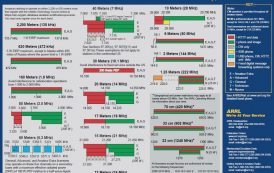
“This band-exploration video looks at the amateur 2 meter band. We walk through the band. I talk about frequency coordination and band plans. I also discuss the latest panic about whether we’ll keep the 2 meter band. ” ... Read more

Remote Antenna Switches – Ham Nation 410
July 11, 2019 No comments

Anytone D878UV+ Handheld Radio
July 04, 2019 No comments

IC-9700 Test Report by Adam VA7OJ/AB4OJ
July 04, 2019 No comments

Selecting Coaxial Cable
July 04, 2019 No comments

Elecraft KX2 VS. Xiegu X5105 QRP Radio Showdown!
June 29, 2019 No comments

Portable Power for Amateur Radio – Ham Radio Q&A
June 27, 2019 No comments

Available Operating Modes to Us New Hams [ PODCAST ]
June 27, 2019 No comments

Introducing the new SunSDR2 DX transceiver [ VIDEO ] Friesrichshafen
June 21, 2019 No comments

Yaesu FTdx101D Overview with Steve Venner
June 20, 2019 No comments

ICOM IC-7610 Review and Full Walk Through
June 15, 2019 No comments

How To Fix A Ham Radio AC Ground Loop
June 14, 2019 No comments

Portable HF Operation Kit – Ham Radio Q&A
June 12, 2019 No comments

Elecraft K4 Updates from Texas Hamcom 2019
June 12, 2019 No comments

How Do You Know Your Antenna & Radio Are Setup And Working Correctly?
June 08, 2019 No comments

WiMo PICOAPRSLITE – APRS Transceiver Module
June 07, 2019 No comments

QRP Labs Clock Kit and GPS Receiver Kit
June 05, 2019 No comments

Ham Radio HT Antenna Range Test, Diamond SRH770S
June 04, 2019 No comments

Elecraft K4 Q&A Eric Swartz WA6HHQ – NG7M @ Hamvention 2019
June 03, 2019 No comments

Safely connect several HF radios with mulltiple antennas
June 02, 2019 No comments

Ferrite Beads, Common Mode Chokes, RFI by W6LG
May 30, 2019 No comments
Recent Posts

FAA Reauthorization Act Language Serves to Exclude Vast Majority of Amateur Radio Towers
July 12, 2019 No comments
Language in the Federal Aviation Administration (FAA) Reauthorization Act of 2018 will exclude all but a small number of Amateur Radio towers from mar... Read more

HWN, WX4NHC at National Hurricane Center to Activate for Tropical Storm Barry
July 12, 2019 No comments
Responding to Tropical Storm Barry, the Hurricane Watch Net (HWN) and WX4NHC— the Amateur Radio station at the National Hurricane Center (NHC) in Miam... Read more

New Hope for the Coming Cycle | Space Weather News 07.12.2019
July 12, 2019 No comments
Read more

EXTRAFLEX BURY /.400″ – Low loss Coax Cable
July 12, 2019 No comments
EXTRAFLEX BURY /.400″ [10,3 mm / 0,405 inches Cable] WHY CHOOSE THIS CABLE: – The only 10,3mm coax that can be use bo... Read more
Show More
(adsbygoogle = window.adsbygoogle || []).push({});
Equipment

EXTRAFLEX BURY /.400″ – Low loss Coax Cable
July 12, 2019 No comments
EXTRAFLEX BURY /.400″ [10,3 mm / 0,405 inches Cable] WHY CHOOSE THIS CABLE: – The only 10,3mm coax that can be use bo... Read more

Ultra-compact transceiver Lab599 Discovery TX-500
July 07, 2019 No comments
The Lab599 Discovery covers 160-6 meters, all modes, with a maximum power output of 10 W. It comes with true desktop-radio features, like auto-notch,... Read more

Compact In-Line stereo DSP noise cancelling module -BHI
June 30, 2019 No comments
Compact In-Line stereo DSP noise cancelling module £179.95 Net Price (ex VAT) £ 149.96 Add to Cart Compact In-Line 0.270 kg Weight: A-COMPACT IN-LINE... Read more

Commradio CR-1a Receiver [ Video ]
June 27, 2019 No comments
Read more
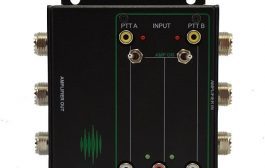
1A2R – connect two radios to one amplifier [ 4O3A ]
June 26, 2019 No comments
A2R is a switch with the capability to share one amplifier between two radios. If you have a Solid State amplifier with fast band switching, it can up... Read more

RM Italy BLA-600 Review with Martin Lynch
June 26, 2019 No comments
The BLA 600 is a wideband compact, fully automatic 500W wideband linear amplifier for the HF bands and 6m, from 1.8 to 54 MHz. Totally ideal for runni... Read more

MRF101AN: 100 W CW over 1.8-250 MHz, 50 V Wideband RF Power LDMOS Transistor
June 25, 2019 No comments
These devices, MRF101AN and MRF101BN, are designed for use in HF and VHF communications, industrial, scientific and medical (ISM) and broadcast and ae... Read more
App - Mobile
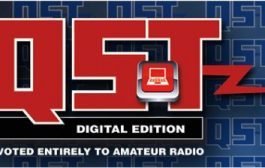
New APP for digital QST
March 25, 2019 No comments
Apple has released a new app for digital QST (version 5.1) readers that use that platform. A long-standing problem involved the inability of some Appl... Read more
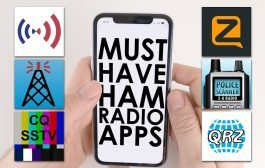
6 Must Have Amateur Radio Apps!
December 24, 2018 No comments
Read more

iWSPR TX – WSPR for iOS version 2.8 now available
October 16, 2018 No comments
WSPR WSPR implements a protocol designed for probing potential propagation paths with low-power transmissions. Normal transmissions carry a station’s... Read more
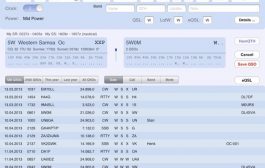
RUMlogNG2Go for iOS version 3.5.2 now available
August 19, 2018 No comments
Thomas Lindner, DL2RUM, is happy to announce the availability of version 3.5.2 of his RUMlogNG2Go logger for the iPhone and iPad. RUMlogNG2Go can be ... Read more
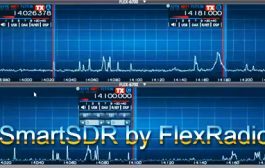
SmartSDR for iOS v2.6.2 Now Available
August 12, 2018 No comments
FlexRadio Systems announces the release of SmartSDR for iOS v2.6.2 is now available for download or update from the Apple App Store. This App requires... Read more
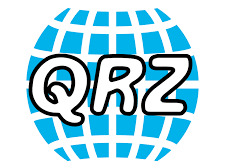
QRZ.com App for Android now in Beta Testing
May 07, 2018 No comments
The updates to QRZ’s Android App, formerly known as QRZDroid have been released and are available to those who are interested in trying it out.... Read more
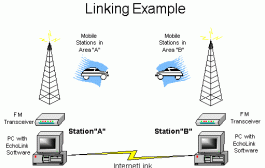
EchoLink for iOS version 2.10.18 is now available
May 07, 2018 No comments
EchoLink for iOS version 2.10.18 is now available in the App Store. This is a 64-bit build that is fully compatible with iOS 10 and modern iOS devices... Read more
Software

Video showing the suppression of a local noise source using a RSPduo and release 1.32 of SDRuno
July 12, 2019 No comments
SDRuno v1.32 release ! Read more
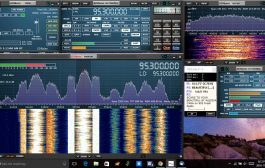
SDRuno v1.32 release !
July 09, 2019 No comments
“We are pleased to announce the release of v1.32 of SDRuno. The purpose of this release is primarily to add MRC Diversity functionality for the... Read more
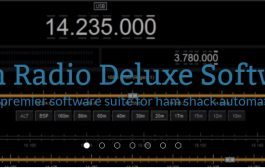
Ham Radio Deluxe version 6.6.0.236
July 01, 2019 No comments
https://ift.tt/2A04X4B Read more
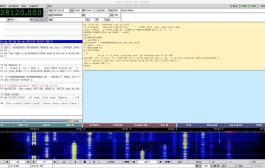
Fldigi v4.1.04 now available
June 20, 2019 No comments
The hard-working development team led by W1HKJ have announced the release of Fldigi v4.1.04. This maintaneance release of Fldigi brings several bug f... Read more
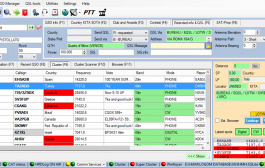
Log4OM 1.36.0 Released
June 15, 2019 No comments
Release notes Version 1.36.0 MAINTENANCE RELEASE Added support to QARTest direct QSO import in Log4OM Communicator (Inbound settings, default port is... Read more
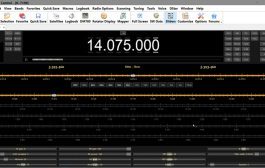
Ham Radio Deluxe Software from Hamcom 2019
June 14, 2019 No comments
“I was privileged to catch up with Mike, WA9PIE, from Ham Radio Deluxe at this year’s Texas Hamcom. He discusses some new features of his... Read more
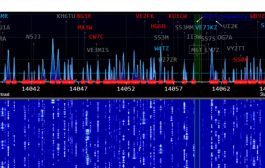
N6XI presentation to NCCC featuring the N1MM+ Spectrum Display
June 12, 2019 No comments
“N6XI made a presentation to NCCC featuring the N1MM+ Spectrum Display. It covers why you would want to use a spectrum display and why it is bet... Read more
Digital Modes

Prof Dr Joe Taylor, K1JT: Welcome Address and Questions & Answers
July 04, 2019 No comments
Read more

World Wide Digi DX Contest
June 29, 2019 No comments
The World Wide Radio Operators Foundation (“WWROF”), in collaboration with the Slovenia Contest Club (“SCC”), is pleased to announce the first annual... Read more
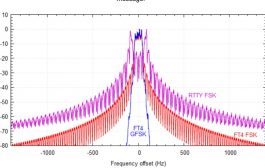
LoTW Now Accepting FT4 Contact
May 23, 2019 No comments
The latest TQSL update (Config.xml version 11.8), released on May 22, includes FT4 as a submode of MFSK. It also adds AISAT-1 and PO-101 in the satell... Read more
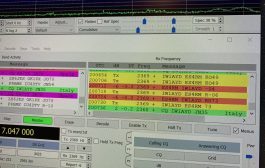
ADIF 3.1.0 was approved today
May 22, 2019 No comments
Dave Bernstein reported this on the DXLabs support group today: ————————————... Read more

FT4 vs FT8 – A new mode, what’s the difference?
May 01, 2019 No comments
The FT4 Protocol for Digital Contesting by K1JT Read more

New FT4 Mode with more 20K spots in few your hours realese
April 29, 2019 No comments
Source: LINK WSJTX 2.1.0RC5 Release! – The FT4 Protocol for Digital Contesting The FT4 Protocol for Digital Contesting by K1J... Read more

FT4 Video presentation by K1JT
April 24, 2019 No comments
See More about New FT4 Here “At about 20 minutes into the presentation, Joe describes FT4 as being asynchronous, meaning that you can start tran... Read more
The post HWN, WX4NHC at National Hurricane Center to Activate for Tropical Storm Barry appeared first on QRZ NOW - Ham Radio News.
from Daily ham news https://ift.tt/2XM5AYw via IFTTT
0 notes
Text
February 12, 2017
News and Links
Top
State channel scalability: Update from the Raiden team on development progress and RaidEX
Raiden MVP release planned for March
Not state channels: Make Ethereum massively scalable today with delayed computations
Per Vitalik, the 3 greatest challenges for the Foundation in 2017 are: 1) more revenue, 2) finding more of the right researchers, and 3) "Improving the foundation’s external communications; working on helping the community understand what the foundation is doing, why things are done the way they are done, and what the progress is."
I hope this newsletter helps with #3.
Stuff for Dapp developers
Creating an Ethereum-enabled command line tool with Truffle 3.0
Embark 2.3.0
Plugin to support es5, es6, es7 & react
Christian Reitwießner on what is and isn't possible with zk-SNARKs
Eli Ben-Sasson video presentation of zk-snarks with no trusted setup (and Reddit thread)
uml to solidity, v 1.0.9
web3j, milestone 2.0 release
Client releases
Parity 1.5.2 includes browser extension
Protocol
Video of Vlad Zamfir January talk at Stanford. [All videos from that conference.]
Erik Voorhees: "I’ve found myself now holding a modest balance of Ethereum merely for the purpose of small (not micro) payments to friends. It’s just cheaper and more reliable. And I’m doing that with more allegiance to Bitcoin than almost anyone on Earth."
Joe Lubin: "Ethereum has an ambitious, aggressive, coordinated and achievable roadmap to scalability. Bitcoin has an embattled, haphazard ongoing struggle to make the slightest progress on scalability. First system that demonstrates genuine scalability will quickly dominate."
Ecosystem
Chronicled is thinking about making an Ethereum CryptoSeal for physical assets
Cryptomarket gets some press for being the first Ether-only exchange in Latin America.
Ethers Wallet for iOS
Some folks are bringing back TheDAO and calling it Vega.
It's unmistakeable that there is some tension among core developers. This is another small bit of evidence
Both Dfinity and Santiment sold out their presales quite quickly. Dfinity in 74 mins, and Santiment in about 2 hours.
How Santiment hopes to transform crypto trading
Project Updates
Aragon - UI for managing your company (cap table, vesting, payments, voting, bylaws, fundraising and identity) on Ethereum
Colony is now in beta
Podcast interview with Firstblood's Head of Biz dev Marco Cuesta
SuperDAO Overview
Blockjack is live on the mainnet
IDEX is also live on the mainnet
Token Sales
A Beginner Guide to Polkadot and Parachains
Gnosis' design reasoning for their tokens
Their followup the next day: why so complicated?
The Cosmos Roadmap
Understanding the iEx.ec Architecture
Simon de la Rouviere: Exploring Continuous Token Models
General
Vitalik: The Meaning of Decentralization
Microsoft: Blockchain Smart Contracts for semi-trusted Consortium Networks
MSFT's Marley Gray: the 3 tiered architecture for Cryptlets
Two members of the US House formed a Blockchain Caucus.
Consensys: The UN should use Ethereum to attain its Sustainable Development Goals.
A few days after publication, Joe Lubin gave a presentation at the UN headquarters.
Vitalik on what non-coders can do for Ethereum
"As the relationship with Dubai deepens, ConsenSys is taking additional office space in Dubai and increasing personnel in the region." -- IBTimes
Nick Szabo: Money, blockchains, and social scalability
Dates of note
Feb 13 – Etheroll token sale begins
Feb 14 – Chronobank sale ends
Feb 15 – Melonport sale begins (must check a box that you aren’t US Citizen)
Feb 17-18 – Ethereum Euro Dev Conference in Paris
Feb 27 – Intellisys private equity “Mainstreet fund” sale begins (closed to US/EU citizens, KYC done by exchange for initial purchase and for dividends)
Feb 28 – Contingency sale ends
Mar 1 -- WeTrust token sale begins (1st day bonus, weekly price changes)
Mar 1 -- Qtum sale begins
Mar 15 -- SuperDAO token sale begins
“Feb/Mar” – iEx.ec token sale begins
“Feb/Mar” – Gnosis token sale likely to begin
"Feb/Mar" – Humaniq token sale begins
“Late March” – Matchpool token sale begins
[I aim for a relatively comprehensive list of Ethereum sales, but make no warranty as to even whether they are legit; as such, I thus likewise warrant nothing about whether any will produce a satisfactory return. I have passed the CFA exams, but this is not investment advice.]
This is issue 26, so the newsletter has been around for half a year!
Thank you for reading and subscribing. It's been a joy to write, even if occasionally some issues feel like work. I'm thankful for all the tips, praise, links, and upvotes. I'm also particularly thankful to have so many more smart people to chat with about Ethereum.
Daily updates? Since early January, I've been considering doing daily updates. I may test it out at some point soon. Let me know at [email protected] if you would subscribe to daily updates.
Last week I asked for upvotes, and it worked. I appreciate it. The posts on r/ethereum and r/ethtrader both got many more upvotes than recent weeks. The newsletter also added 56 subscribers last week, which is good mean-reversion to the long-term average.
Link: http://www.weekinethereum.com/post/157186387648/february-12-2017
(Please use the weekinethereum.com link!)
Just in case you want to send Ether (or tokens?): 0x96d4F0E75ae86e4c46cD8e9D4AE2F2309bD6Ec45
Did someone forward this issue to you? Sign up to receive the weekly email.
1 note
·
View note